Ferries, Bridges and the Inner Harbor
Ferries, Bridges and the Inner Harbor ray Wed, 04/21/2010 - 00:08- 1123 views
1930 War Memorial Bridge
1930 War Memorial Bridge ray Wed, 04/21/2010 - 00:18- 739 views

The 1930 War Memorial Bridge, a two mile, two-lane span, was the first bridge to cross Biloxi Bay uniting Ocean Springs with Biloxi. As early as 1925, James K. Lemon (1870-1929), Jackson County Beat Four Supervisor and other, community leaders in Ocean Springs were campaigning for this bridge with the prognostication that it would geometrically increase land values and double the population on the east side of Biloxi Bay. This bridge was also the last link in the thirty-two miles of bridges on "The Old Spanish Trail" between New Orleans and Mobile. More pragmatically, the span reduced the road mileage to Biloxi by seven miles. When completed, the 1930 War Memorial Bridge was the second largest WW I Memorial in the Nation,exceeded in size only by The Soldier's Field, home of the NFL Chicago Bears, and situated on Lake Michigan.(The Jackson County Times, October 10, 1925, p. 5 and July 20, 1929, p. 2)
Dedication day
This impressive structure was dedicated on June 3, 1930 and named The War Memorial Bridge to honor the men and women of Harrison and Jackson County, Mississippi who had served during WW I. The scenario of the day was Army and Navy airplanes flying overhead; the fishing fleeting and Coast Guard cruising Biloxi Bay; parading by Confederate veterans here for their 40th Reunion and the Coast Guard Patrol, and American Legionnaires with music by the U.S. Marine Band. Lois Murphy, daughter of Thomas M. Murphy, Commander of the American Legion Post at Ocean Springs and Jack Tardy, son of E.H. Tardy, American Legion adjutant of Biloxi, cut a silk ribbon officially opening the Biloxi Bay span. The War Memorial Bridge was christened with a bottle of artesian water broken on the span's safety railing by Sara H. Lemon Anderson (1911). She is the daughter of J.K. Lemon and Sarah George McIntosh Lemon (1884-1939). The dedication ceremonies concluded with speeches by Dan W. Spurlock, national committeeman of the American Legion, and Rear Admiral Thomas P. Magruder (1867-1938).(The Daily Herald, June 3, 1930, p. 1)
Construction
In July 1926, the Harrison County Board of Supervisors adopted a resolution to request Federal assistance for a span across Biloxi Bay between Ocean Springs and Biloxi. This resolution was presented to Mississippi State Highway Commission by a committee consisting of Biloxians-Louis Braun, E.C. Tonsmeire, and Sparks Vignes. Other members were: E.J. Adams Sr., president of the Harrison County Board of Supervisors; Paul Evans, Supervisor Beat 1?; and J.K. Lemon, Supervisor of Beat 4-Jackson County. Walter Nixon, Supervisor Beat 1, believed that construction of this vital link could be commenced in the fall, if Federal financial support was obtained.(The Biloxi News, July 11, 1926, p. 1)
A public meeting was held at Biloxi in late October 1927 concerning the location and navigational consequences of a bridge across Biloxi Bay. Major Emerson of the War Department was opposed to a span adjacent to the L&N Railroad Bridge. The meeting ended with the citizens of Biloxi and Ocean Springs making an with Major Emerson to meet soon and select an appropriate site for the Biloxi Bay Bridge. In attendance from Ocean Springs were: J.K. Lemon, John P. Edwards, William S. VanCleave Sr. (1871-1938), William S. VanCleave Jr. (1899-1947), Stewart C. Spencer (1867-1959), Frederick E. Lee (1874-1932), Edwin A. Clark (1853-1936), Jack G. Little (1882-1937), John O'Keefe (1891-1985), Dr. Albert Babendreer (1867-1938), Edward P. Guice (1899-1971), Frank Joachim (1882-1970), Edward (sic) Berthaut (1870-1939), and Orin D. Davidson (1872-1938).(The Jackson Times, October 29, 1927, p. 3)
In July 1928, the Fuller Construction Company of Memphis, Tennessee were awarded the contract for construction with their bid of $737, 051. The State Highway department had estimated the span to cost $852,000, which was to be approximately 2.02 miles in length with approaches. The reinforced concrete part of the new structure was 1.48 miles.(The Jackson County Times, July 14, 1928, p. 3)
Preliminary work on the new Biloxi Bay Bridge commenced in July 1928. The Fuller Construction Company drove test pilings for the structure. Construction was delayed (The Jackson County, Times, August 4, 1928)
By July 1929, with about 200 men employed and earning approximately $5000 weekly, Fuller Construction Company was progressing at two spans of seventy-two feet each day. Completion of the Biloxi Bay span was anticipated by Christmas 1929. Eight hundred seventy-five concrete pilings, which were two-feet square and varied in length from thirty five to seventy-five long, were built in Biloxi. When utilized, eight pilings were placed on a barge and towed to the construction site to be driven at least two months before they could be used for supports. Twenty thousand cubic yards of concrete and 2,000 tons of steel barged from Pittsburg via New Orleans were used in the bridge's construction. The road bed was twenty feet wide with a four-foot sidewalk for pedestrian traffic. The span's draw was built of structural steel with a length of 283 feet, while its navigational channel was 120 feet wide and the bridge was protected from boat collision damage by fenders.(The Jackson County Times, July 20, 1929, p. 2 and The Daily Herald, June 2, 1930, p. 2)
1943 accident
On August 31, 1943, a car traveling southwest to Biloxi, failed to properly stop with the draw open and plunged through the safety guard arm into Biloxi Bay. Clayton Edgar Starnes (1885-1943), the son of E.C. Starnes and Jane Holley, and William Curtis Rogers (1926-1943), both residents of Ocean Springs, drowned in this tragedy. Mr. Starnes from Alabama was employed as a mess attendant at the Veterans Administration Hospital in Biloxi. His wife, Claudie W. Starnes, moved to Meridian after the accident. Two others survived the plunge and were rescued from the water.(The Daily Herald, August 31, 1943, p. 1)
Fishing bridge
After the 1962 Biloxi Bay Bridge was opened, the draw of the 1930 War Memorial Bridge was removed and the old span became a fishing pier for residents of Harrison and Jackson Counties. The structure was destroyed during Hurricane Katrina on the morning of August 29, 2005. At its City Council meeting in early December 2005, the Board of Aldermen and Mayor of Ocean Springs voted in unison to draft a later requesting Jackson County officials to permit FEMA to remove the derelict span and fund the construction of a surrogate structure to serve as a community, fishing pier.(The Sun Herald,
Bridgeport Marina
Jackson County Board of Supervisors to consider leasing old bridge to Loris Bridges' company called Bridgeport Marina.(The Ocean Springs Record, November 7, 1985, p. 2)
Weill Heirs Inc.
In February 1993, David A. Wheeler, as Guardian Ad Litem of Jeanette D. Weill, conveyed the Weill property to Weill Heirs, Inc.(JXCO, Ms. Land Deed Bk. 1012, p. 209)
Loris C. Bridges
In October 1994, Loris Cayce Bridges acquired a lease from Weill Heirs, Inc.. Jolene W. Aultman, president and Donna Weill, secretary. The old Allman’s Restaurant building was utilized as the office for Bridgeport Marina, a project thought still viable by Mrs. Bridges. Again Mrs. Bridges failed to attract investors and her proposed marina project was never commenced.(JXCO, Ms. Land Deed Bk. 1051, p. 628)
Grand Marina
In the summer of 2004, investors again are speculating that a marina can be situated on the former 19th Century home site of the Reverend Joseph B. Walker. Grand Marina, a project consisting of 120-unit condo, restaurant, and marina to accommodate 400 vessels, is now in the offing. The old Allman’s Restaurant building was also demolished in the summer of 2004, in the anticipation of new construction.(The Bay Press, October 22, 2004, p. 10)
REFERENCES:
The Biloxi News, "Ask Federal aid to build bridge", July 11, 1926.
The Daily Herald, "Complete Bay bridge January 1", February, 1929.
The Daily Herald, "Biloxi-Ocean Springs Span Took 18 Months To Construct", June 2, 1930.
The Daily Herald, "New Bay Span Is Dedicated", June 3, 1930.
The Daily Herald, "Two Drown When Car Goes Through Open Drawbridge", August 31, 1943.
The Jackson County Times, "Local and Personal", October 10, 1925.
The Jackson County Times, "Bridge Location Disapproved by U.S. War Department", October 29, 1927.
The Jackson County Times, "Memphis Firm Gets Big Bridge Contract", July 14, 1928.
The Jackson County Times, "Local and Personal", August 4, 1928.
The Jackson County Times, "Construction On Bay Bridge", July 20, 1929.
The Ocean Springs News, "Opened bridge 36 years ago [photos]", November 4, 1965, p. 1.
The Ocean Springs Record, "County to consider leasing bridge", November 7, 1985.
The Ocean Springs Record, "Bridges, Harris jostle for rights to old bridge", June 10, 1993, p. 3.
The Ocean Springs Record, "Investor bridges marina holdup", December 21, 1995, p. 1.
The Ocean Springs Record, "Fishing bridge latest Katrina victim", December 8, 2005, p. A1.
The Sun Herald, "Ocean Springs-City Council to ask FEMA for new bridge", December 8, 2005, p. A10.
1962 Biloxi Bay Bridge
1962 Biloxi Bay Bridge ray Wed, 04/21/2010 - 00:21- 1610 views
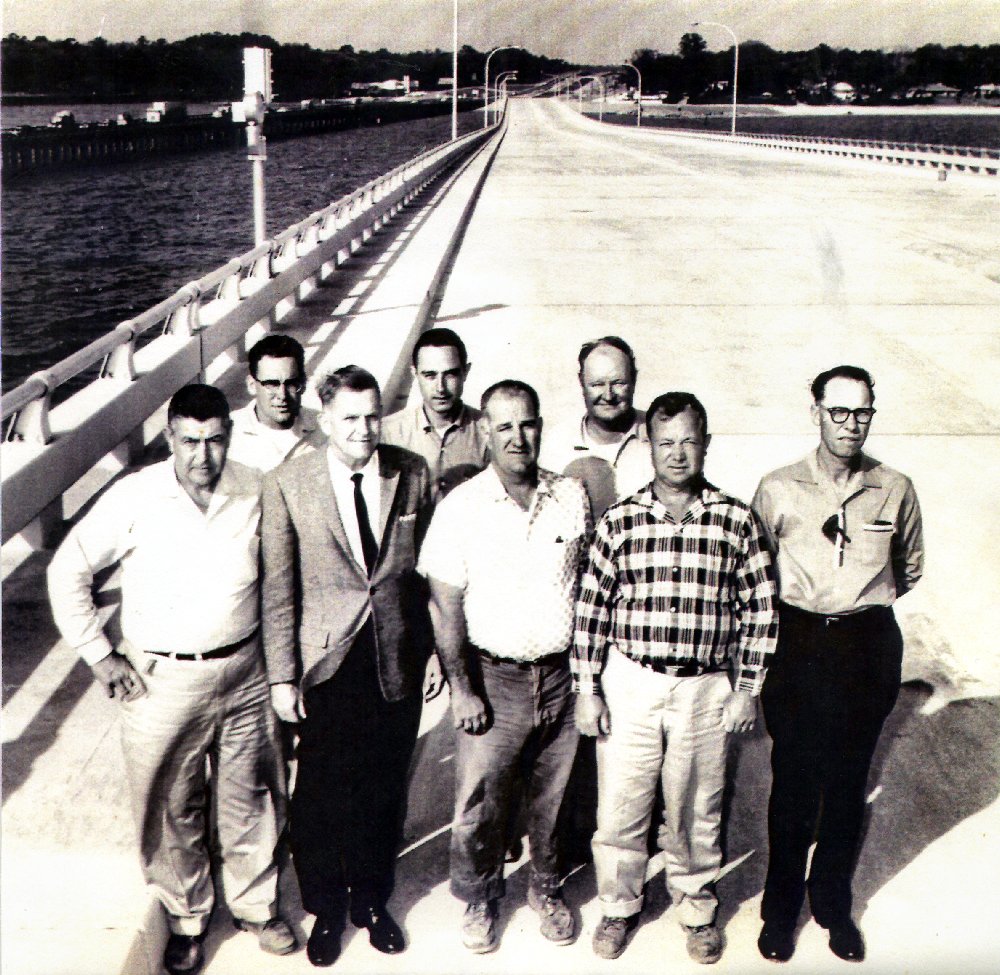
Pre-opening 1962
(Courtesy of Elaine Ryan Miller)
This US 90 Highway span, a four-lane bridge with a jack knife draw, the second to cross Biloxi Bay, was erected by the J.B. Michael Construction Company at a cost of $7,000,000. Michael employed approximately 150 men to erect this structure. About 50 men were employed at their concrete plant on Clay Point at Biloxi. This bridge was dedicated on May 9, 1962.(The Daily Herald, March 26, 1959, p. 1 and June 8, 1961, p. 5 and The Ocean Springs News, May 3, 1962)
George L. Lemon (b. 1908), an MDOT Civil Engineer who was reared at Ocean Springs, was prominent in the design and construction of this structure. At the time, this span was the longest ever built by the State of Mississippi.(The Ocean Springs News, May 3, 1962)
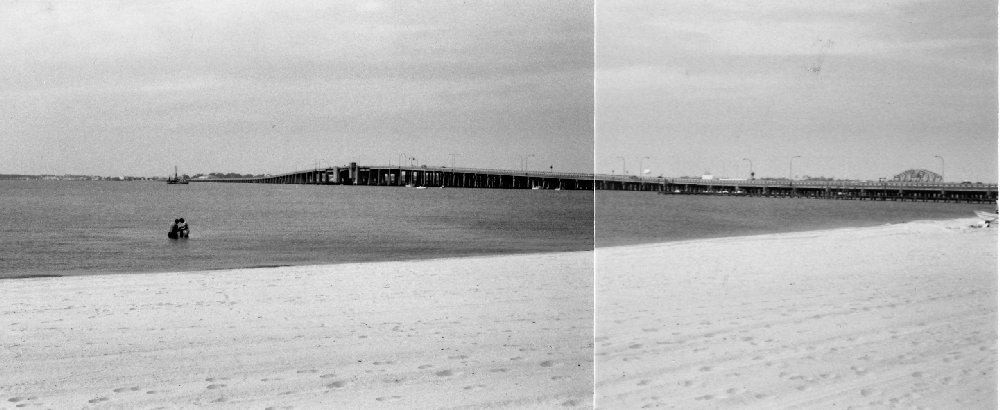
(image made October 1990)
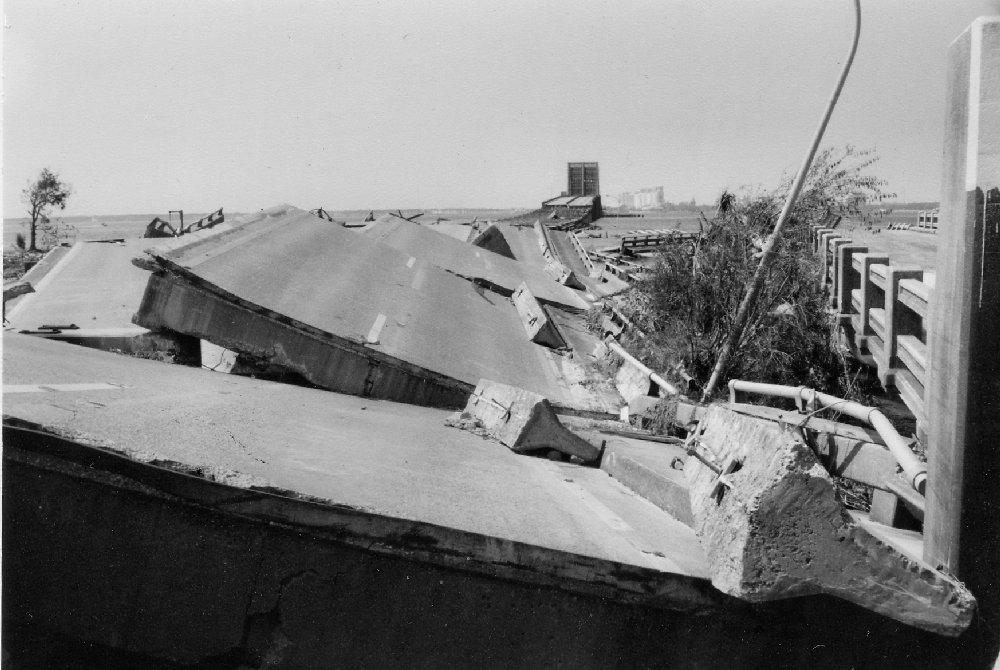
(image made September 2005)
Hurricane Camille 1969
After Hurricane Camille in August 1969, the L&N Railroad commenced a passenger shuttle service between Pascagoula and Gulfport to alleviate automobile traffic resulting from the damage to the US Highway 90 Bridge across the Bay of Biloxi. There were passenger stops at Ocean Springs, Biloxi, Keesler AFB, Beauvoir, and Mississippi City. The cost was $.50 per trip. The temporary rail service was terminated on September 19, 1969, after bridge traffic commenced on US 90 across Biloxi Bay.(The Ocean Springs Record, September 11, 1969, p. 1 and September 25, 1969, p.1)
Hurricane Katrina 2005
REFERENCES:
The Daily Herald, "Plan June Opening of Bids On New Bay of Biloxi Bridge", March 26, 1959, p. 1.
The Daily Herald, "New Bridge Is Half Complete, Contractor Says", June 8, 1962, p. 5.
The Ocean Springs News, "Longest span built by State; savings noted", May 3, 1962, p. 2.
The Ocean Springs News, "Lemons prominent bridge history", May 3, 1962, p.
The Ocean Springs News, "Bridge dedication next Wednesday", May 9, 1962, p. 1.
The Ocean Springs Record, "L&N Ease Traffic by Passenger Shuttle", September 11, 1969.
The Ocean Springs Record, "Shuttlin off for good", September 25, 1969, p. 1.
2008 Ocean Springs - Biloxi Bay Bridge
2008 Ocean Springs - Biloxi Bay Bridge ray Wed, 04/21/2010 - 00:24- 1100 views
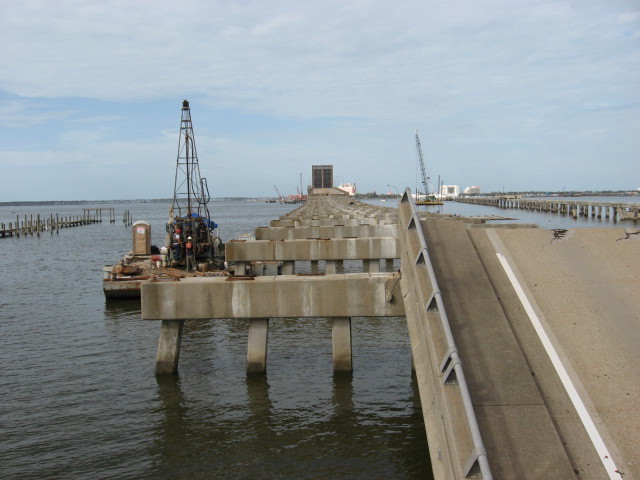
1962 US Highway 90 Biloxi Bay Bridge
[Removal of the Katrina damaged 1962 US Highway 90 Bridge began in July 2006. Core drilling to evaluate foundation conditions for the new span were in progress, as well.]
Image made July 25, 2006 by Ray L. Bellande
In mid-October, 2005 The Mississippi Renewal Forum, a team of national architects, planners, and public officials met in Biloxi with their local counterparts, to “redesign” the severely damaged and partially destroyed Mississippi Gulf Coast. Andres Duany and James Barksdale oversaw the meetings at the Isle of Capri Hotel and Resort. Mayor Moran and her board with local architects, Henry Hansell Furr and Dennis Cowart, were an integral part of these planning sessions.(The Sun Herald, October 17, 2005, p. A1)
When the planning sessions began to rebuild a new US Highway 90 bridge across Biloxi Bay to reunite Ocean Springs with Biloxi, Mayor Moran had extensive discussions with MDOT (Mississippi Department of Transportation) to assure that certain aesthetic and safety issues were met. Her goal was for "a signature bridge,....beautiful, one that can be used for Ocean Springs postcards or the next 60 years." Following one conference, Mayor Moran quoted that MDOT's first plans for rebuilding the bridge would have meant that "we ended up with a lot of concrete spaghetti on our beach, and that was not acceptable." Ms Moran persuaded MDOT to add a protected pedestrian-bike lane, a promenade from the Ocean Springs Yacht Club to pass beneath the structure, decorative concrete and lighting, and landscaping.(The Sun Herald, November 8, 2005, p. A4)
On December 6, 2005, Wayne Brown, MDOT Southern District Commissioner, announced that MDOT would erect a six-lane, one hundred twenty-eight foot wide, bridge across Biloxi Bay. Mayor Moran opposed this plan and favored a smaller, four lane span. Ocean Springs was the only coast city to oppose the bridge because of its scale and fact that it was counter to a plan by New Urbanists to down size US Highway 90 to a pedestrian boulevard. In support of Mayor Moran, the Board of Aldermen of Ocean Springs voted 4-3 to draft a letter to the Federal Highway Commission voicing opposition to the larger bridge.(The Sun Herald, December 7, 2005, p. A1 and p. A8)
In late December 2005, Mayor Moran wrote the Federal Highway Administration requesting MDOT's scheme for erecting a six-lane bridge across Biloxi Bay rather than a smaller span preferred by the City Council of Ocean Springs. MDOT Executive Director Butch Brown replied to Moran's request: "I think it's unfortunate that Mayor Moran has taken this bridge issue when indeed her community is actually in better shape than most on the Coast. Her historic area and district are largely unaffected by the bridge. She's tried to use the bridge to get other concessions." The Biloxi City Council, Harrison County Board of Supervisors, and voted unanimously to erect the six-lane bridge. Mayor Moran even lost support of her own county leaders as the Jackson County Board of Supervisors supported Brown's six-lane bridge. She was lauded by the Board's president for extracting concessions from MDOT in the form of a bike path, decorative concrete, and unique lights.(The Sun Herald, December 23, 2005, p. A1 and p. A9 and The Sun Herald, December 29, 2005, p. A1)
Ferry?
A temporary solution to the Biloxi Bay crossing post-Katrina would be to run a ferry from Ocean Springs to Biloxi and back. This was suggested at the Mississippi Renewal Forum held at Biloxi in October 2005. Forum participants assigned to Ocean Springs created a hypothetical area called “The West End Landing”. It would encompass that area around the OSYC property and the proposed new US Highway 90 span. Here a ferry landing and trolley or rail stop could be located.(Miss. Renewal Forum, 2005, p. 48)
MDOT admitted that it had no experience with temporary ferry service. Pacific Marine Technical Service of Bainbridge, Washington, a consulting group, was hired to study the feasibility of ferry service at Ocean Springs as well at Bay St. Louis. A report was expected from the consultants at the end of April.(The Sun Herald, April 20, 2006, p. A2)
By early June 2006, Pacific Marine Technical Service had not finished its feasibility study for a ferry system for Biloxi Bay and the Bay of St. Louis to provide transportation crossings of these two waterways whose US Highway 90 bridges were rendered useless after the devastating storm surge of Hurricane Katrina in late August 2005. Preliminary investigations indicate that the difficulty to operate a ferry near the existing roadway on both bays are many and varied. Jim Moak, director of MDOT’s ports and waterways division, related that at present, the problems appear to be insurmountable. Among the onerous conditions expected are: construction equipment for the new bridges will be situated in the immediate area of the most optimum ferry routes and dredging to remove storm debris and its deleterious effect on oyster reefs and other marine organism habitats along the proposed ferry routes. At Ocean Springs, MDOT is studying an alternate location for the Biloxi Bay ferry, which would run from the Fayard Seafood site at the foot of Jackson Avenue to a landing on Point Cadet in east Biloxi.(The Sun Herald, June 7, 2006, p. A2)
In September 2006, bids were submitted for a ferry system to operate across the Bay of St. Louis from Henderson Point in Harrison County to Bay St. Louis in Hancock County. MDOT took bids assuming that the Federal Highway Administration would pay all costs for the public ferry service. MDOT required the following from perspective bidders: two vessel; each vessel must be capable of a least thirty-five vehicles; ferries should operate at a minimum speed of 11.5 mph and maintain a 45-minute schedule; ferries should operate seven days a week from 6:30 a.m. until 6:30 p.m.; and the draft of the ferries will not exceed 5 ½ feet.(The Sun Herald, September 12, 2006, p. A5)
In late September 2006, Hornblower Marine Services of New Albany, Indiana was awarded the contract to operate the ferry across the Bay of St. Louis. Hornblower has two ferries running in Alabama, the Mobile Bay Ferry and the Gees Bend Ferry. MDOT aspired that the company commence hauling motorcars at no cost to the patron by November 1st. The Federal Highway Department Emergency Relief Fund will pay for the service. Hornblower related that their twin ferry service could transport 748 motorcars daily across the Bay of St. Louis for approximately $30 dollars per vehicle. The last traffic count in 2005 found that 19,000 cars crossed the U.S. 90 span each day between Henderson Point and Bay St. Louis.(The Sun Herald, September 20, 2006, p. A2 and September 25, 2006, p. A1)
Also in late September 2006, MDOT awarded two contracts for dredging, pile driving, and materials to erect ferry terminals on opposite sides of the Bay of St. Louis and roads to reach them. The contracts were valued at more than $2.3 million dollars.(The Sun Herald, September 25, 2006, p. A1)
Bridge height
In early January 2006, Mayor Moran met with Federal and State officials to continue her campaign against the six lane span across Biloxi Bay. She addressed the issue of the projected growth rate of traffic flow used by MDOT as the basis for the large structure. Moran's consultants argued that MDOT had incorrectly interpreted the rate of increase by changing the traffic flow data, especially for the year 2004, when the daily traffic count on the U.S. 90 bridge actually decreased. Another factor not previously considered in the bridge study was the fact that a drawbridge would be needed to allow large vessels built at the Trinity Yacht shipyard on the Industrial Seaway at Gulfport to gain access to the Gulf of Mexico via Biloxi Bay. MDOT's plan for the new bridge called for no draw, but an 85-foot clearance for boats. (The Sun Herald, January 4, 2006, p. A2)
By mid-January, Northrop Grumman Ship Systems also voiced its negativity for a bridge without a draw span. They also have a fabrication plant on Industrial Seaway, which has plans to build composite masts and deckhouse superstructures for the USCG and US Navy. A fixed height bridge across Biloxi Bay would limit their ability to build larger ship components, especially for the military. (The Sun Herald, January 19, 2006, p. A2)
Proposals
On January 13, 2006, technical proposals were submitted to MDOT for the erection of the new span across Biloxi Bay. Companies that demonstrated an interest in this venture were: American Bridge-Hill Brothers, Orlando, Florida; GC Constructors, Kansas City, Missouri; and Granite Archer Western, Watsonville, California. .(The Sun Herald, January 13, 2006, p. A3)
Delay?
By mid-January, the USCG had not approved the Biloxi Bay bridge as proposed by MDOT. It was postulated that issues fielded during public hearings that had not been addressed were the salient reason that the USCG had not signed off on the bridge as presented. The lack of a draw span which would prohibit high profile vessels from ingress-egress into the Back Bay of Biloxi by several industries located on the Harrison County Industrial Seaway was a serious issue not addressed in the MDOT initial proposal. Wayne Brown, Southern District Highway Commissioner, commented that the addition of a draw would cost an additional $70 million to $80 million to the estimated $200 million dollar structure. A year to a year and half delay in completion was expected if a new bridge had to be designed. Some Harrison County representatives to the State Legislature and the Harrison County Development Commissioner expressed doubt about Commissioner Wayne Brown’s assessment of the time to redesign a bridge to meet the needs of the shipping industry on the Industrial Seaway. One spokesman viewed it as a threat(The Sun Herald, January 21, 2006, p. A1 and January 25, 2006, p. A1)
Bid day
Only one bid was received by MDOT for the Biloxi-Ocean Springs Bridge. Granite Archer Western, a consortium of several construction companies, submitted a proposal of $275,900,000. MDOT had estimated the cost at $200,000,000, which was obviously disappointing. Granite Archer Western was also low bidder on the Bay of St. Louis Bridge, which received only two offers from contractors.(The Sun Herald, January 24, 2006, p. A1)
Boh Brothers Construction Company declined to bid on the Ocean Springs-Biloxi span because MDOT placed according to Boh Brothers, an onerous clause in the bid contract was added one week prior to bid opening. The language in the addendum was interpreted to be “open ended” and Boh Brothers felt the risk was beyond their tolerance.(The Sun Herald, March 29, 2006, p. A4)
Temporary bridge?
An even larger span?
As a compromise with ship and yacht builders on the Industrial Seaway-Back Bay corridor and the Harrison County Development Commission, Butch Brown, director of MDOT, proposed to raise the height of the new bridge to 95 feet and dredge the channel beneath the structure to allow deeper draft vessels to utilize it. The US Coast Guard had issued a permit for a bridge with a vertical clearance of 85 feet and horizontal of 150 feet clearance for boat traffic. Governor Haley Barbour approved the MDOT compromise proposal, which was submitted to primarily appease Northrop Grumman and Trinity Yachts, both with shipbuilding facilities on the Industrial Seaway. These industries were proponents of a draw bridge. The new specifications for the bridge could result in several months delay for the only bidder, Granite Archer Western, to redesign the span based on a height of 95 feet above the water.(The Sun Herald, February 22, 2006, p. A1 and p. A6)
Wayne Brown, Southern District Transportation Commissioner (SDTC), related that MDOT had several options in regards commencing construction of the new span across the Bay of Biloxi: award the contract based on the 85-foot design and try to negotiate with Granite Archer Western on a price for adding 10 more vertical feet or re-advertise the project with the 95-foot vertical clearance and accept a delay of several months for a new design and the possibility of additional bidders. The final decision rested with MDOT’s legal staff and the Federal Highway Administration, who is financing most of the project.(The Sun Herald, February 22, 2006, p. A1 and February 28, 2006, p. A1)
Rebid
In early March, Wayne Brown, SDTC, announced that that MDOT had decided to re-bid the Ocean Springs-Biloxi Bridge based on the new specifications, i.e. 95-foot vertical clearance. Those invited to submit bids were: GC Construction of Kansas City, Missouri, Yates/Hill of Philadelphia, Mississippi, and the initial bidder Granite Archer Western of Watsonville, California. Granite Archer Watson stated that it if they won the new bid, the earliest that their company could initiate construction on the Biloxi Bay crossing would be September 2006, a delay of six months because of their work on the Bay of St. Louis span. Commissioner Brown speculated that by August 2007, two lanes of traffic would be open on the new Ocean Springs-Biloxi span and that the bridge would be finished by June 2008. Wayne Brown stated that technical proposals for the new span would be accepted on May 26th and cost proposals on June 6th. It was anticipated that the cost proposal for the structure could exceed $300 million.(The Ocean Springs Record, March 9, 2006, p. A1 and The Sun Herald, April 8, 2008, p. A11 and May 26, 2006, p. A2)
On the appointed day in late May, three technical bid proposals were received by MDOT on the Ocean Springs-Biloxi Bay span: Granite Archer Western, Watsonville, California; GC Constructors, Kansas City, Missouri; and Yates/Hill Brothers, Philadelphia, Mississippi. Harry Lee James, MDOT chief engineer, expects the wining bid will range between $275 and $325 million dollars. The bridge contract will specify that two traffic lanes be open across the span in September 2007, and completion of the multilane structure by March 2008.(The Sun Herald, May 27, 2006, p. A2)
On June 5, 2006, GC Contractors of Kansas City, Missouri submitted the winning bid of $338.6 million for the 95-foot high, replacement span across Biloxi Bay destroyed by Katrina in late August 2005. The completed structure will have six traffic lanes, four breakdown and emergency lanes, and a bicycle-pedestrian path. GC Contractors planned to have two lanes open to traffic by mid-November 2007 and a completed bridge by late April 16, 2008. Granite Archer Western, who is building the Bay St. Louis replacement bridge, bid $343.8 million dollars on the Biloxi Bay bridge. Yates/Hill, a Mississippi company, bid $384.4 million dollars.(The Sun Herald, June 6, 2006, p. A1 and June 17, 2006, p. A3)
GC Contractors were formally contracted by MDOT to erect the Biloxi Bay span on June 6, 2006.(The Sun Herald, June 7, 2006, p. A2)
Draw inspection
In April 2006, tug boat captains navigating the Biloxi Channel and passing through the Ocean Springs-Biloxi span reported that one of the bascule leaves had shifted. On April 17th, MDOT engineers inspected the bascules, which had been “frozen” in the up position since they were manually raised following the loss of electric power, which had occurred during Hurricane Katrina. Their observations were that the bascules have not moved and that the vertical clearance for marine travel was safe.(The Bay Press, April 28, 2006, p. 3)
Demolition
The Katrina damaged Bay St. Louis Bridge was demolished in June 2006. Approximately 100,000 tons of concrete refuse will be utilized to create artificial reefs in the Mississippi Sound and repair the damaged Square Handkerchief Shoals about three miles south of the derelict span.(The Sun Herald, June 10, 2006, p. A1)
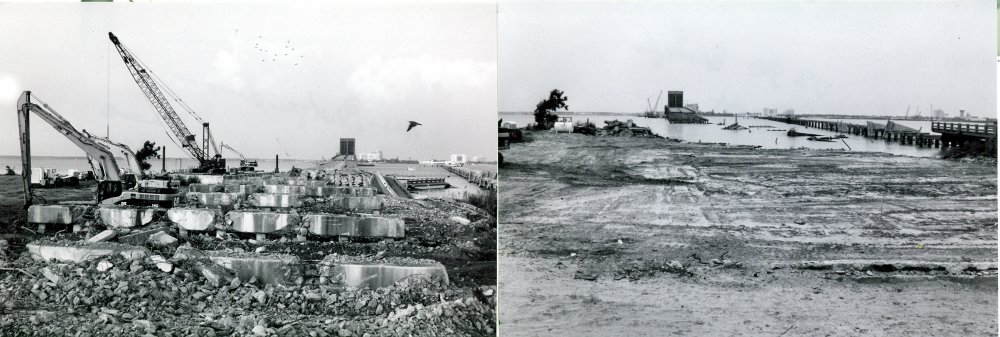
Demolition, removal, and dredging at Ocean Springs
[l-r: image August 2006; image September 2006 looking south; image November 2006]
Preliminary progress
In early July 2006, derrick barges began clearing the Katrina wrecked, US Highway 90 Bridge across Biloxi Bay. Also a barge-mounted, core drill began soil borings at selected sites in Biloxi Bay for civil engineers to determine foundation properties.(Observation by Ray L. Bellande)
Moran’s decorative accents rejected, BUT.............
At a meeting called by MDOT and held in Biloxi on July 26th, Mayor A.J. Holloway of Biloxi; Frank Leach, District Four Supervisor-Jackson County; Bobby Eleuterius, District One Supervisor-Harrison County; and Donovan Scruggs, City Planner for Ocean Springs, and Mayor Connie Moran’s surrogate, to vote on accents for the $338.6 million dollar span across Biloxi Bay, Ms. Moran’s ideas for decorative elements on the bridge abutments was rejected 3-1. Mayor Moran commented that Frank Leach had, “thrown Ocean Springs under the bus” for voting to have the abutments finished plain. The options for decorative accents were a raised Fleur de Lys and several boat designs. Donovan Scruggs commented post-vote that the choice to select none of the decorative proposals would create, “a nice concrete bunker.” The group selected olive as the color for the exterior beams of the bridge and an off-white color for the bicycle-pedestrian path. Mayor Holloway commented that Mayor Moran, “wants her way all the time. She got her way on the walking and bicycle path, which cost us I don’t know how much more than to leave off, and I don’t think anybody will use it.”(The Sun Herald, July 27, 2006, p. A1)
In a press conference held two days after her proposed aesthetics for the new Biloxi Bay bridge were rejected by Mayor Holloway and Supervisors Leach and Eleuterius, Mayor Moran related that all of her design proposals were in the budget and that they would not retard the scheduled completion date. Mississippi Transportation Commissioner, Butch Brown, had told Moran that he would consider her ideas on the Ocean Springs side of the span.(The Sun Herald, July 29, 2006, p. A1)
Mayor Moran made a public statement in early August 2006, relating that the City of Ocean Springs had negotiated with MDOT as early as September 2005 in regards the aesthetics of the new Biloxi Bay span. A compromise was made between the two entities and the resulting design description was written on what became known as "the gold sheet." The Gold Sheet was presented to to perspective bidders on the project, thus including the compromised aesthetic improvement requested by Ocean Springs in the budgeted bridge. Moran was not particularly disturbed by the negativity of Mayor A.J. Holloway et al. She told the public that, "The gold sheet as we are told time and time again, is really carved in stone. That's what we negotiated on the front end that we were assured would be included in the bridge design project." MDOT's Wayne Brown, Southern District Commissioner, stated that, "Ocean Springs got a great deal in the negotiations on the bridge. They got an attractive. It's going to have decorative lights. It's going to have down lighting. It is going to have a bike and pedestrian pathway. It's going to have see through rails. it will have an under trail where you can walk under the bridge. The bridge was brought down to the ground at water's edge. So Ocean Springs has been well treated by MDOT and also the Federal Highway Administration." (The Ocean Springs Record, August 3, 2006, p. A1)
By late August, the aesthetics of the planned Biloxi Bay span appeared to be solved, as Butch Brown, MDOT executive director and former Mayor of Natchez, agreed that MDOT would erect a wall on the Ocean Springs side of the structure that would surround the bridge abutment from the shoreline to the span. This wall would be the locus for local artists to create a mosaic or some other creative design. Mr. Brown said, "This is going to be the damnedest, most beautiful bridge you have ever seen. Connie Moran is going to run up and give me a hug."(The Sun Herald, August 19, 2006, p. A3)
Viewers admonished
In late August 2006, MDOT requested that public viewing of the demolition of the old span and erection of the new Ocean Springs-Biloxi Bridge be restricted to certain areas at a safe distance from the construction sites on both ends of the span. At Biloxi, designated “viewing sites” were the former J.L. Scott Marina parking lot adjacent to the Isle of Capri Casino and from Cadet Street. At Ocean Springs, curiosity viewers were advised to observed from Front Beach Drive.(The Bay Press, September 1, 2006, p. 15)
December 2006
Steve Underwood, project director for GC Constructors, a joint venture of Massman Construction Company of Kansas City, Missouri; Kiewit Southern Company of Peachtree City, Georgia; Traylor Brothers of Evansville, Indiana; and Parson Transportation Group of Pasadena, California. announced in early December 2006, that the Biloxi Bay span was on schedule for the planned two-lane opening on November 13, 2007, with a completion anticipated in April 2008. At this time there are about two hundred and twenty five people employed on the project. This number will reach a maximum of three hundred. One quarter of the pilings have been driven for the new bridge. Twelve of the seventy-two piers have been completed. Forty percent of the old bridge has been demolished and the ruins deposited south of Deer Island to construct artificial fishing reefs.(The Sun Herald, December 8, 2006, p. A2 and The Ocean Springs Record, January 18, 2007, p. A1)
On December 18, 2006, the first series of beams were set on piers on the Biloxi side of the Ocean Springs-Biloxi span. Wayne Brown, Southern District Highway Commissioner, stated that the bridge construction appeared to be ahead of schedule. Two lanes are anticipated to be open on November 13, 2007.(The Mississippi Press, December 19, 2006, p. A-4)
January 2007
By 1 January 2007, the westbound land from the Biloxi end of the span was progressing well as 41 of the 69 piers had been completed. Also about half of the 2300 cubic yards of concrete that had been poured for the bridge piers in December 2006 was at the main span where the footing for Pier 53 and the columns and struts for Piers 52 and 53 were poured. At Ocean Springs, the overpass crossing the CSX RR tracks was also the scene of much activity, as the north side of the U.S. Highway 90 eastbound embankment had been raised to its new grade level with fill dirt and the retaining wall to support it was in place. Concrete piles and substructure work was also progressing well on the westbound lane of U.S. Highway 90 CSX RR crossing.( The Ocean Springs Record, January 18, 2007, p. A1)
In early February 2007, it was announced that the Ocean Springs-Biloxi bridge was on schedule to be open to one lane traffic on November 13th and to be completed by April 16, 2008. The contractors are due a $5 million dollar bonus if the November deadline is accomplished or face a $100,000 per day penalty if they fail. The first concrete deck pour was made on February 7th. The concrete from the older bridge is being transported south of Deer Island to build an artificial fish reef and protect the south of the island from erosion.(The Sun Herald, February 8, 2007, p. A1)
By early May 2007, the most difficult iron work on the Ocean Springs-Biloxi Bridge had been accomplished as steel workers set beams across the highest elevation on the new span, i.e. across the ship channel. The ship channel lies ninety-five feet below.(The Sun Herald, May 3, 2007, p. A1)
Bridge party
In early June, the city governments of Ocean Springs and Biloxi commenced planning for the projected November 13th Biloxi Bay bridge opening. Mayor Connie Moran will call for designs and sketches from local artists for murals and mosaics to be utilized for free-standing panels to camouflage the bridge pilings on the north shore of the span. Mayor A.J. Holloway of Biloxi and Frank Leach, District 4 Supervisor of Jackson County, selected a teal blue for the steel girder that supports the bridge railing.(The Sun Herald, June 4, 2007, p. A2)
Early opening?
In mid-July, MDOT officials announced that “Absent of any unforeseen events, the bridge will be released to us on or by November 1. We plan to open the bridge to the public on November 1.” It is estimated that of the 85,000 motorcars using US Interstate 10, 35,000 of them would be using the new Ocean Springs-Biloxi span.(The Sun Herald, July 15, 2007, p. A1)
Art work
The incipient concept for the 2007 span’s artwork is that copper plates from the 1962 Ocean Springs-Biloxi Bay Bridge will be etched with artists’ sketches and attached to the railing every quarter mile to of the bike and walking path. In mid-August, a call to local artists was issued by Wayne Brown, MDOT’s Commissioner for its Southern Mississippi District. He said, “It is my hope that the beautiful artwork by our talented local artists will encourage citizens and visitors to use the pedestrian walkway.” Both the Mary Cahill O’Keefe Cultural Center at Ocean Springs and the Ohr-O’Keefe Museum of Art in Biloxi are accepting artist’s proposals for the bridge.(The Sun Herald, June 4, 2007, p. A2 and August 17, 2007, p. A2)
Opening day
Bridge murals
MDOT funded the City of Ocean springs to erect four free standing decorative panels near the OSYC and close to the base of the span’s southeast side. In late February 2009, Mayor Moran and Wayne Brown, MDOT executive, introduced Elizabeth Veglia, a mosaic artist, as the director of the ‘bridge panel project’. Artists were notified that designs with a coastal theme had to be submitted by March 28th. (The Sun Herald, February 25, 2008, p. A3, February 26, 2008, p. A3 and The Ocean Springs Record, February 28, 2008, p. A1)
Local artists selected to submit designs to Ms. Veglia to create her four panel mosaic mural were: Christopher Inglis Stebly; Susie Ranager; Ching Walters; and Pat Odom. Elizabeth Veglia, artist and project director, installed two of the mural panels in late October. The completed four-panel work was dedicated on May 15, 2009.(The Ocean Springs Record, October 30, 2008, p. A3 and April 30, 2009, p. 4 and The Sun Herald, December 7, 2008, p. F1, and May 16, 2009, p. A5)
Doggie ban
In September 2009, the Ocean Springs City Council voted unanimously to prohibit dogs on the Ocean Springs portion of the Biloxi Bay Bridge. Owners of pets not removing the excrement dropped by their canines on the walkway was the salient reason for this action. The doggy bag disposal station was removed and a “No Dogs” sign replaced it. Biloxi continued to allow dogs on its side of the span.(The Sun Herald, September 17, 2009, p. A1)
REFERENCES:
Books
After Katrina: Rebuilding Lives and Infrastructure, (MDOT: Jackson, Mississippi-2007).
Artists of the Gulf Coast-A Commemorative Coloring Book, (MDOT: Jackson, Mississippi-2007).
Biloxi Bay Bridge-Ribbon Tying Ceremony, (MDOT: Jackson, Mississippi-2007).
Mississippi Renewal Forum, Summary Report, (The Town Paper: Gaithersburg, Maryland-2005).
Journals
The Bay Press, “On building bridges [guest editorial by Biloxi Mayor A.J. Holloway]”, February 3, 2006, p. 1.
The Bay Press, “MDOT inspects drawbridge”, April 28, 2006, p. 3.
The Bay Press, “Bridge viewers restricted to certain areas”, September 1, 2006, p. 15.
The Bay Press, “Biloxi-Ocean Springs bridge on schedule”, August 24, 2007, p. 1.
The Bay Press, “New bridge to feature local artwork”, August 24, 2007, p. 3.
The Bay Press, “Bridging the Gap”, Commemorative Section, October 25, 2007.
The Mississippi Press, “OS/Biloxi bridge project hits visible milestone”, December 19, 2006.
The Mississippi Press, “Celebration”, October 30, 2007, p. 1-A.
The Ocean Springs Record, "Bridge replacement process moves along", October 6, 2005, p. A1.
The Ocean Springs Record, "Aldermen weigh second MDOT bridge plan", October 13, 2005, p. A1.
The Ocean Springs Record, "Ferry still on city wish list pending bridge", November 3, 2005, p. A7.
The Ocean Springs Record, "Moran: Ocean Springs MDOT must unite", November 3, 2005, p. A4.
The Ocean Springs Record, "City OK may clear way for bridge", November 10, 2005, p. A1.
The Ocean Springs Record, "MDOT not listening to Ocean Springs bridge issues, Mayor says", November 10, 2005, p. A1.
The Ocean Springs Record, "Group questions bridge", November 17, 2005, p. A1.
The Ocean Springs Record, "MDOT money woes cause bridge delay", December 1, 2005, p. A1.
The Ocean Springs Record, "Brown defends MDOT's six-lane plans", December 8, 2005, p. A1.
The Ocean Springs Record, "Bridge battles", January 5, 2006, p. A1.
The Ocean Springs Record, "Studies of MDOT data take issue with six lanes", January 5, 2006, p. A1.
The Ocean Springs Record, "Residents speak out, but board takes no action", January 5, 2006, p. A1.
The Ocean Springs Record, "Six-lane bridge only option, Brown says", January 12, 2006, p. A1.
The Ocean Springs Record, "Aldermen take on bridge plan tonight", January 12, 2006, p. A1.
The Ocean Springs Record, "City acquiesces to six-lane bridge”", January 19, 2006, p. A1
The Ocean Springs Record, “City pursues temporary US 90 bridge”, February 9, 2006, p. A1.
The Ocean Springs Record, "MDOT to rebid bridge”, March 9, 2006, p. A1.
The Ocean Springs Record, "(Gene) Taylor touts safety factor of MDOT’s bridge plans”, May 18, 2006, p. A6.
The Ocean Springs Record, “Signature’ bridge pushed’, August 3, 2006, p. A1.
The Ocean Springs Record, “Brrr-bridge”, January 18, 2007, p. A1.
The Ocean Springs Record, “Bridge work on schedule”, June 14, 2007, p. A1.
The Ocean Springs Record, “City’s bridge party plans are under construction”, October 11, 2007, p. A1.
The Ocean Springs Record, “Search for [Biloxi Bay Bridge celebration] money ends with success”, October 25, 2007, p. A1.
The Ocean Springs Record, “Bridging the Gap”, Commemorative Section, October 25, 2007.
The Ocean Springs Record, “Students celebrate bridge”, November 1, 2007, p. A1.
The Ocean Springs Record, “Bridge party details announced”, November 1, 2007, p. A3.
The Ocean Springs Record, “Postmark to commemorate bridge-opening milestone”, November 1, 2007, p. A3.
The Ocean Springs Record, “Murals come to life”, October 30, 2008, p. A3.
The Sun Herald
The Sun Herald, "Temporary ferry system under discussion", October 21, 2005, p. A10.
The Sun Herald, "Bridge will have extras", November 3, 2005, p. A8.
The Sun Herald, "Denyer: Megabridge not for O.S.", November 16, 2005, p. A9.
The Sun Herald, "History, future square off on design", December 1, 2005, p. A1.
The Sun Herald, "'We can proceed' MDOT: Cities agree on bridge plan", December 7, 2005, p. A1.
The Sun Herald, "Moran to oppose bridge in letter", December 7, 2005, p. A8.
The Sun Herald, "MDOT's bridge plan backed", December 14, 2005, p. A16.
The Sun Herald, "O.S. Mayor battles six-lane bridge, "December 23, 2005, p. A1.
The Sun Herald, "Jackson County Supports 6 lanes, "December 29, 2005, p. A1.
The Sun Herald, "He's (Wayne Brown) no poet, and he knows it, "December 29, 2005, p. A3.
The Sun Herald, "Moran to meet about bridge", January 2, 2006, p. A2.
The Sun Herald, "U.S. 90 bridge project still in limbo", January 4, 2006, p. A2.
The Sun Herald, "Bridge design may not fly", January 4, 2006, p. A2.
The Sun Herald, "Bridge proposals to be submitted today", January 13, 2006, p. A3.
The Sun Herald, "Aldermen support six-lane bridge”, January 14, 2006, p. A1.
The Sun Herald, "If you can’t raise the bridge”, January 19, 2006, p. A2.
The Sun Herald, "Drawbridge or no? Be prepared for delay”, January 21, 2006, p. A1.
The Sun Herald, “Bids on bridges come in high”, January 24, 2006, p. A1.
The Sun Herald, “Threat or truth? ”, January 25, 2006, p. A1.
The Sun Herald, “Lifespan ”, February 3, 2006, p. A1.
The Sun Herald, “MDOT’s way or the highway, it seems? ”, February 3, 2006, p. A10.
The Sun Herald, “Biloxi Bay bridge update”, February 3, 2006, p. A10.
The Sun Herald, “MDOT ups the ante to 95 feet”, February 22, 2006, p. A1.
The Sun Herald, “Bid may be let Tuesday…or not”, February 23, 2006, p. A1.
The Sun Herald, “Bridge’s fate lies with feds, attorneys”, February 28, 2006, p. A2.
The Sun Herald, “MDOT eases up on bridge”, March 29, 2006, p. A4.
The Sun Herald, “Before and After [Katrina]-‘Biloxi Bay Bridge”, April 1, 2006, p. A8.
The Sun Herald, “Paving the way”, April 8, 2006, p. A1.
The Sun Herald, “MDOT cautious on ferries”, April 20, 2006, p. A2.
The Sun Herald, “Biloxi Bay bridge coming”, May 16, 2006, p. A2.
The Sun Herald, “MDOT gets three bridge bids”, May 27, 2006, p. A2.
The Sun Herald, “K.C. firm wins bid on bridge”, June 6, 2006, p. A1.
The Sun Herald, “Ferry service sinking”, June 7, 2006, p. A2.
The Sun Herald, “Old bridge is making new reefs”, June 10, 2006, p. A1,
The Sun Herald, “Biloxi Bay bridge is on its way”, June 17, 2006, p. A3.
The Sun Herald, “None of the above’ wins out on bridge”, July 27, 2006, p. A1.
The Sun Herald, “Moran presses her case for nicer bridge", July 29, 2006, p. A1.
The Sun Herald, "Moran, MDOT agree on pretty bridge", August 19, 2006, p. 3.
The Sun Herald, "Ferry work project bids come in high”, September 12, 2006, p. A5.
The Sun Herald, "MDOT set to let ferry contract”, September 20, 2006, p. A2.
The Sun Herald, "Cost of convenience”, September 25, 2006, p. A1.
The Sun Herald, "Ferry expected this afternoon”, October 31, 2006, p. A1.
The Sun Herald, "Ferry to set sail”, November 1, 2006, p. A2.
The Sun Herald, "Great day for a ferry ride”, November 2, 2006, p. A2.
The Sun Herald, "Bridge coming along”, December 8, 2006, p. A2.
The Sun Herald, "Bridge on schedule”, February 8, 2007, p. A1.
The Sun Herald, "
The Sun Herald, "The missing link”, May 2, 2007, p. A1.
The Sun Herald, "Going UP”, May 3, 2007, p. A1.
The Sun Herald, "Commemorative Section”-‘Spanning history’, May 13, 2007, 15 pages.
The Sun Herald, “Biloxi-O.S. to start planning bridge party”, June 4. 2007. p. A2.
The Sun Herald, “MDOT planning bridge dedication”, June 6, 2007, p. A2.
The Sun Herald, “One dead, one missing in bridge accident [Bay St. Louis]”, June 15, 2007.
The Sun Herald, “Bridge work [Bay St. Louis]halts, probe begins”, June 16, 2007, p. A1.
The Sun Herald, “Bridge work [Bay St. Louis] resumes today; names of injured not released”, June 19, 2007, p. A1.
The Sun Herald, “Expect ‘celebration to remember’”, June 24, 2007, p. A1.
The Sun Herald, “Bridge may be open early”, July 15, 2007, p. A1.
The Sun Herald, “Bridge on schedule”, August 17, 2007, p. A2.
The Sun Herald, “Lighting to delay Bay [Bay St. Louis] bridge”, October 2, 2007, p. A1.
The Sun Herald, “Funding, logo for bridge fete OK’d”, October 10, 2007, p. A8.
The Sun Herald, “Moran calls on history in logo defense”, October 11, 2007, p. A9.
The Sun Herald, “Beam plunges off bridge into bay”, October 18, 2007, p. A1.
The Sun Herald, “Let’s cross this bridge when we come to it”, October 21, 2007, p. F4.
The Sun Herald, “Cause unknown for bridge beam fall”, October 22, 2007, p. A2.
The Sun Herald, “New bridge is already ‘tagged’”, October 27, 2007, p. A3.
The Sun Herald, “Political overtones for bridge opening”, October 28, 2007, p. A1.
The Sun Herald, “Reconnected [Commemorative Section]”, October 28, 2007, p. A1.
The Sun Herald, “Four days to go”, October 28, 2007, p. A1.
The Sun Herald, “Biloxi Bay Bridge/Past and Present”, October 28, 2007, p. A7.
The Sun Herald, “New bridge bends at both ends”, October 30, 2007, p. A1.
The Sun Herald, “Bridge to open after day of parties”, October 31, 2007, p. A10.
The Sun Herald, “Ocean Springs events”, October 31, 2007, p. A10.
The Sun Herald, “Together again”, November 1, 2007, p. A1.
The Sun Herald, “So much more than a bridge”, November 1, 2007, p. A1.
The Sun Herald, “Bridge celebration highlights”, November 1, 2007, p. A1.
The Sun Herald, “Official MDOT events”, November 1, 2007, p. A8.
The Sun Herald, “Biloxi events”, November 1, 2007, p. A8.
The Sun Herald, “Ocean Springs events”, November 1, 2007, p. A8.
The Sun Herald, “Biloxi Bay Bridge is cause to celebrate”, November 1, 2007, p. C2.
The Sun Herald, “Open for business”, November 2, 2007, p. A1.
The Sun Herald, “Bridge Opening: Biloxi, November 2, 2007, p. A6.
The Sun Herald, “The last missing link”, November 2, 2007, p. A6.
The Sun Herald, “Bridge Opening: Biloxi, November 2, 2007, p. A6.Biloxi
The Sun Herald, “Bridge Opening: Ocean Springs, November 2, 2007, p. A7.
The Sun Herald, “A day to celebrate the days ahead”, November 2, 2007, p. A7.
2008
The Ocean Springs Record, “Bridge in final phase, artists called”, February 28, 2008, p. A1.
The Sun Herald, “Ocean Springs calls for submissions for bridge art”, February 25, 2008, p. A3.
The Sun Herald, “Four artists’ work sought for bridge”, February 26, 2008, p. A3.
The Sun Herald, “MDOT expects to open all lanes Monday”, April 3, 2008, p. A2.
2009
The Ocean Springs Record, “Officials to dedicate mosaic bridge panels”, April 30, 2009, p. 3.
The Ocean Springs Record, “The Biloxi Bay Bridge and all things considered”, May 21, 2009, p. 3.
The Sun Herald, “Mayoral hopefuls [Moran-Walker] debate bridge”, May 24, 2009, p. A1.
The Sun Herald, “Symbol of unity shouldn’t divide Ocean Springs”, May 24, 2009, 2009, p. B2.
The Sun Herald, “OS bans dogs from bridge”, September 17, 2009, p. A1.
The Ocean Springs Gazette, “Dog ban on bridge spurs comments”, September 24, 2009, p. 16.
Army Air Corps Crash Boat Base: 1943 - 1946
Army Air Corps Crash Boat Base: 1943 - 1946 ray Wed, 04/21/2010 - 09:44- 1316 views
The Army Air Corps Crash Boat Base: 1943-1946
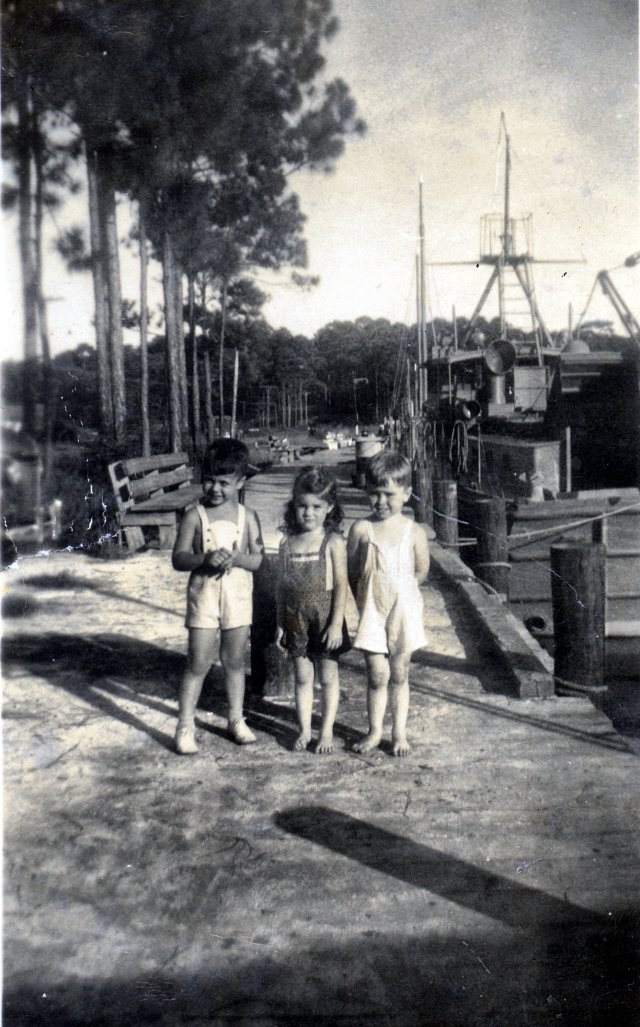
Ocean Springs US Army Crash Boat Base
The Crash Boat Base was an Army Air Corps sea going emergency rescue boat facility located on the south side of Hellmer's Lane and on the northwest shore in the Inner Harbor at Ocean Springs, during the final years of WW II. It was manned by personnel of Squadron V, 3rd Air Force Bomber Command, US Army Air Corps from the Gulfport Army Air Field at Gulfport, Mississippi. The base was erected in early 1944, to house crash boat officers and crews as well as ancillary personnel who manned the small post. The mission of the local boat base was to rescue downed aviators, tow targets, and patrol bombing ranges in the Mississippi Sound and Gulf of Mexico. The Crash Boat Base was located in Section 37, T7S-R8W on land leased of Charles E. Clark (1879-1945) to the US Army.
Charles E. Clark was the son of Edwin A. Clark (1853-1936) and Katherine T. Glasscock (1853-1930). He was born at Concordia Parish, Louisiana and arrived at Ocean Springs in 1897. Mr. Clark married Lulu Haviland (1880-1972), the daughter of Samuel T. Haviland (1845-1911) and Sue Moss Haviland (1860-1903). Clark was a soldier having volunteered in 1898, to serve in the Spanish American War. He mustered with the US Volunteers, 5th Immune Regiment, and served as a Sergeant in Cuba from August 1898 until March 1899.(The Ocean Springs Record, July 30, 1998, p. 16)
Mr. Clark matriculated to LSU and received a law degree from Cumberland University. Returning from military duty at Santiago de Cuba, he became involved in the Railway Mail Service and later was a rural mail carrier. Charles E. Clark was a member of the Jackson County and State Bar Associations and practitioner of law in Jackson County for over forty years. He was acknowledged as an outstanding lawyer in chancery court matters, especially land and estate issues. He died suddenly on April 5, 1945. Clark was survived by his wife, sister, Mrs. Charles L. Snyder, and brother, Walter Clark of Louisville, Kentucky.(The Jackson County Times, April 7, 1945, p. 1)
Mr. Charles E. Clark began acquiring lands along Hellmer's Lane and in the area that would become the northwest end of Ocean Springs Inner Harbor many years before the Army Air Corp base came to Ocean Springs. The portion of Clark's land that would become the mooring and fueling area for the Crash Boat Base was once the pasture of the Rehage Dairy.(Charles Fayard, April 12, 1999) Harry Rehage delivered milk to base during its tenure on the Inner Harbor.(Harry Rehage, April 5, 1999)
The John A. Rehage family of New Orleans came to Ocean Springs at the turn of the Century. Both he and Mrs. Madeline Rehage were born at New Orleans, the children of German immigrants. Their family consisted of: George T. Rehage (1878-1937), Edgar M. Rehage (1888-1918+), and Charles F. Rehage (1890-1977).
In December 1900, Madeline Rehage (1862-1920+), the wife of John A. Rehage (1850-1920+), bought 12.82 acres of land from Herman Nill (1863-1904), a local druggist. This tract can be very generally described by present day geography as north of the Alice T. Austin tract, east of the Gulf Oaks Condominiums, south of Hellmer's Lane, and west of the Inner Harbor.(JXCO Land Deed Bk. 22, p. 215)
John A. Rehage (1849-1926) built a home here, a present day 1220 Harbor Drive, in February 1904, which is now owned by his grandson, Harry Rehage. The Rehage family operated a dairy here until the late 1930s, when they moved their dairy operation to a site between Bechtel Boulevard and Alice Drive. This tract in the SE/4 of Section 29, T7S-R8W was platted as the 10-acre Rehage Subdivision in September 1951.(The Progress, February 14, 1904, p. 4 and JXCO Plat Bk. 2, p. 29)
In October 1913, May Staples Poitevent (1847-1932), the widow of Captain Junius Poitevent (1837-1919), conveyed a three-acre parcel to Charles E. Clark, formerly possessed by John A. Rehage and Madeline Rehage. In April 1924, Annie Gaspard Rehage (1888-1971) and Charles F. Rehage (1890-1977) sold Mr. Clark another tract south of the Henry Hellmer's property. These former Rehage lands are believed to have been pasture for their dairy cattle and were dredged out in January 1944, to extend the Inner Harbor to the northwest. The channel thus formed served as the moorage site for the crash boats of the Army Air Corps.(JXCO Land Deed Bk. 39, p. 507 and Bk. 53, p. 586)
Henry Hellmers also sold two tracts to Charles E. Clark (1879-1945), containing about 4.2 acres on the south side of Hellmer's Lane, in the area that would become the site of the barracks, mess hall, and other land structures of the Crash Boat Base. The largest of these parcels was about 3 acres and conveyed to Clark in January 1929.(JXCO Land Deed Bk. 62, p. 145)
The Crash Boat Base at Ocean Springs was under the Supply and Maintenance Sector of Gulfport Army Air Field (Gulfport AAF). This Army Air Corps facility was erected on a 1200-acre lease near the Gulfport airfield, commencing in May 1942. By September 1942, potential airplane mechanics began classes in tent schools. The 3rd Air Force then took command of the facility and made it a training center for heavy bombers, B-24 Liberators and B-17 Flying Fortresses. Near the culmination of WW II, B-29 Super Fortress combat crews trained here.(Black, 1986, p. 94)
In early 1946, the US Army announced that Gulfport AAF was surplus. The facility had three runways, four double wooden hangers, and two new concrete hangers. The city of Gulfport took control of the air base in early 1947, pending a final settlement with the US Government. (Ibid., p. 96)
The US Army Air Corps Crash Boat Base at Ocean Springs was called Main Base as other crash boat sites under the aegis of Gulfport AAF, called Sub-Bases, were situated at: Municipal Field, New Orleans; Brookley Field, Mobile, Alabama; and the Old Gulfport Yacht Club Pier, Gulfport, Mississippi. In December 1944, there were five boats assigned to the Ocean Springs base. They were as follows: P-236, a 104-foot Sea Going Rescue Boat; P-70, an 83-foot Sea Going Rescue Boat; P-726, a 63-foot Sea Going Rescue Boat; P-246, an 83-foot Sea Going Rescue Boat (not operational); and P-54, Army Crash Boat (not operational).(IRIS Roll No. B2251, p. 804)
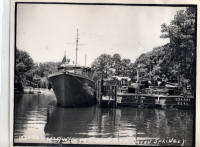
The Army Air Corps boats at Ocean Springs were constructed of wood. Some were planked and others made from marine plywood. It is believed that some of these watercraft were built at the Weaver Boat Yard in Orange Texas. Others came from shipyards on the Great Lakes and the Higgins Boat Yard at New Orleans.( W.H. Yarrow, April 4, 1999 and Stewart Folger, April 10, 1999)
As early as March 1945, another Main Crash Boat Base under Gulfport AAF general command was operating at Cameron, Louisiana.(IRIS Roll No. B2251, p. 1338)
Main Base at Ocean Springs was assigned the Mississippi Sound and served as an operations site for crash boats responsible for covering 3rd Bomber Command bombing and gunnery ranges at Freemason Island and Burrwood, Louisiana. By late 1944, high command at Gulfport AAF desired to consolidate the four crash boat bases to one operational unit at the Old Gulfport Yacht Club Pier. It was believed that this action would promote maximum efficiency, convenience, and amply protect the Gulfport AAF.(IRIS Roll No. B2251, p. 805)
At the archives of the Air Force Historical Research Agency, Maxwell AFB Alabama, official reports and other information on the Ocean Springs Crash Boat Base were reviewed by the author. The following generalizations about this facility were concluded:
The moral of the base was generally high despite the fact that personnel worked long hours on alert duty due to a paucity of manpower, and finance officers refused to pay the men the additional 20% of base pay allowed for sea duty. Orders from higher commands, especially those requiring corrective action, were not give enough time to take action before correspondence was due to be remitted. In many instances, the time allowed for corrective measures was exhausted in message transit time from headquarters at Gulfport AAF through Main Base at Ocean Springs to sub-base at New Orleans, Mobile, or Gulfport. Some of the men were overweight and Major Turner of 3rd Bomber Command suggested more exercise for base personnel.(IRIS Roll No. B2250 pp. 1710-1711)
A chronology of the Ocean Springs Main Base as derived primarily from local journal sources and US Army Air Corp documents follows:
1943
In December 1943, the B.L. Knost Company of Pass Christian, Mississippi was awarded a contract to build pre-fabricated barracks, a mess hall, and lavatory on Hellmer's Lane. These structures were situated on the north shore of the Inner Harbor. The $14,730 construction contract for the rescue facility was expected to be completed in six weeks.(The Jackson County Times, December 11, 1943, p. 1,)
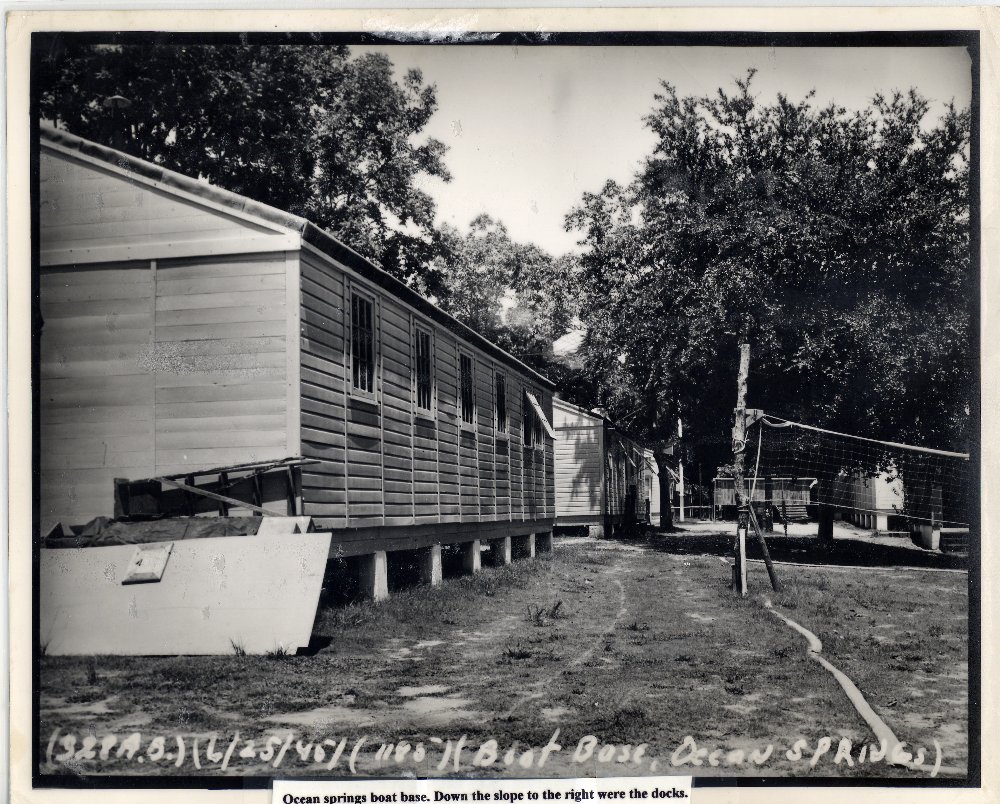
Barracks (image made June 1945)
It should be of local interest to know that Hellmer's Lane received its appellation from Henry Helmers (1848-1934), a former landowner in this section of Ocean Springs. In June 1927, Mr. Hellmers donated land to the City of Ocean Springs for a street here, which was called Hellmer's Lane in gratitude for the donation. Mr. Hellmers was born at Altenesch, near Bremen in Oldenburg Province, Germany. In May 1907, he and his wife, Isabella Hellmers (1858-1908), bought a Queen Anne cottage at present day 914 Calhoun from Severin and Sophie Schill of New Orleans. Henry Hellmers resided here in his retirement years.(JXCO Land Deed Bk. 60, p. 407 and Bk. 32, pp. 549-550)
It is almost incredulous that most of the crash boat buildings are extant. Several are in situ on Hellmer's Lane. A chronology of these buildings follows:
1406 Hellmer's Lane
In 1964, Alice P. Duckett, who resides at 1406 Hellmer's Lane, acquired one of the former military barracks, when she purchased the onetime residence of Miss Scharlotte "Lottie" Moore Schoemmell (1895-1966). Mrs. Schoemmell had procured the lot and building in July 1947, from Lulu Haviland Clark, several years after the crash boat base was closed.(Alice P. Duckett, April 9, 1999 and JXCO Land Deed Bk. 111, pp. 396-398)
Lottie Schoemmell was a woman athlete of international acclaim. She was born on February 13, 1895, the daughter of Ernest Moore and Barbara Schweize, at the Bronx, New York. Lottie began marathon swimming in the 1920s. By in the end of that decade, she had won 21 world championships and was acclaimed the best female swimmer in the world at distances greater than ten miles. Lottie never swam the English Channel, a local myth, but in October 1926, she set a record in averaging 14.5 miles per day during a marathon event in the very frigid Hudson River from Albany, the state capitol, to New York City, a distance of 153 miles. It has been called the greatest performance of marathon swimming every made by a woman.(The Daily Herald, December 29, 1959)
At Ocean Springs, Lottie Schoemmell taught swimming at the Community Pier. Ten private lessons were given for $25. She also operated a health clinic at Biloxi on West Howard Avenue. Here Mrs. Schoemmell engaged in physio-therapy. She was a graduate Swedish masseuse.(The Jackson County Times, June 25, 1948, p. 4 and The Daily Herald, February 7, 1947, p. 5)
In September 1958, Lottie Shoemmell bought several lots from Georgette F. Lee (1889-1979) in the Bryan Farms Subdivision east of Ocean Springs. She resided here on Highway 90 (now Government Street) until her demise from natural causes in August 1966. In July 1970, Bruce and Alice Duckett removed the former Schoemmell residence from 1406 Hellmer's Lane to 916 Calhoun, which ironically is just east of the old Henry Hellmers homestead.(JXCO Land Deed Bk. 184, p. 433, The Daily Herald, August 18, 1966, p. 2 and Alice P. Duckett, April 8, 1999)
1402 Hellmer's Lane
It is believed that this structure, now a residence, was the crash boat base lavatory, which consisted of showers and latrines). This original small military building has been accreted in area until it is now a house of substantial size.(Alice P. Duckett, April 8, 1999)
1322 Hellmer's Lane
When Bache and Jean Whictlock bought their home here from listing agent, Ruth McKinnon Carr, she related to them that this structure had been the lavatory for the air-sea rescue squadron during WW II.(Jean Whitlock, April 10, 1999)
This is not substantiated by former tenant, Jerri Haviland, who resided here in the 1950s. Mrs. Haviland recalls that her former residence was a barracks building. Her husband, Jack J. Haviland (1920-1996), replaced the flooring in the structure.(Jerri Haviland, April 10, 1999)
1320 Hellmer's Lane
The house of Dr. William Pontius was erected here commencing in early 1994. Prior to the edifice of Pontius, the Howell family resided in a former crash boat structure, probably another barracks building. It was conveyed to Curmis Broome who demolished it.(Alice P. Duckett, April 8, 1999)
1944
Jackson County Beat Four Supervisor, A.P. "Fred" Moran (1897-1967), had committed the County dredge, Wahalak, to excavate slips for the crash boats in the Inner Harbor, facetiously called "Fred Moran's Little Swimmin' Hole". Dredging began in January 1944.(The Jackson County Times, January 15, 1944, p. 1, c. 4)
August 1944
In August 1944, one officer, 1st Lt. Charles H. Eyster Jr., and ten enlisted medical technicians were added to the roster of the Ocean Springs crash boat base. 1st Lt. Eyster was transferred from Gulfport AAF to relieve the Base Boat Officer of the details of squadron administration. This brought the number of enlisted men at the Ocean Springs base to fifty-three. The Sterling engines, which powered US Army Rescue Boat P-54, were replaced with two Hall-Scott motors. The older Sterling engines repeatedly broke down under the pressure of patrol work. A siren was placed on the staff vehicle to assist it when maneuvering in traffic while transporting base personnel to accident scenes. The two salient events of August 1944, were the freeing of a stranded PBY aircraft from the shallow waters near Ship Island by Ocean Springs and Gulfport base boats, and the fracturing of the back of Cpl. Stanley H. Shelhamer (1920-1977) as a result of heavy seas encountered at the range off Burrwood, Louisiana.(IRIS Roll No. B2250, pp. 1545-1546)
Also in August 1944, Ocean Springs Main Base was placed on stand-by duty to provide crash boat service for Brookley Field to all aircraft flying in the Mobile Bay over water area.(IRIS Roll No. B2250, p. 1552)
September 1944
In September 1944, the Ocean Springs base received a new commander, Captain Paul G. Andersen, who relieved 1st Lt. Philip L. Jacobs. The base strength as the end of September 1944, was: one officer, six warrant officers, and fifty-five enlisted men. Major activity for the month was the dispatching of three vessels from the base to a point about 200 yards offshore from the Edgewater Hotel. Here, a B-17E aircraft had ditched. All airmen had safely bailed out, but the derelict plane had to be demolished with explosives by Navy personnel as it could not be floated or towed. In addition, WO (jg) Leonard F. Cahoon and a crew of ten men were sent to Savannah, Georgia to secure and return P-248, a Sea Going Rescue Boat of 83-foot, to Ocean Springs. The vessel was at the Thunderbolt Marine Repair Shop.(IRIS Roll No. B2250, pp. 1709, p. 1712, and p. 1716)
1945
In June 1945, the Main Base at Cameron, Louisiana was severely ravaged by a tropical hurricane. The damage was inspected by the Commanding Officer of the Ocean Springs crash boat base. It was recommended after the inspection that the Cameron Boat Base facilities be removed to the Sabine Naval Base, Texas. June 1945 also saw a meeting held at East Pier Base, Gulfport, Mississippi to consider the removal of the Ocean Springs crash boat base to that location. A primary consideration in the relocation of the Main Base to Gulfport was the $184,000 estimated cost to dredge a channel at Ocean Springs. There was sufficient dockage at East Pier for twelve boats and ground space for living quarters adjacent to the present dock at Gulfport.(IRIS Roll No. B2252, pp. 1338-1339)
An open house was held at the Crash Boat Base on December 1, 1945. The event was held by the US Army Air Corps to express their sincere appreciation for the hospitality and many favors accorded to them by the people of Ocean Springs during their tenure at the crash boat base.(The Jackson County Times, November 24, 1945, p. 1, c. 7)
After several patriotic tunes were played enthusiastically by the Ocean Springs School Band, under the direction of Miss Corrine McClure (1887-1961), Marcus Shanteau played "Taps" during a moment of silent prayer. Ralph Duncan, master of ceremonies, then presented Reverend Father Francis Deignan (1901-1965), the pastor at St. Alphonsus Catholic Church, who gave the invocation. Crash Boat Base Commander, Captain Thomas H. Hacking, spoke briefly. He related the history of the base and expressed pride in the fact that the Ocean Springs based crash boats had completed several life-saving missions. One involved the rescue of six civilians for which the base had received a special commendation.(The Jackson County Times, December 8, 1945, p. 1)
Ralph Duncan organized the affair, which was highlighted by a ride on the crash boats. At this time there were sixty men stationed at the Ocean Springs facility. A request for donations as Christmas gifts for the Army Air Corps soldiers was sent into the community in early December. Items needed for the base Christmas Tree were as follows: combs, razor blades, tooth paste, playing cards, and money. Miss Jessie Boyd (1881-1963) and The Gulf Wave Shop were contacts for contributions. The Gulf Wave Shop was a beauty parlor operated by Mrs. Theon Galle. At this time, one could get a shampoo and set for $.65 and a permanent wave for $4.00 and up.(The Jackson County Times, December 8, 1945, p. 1 and February 2, 1945, p. 4)
1946
After V-J Day on September 2, 1945, activity at the crash boat base began to diminish rapidly. The rescue vessels at Ocean Springs were moved to Brookley AFB, Mobile, Alabama. By March 1946, the military facility on Hellmer's Lane was still open, but not operational. It was permanently closed shortly thereafter.(W.H. Yarrow, April 10, 1999)
Men who served
The following is a partial list of the men who served at the Ocean Springs crash boat base from 1943 to 1946: Major Bodenstein, Captain Paul G. Andersen, Captain Thomas J. Hacking, Capt. William H. Hoover, 1st Lt. Charles E. Eyster Jr., 1st Lt. Philip L. Jacobs, WO (jg) Leonard F. Cahoon, WO (jg) Flyod G. Lewis, WO (jg) Charles A. Montgomery, WO (jg) Harry Lombard, SSgt. Guy L. Gammon (1916-2011), TSgt. Henry W. Eschmann, Sgt. Julius H. Pettis, Sgt. Casimer Zadrzynski, Cpl. Stanley H. Shelhamer (1920-1977), Cpl. George R. Duncan, Cpl. Warren Rutter, Cpl. Richard Borneman, Pvt. Felix Rogers, Pvt. David M. Caldwell, Sgt. Stewart Folger (b. 1920), Michael J. Lamacchia (1921-1992), Walter H. Yarrow (1925-2009), and Anthony W. Davidson (1920-1990)
Crash boat base veterans remember Ocean Springs
Stewart V. Folger
Stewart Folger (1919-2010) now resides at Newport Beach, California. He was born in New York, but relocated to California in his youth. Folger was trained to be a radio technician by the Army, but became a skipper of P-575, a twin-engine crash boat. Post WWII, returning to the Golden State, he formed his own machine tool company, FD Contours. Folger still manages the company at seventy-nine years of age. He recalls that he had good feelings about his military duty at Ocean Springs, and that the people made the service men very welcomed. Sergeant Folger would trade sugar, a rare commodity during the war, for Davis Bayou mullet.(Stewart Folger, April 3, 1999)
Elaine Ryan Miller remembers Stewart Folger well. Her mother, Mrs. Elsie Seymour Ryan (1905-1989), would occasionally invite him for Sunday dinner at the Henry L. Ryan cottage at present day 1106 Calhoun.(Elaine R. Miller, April17, 1999)
Guy L. Gammon
Guy L. Gammon (1916-2011) now calls Laverne, California home. He was one of the first servicemen to be assigned to the local crash boat base. Gammon lived at Biloxi and ate in local restaurants until construction of the barracks, mess hall, and other facilities were completed in early 1944. He recalls that there were five buildings on the Hellmer's Lane site. Mr. Gammon knew, Anthony W. "Boots" Davidson (1920-1990), an Ocean Springs native, who was stationed at the crash boat base. Gammon and cohorts would sip suds at Dave's Place, a local pub on Washington Avenue, run by Walter S. "Dave" Davidson (1888-1950), the father of Boots Davidson.(Guy L. Gammon, April 3, 1999)
Dave's opened for business in May 1935, in the former Russell Beer Parlor where The Whistle Stop, a frame and art gallery, is now situated. Walter Davidson served Eagle Beer, Double Eagle Ale, Pabst Blue Ribbon, and fresh crab omelettes every evening. Dale's on Porter, now the Bradford-O'Keefe Funeral home, was also a favorite haunt for these seaman soldiers.(The Jackson County Times, May 4, 1935, p. 1, c. 3, and July 27, 1935)
Walter H. Yarrow
Private Walter H. Yarrow (1925-2009), a native of Jersey City, New Jersey, was one of the lucky Army Air Corpsmen to win the heart of a local belle. He met Nell Baker, the daughter of Orion S. Baker (1898-1951) and Eula Tiblier Baker (1900-1996), by asking her for directions. He says that she has been given them to him now for 53 years! The Yarrows were married at St. Alphonsus Catholic Church on March 19, 1946, with her brother, B. Baker (1925-1997) and Marion Forde, as attendees. Miss Baker was employed in the public relations office at KAFB before her betrothal.(The Jackson County Times, March 23,1946, p. 4, c. 4)
Walter H. Yarrow remembers that the crash boat base was well situated. The only logistical problem was with shallow water and low tides. He trained for his military skills at Cameron, Louisiana and San Diego, California. The Yarrows now reside in Hattiesburg, Mississippi where he is a retired professor from the faculty of the University of Southern Mississippi.(Dr. W.H. Yarrow, April 10, 1999)
Foreign servicemen make local scene
At various times during WWII, British and French sailors were billeted at the Magnolia State Park, formerly the CCC Camp and now the Gulf Islands National Seashore, east of Ocean Springs. They remained here while their ships were being repaired at the Pascagoula shipyard. In December 1943, seventy French sailors were quartered at the park. They arrived after a British vessel had embarked. The limey crew caused quite a stir in the local female population, which only continued to sizzle after the Army Air Corp soldiers came here in early 1944. Hearts were made and broken.(The Jackson County Times, December 18, 1943, p. 1 and various anonymous local women)
In gratitude
Many thanks to Christopher H. Mauer, Professor of Spanish Literature at Vanderbilt University, who inspired this research and Captain Christopher M. Cwynar of the Air Force Historical Agency at Maxwell AFB, Alabama for his kind assistance in securing documents for the author. A sincere and very special gratitude is owed to Guy L. Gammon who donated his entire WW II archive and multiple photographs of the Crash Boat Base at Ocean Springs to the author.
Others who contributed greatly to the author's knowledge of this subject were: Jean and Bache Whitlock, Elaine Ryan Miller, Sammy Cvitanovich, Dot Noel Ross, Walter H. Yarrow and Nell Baker Yarrow, Charles Fayard, Harry Rehage, Alice P. Duckett, Alice Hire, Theresa Hire, Sandi Shelhamer, and Stewart Folger.
REFERENCES:
Air Force Historical Research Agency, Maxwell AFB, Alabama
Henry W. Black, Gulfport, Beginings and Growth, (Rivendell Publications: Bowling Green, Kentucky-1986)
Journals
The Daily Herald, "Shoemmell Health Clinic", February 7, 1947.
The Daily Herald, "Still A Champion After 30 Years", December 27, 1959.
The Daily Herald, "Famed Swimmer Found Dead In Ocean Springs", August 18, 1966.
The Jackson County Times, "Contract is let for barracks for Key Field men", December 11, 1943.
The Jackson County Times, "70 French Sailors at Magnolia Park Await Ship Repairs", December 18, 1943.
The Jackson County Times, "Dredge 'Wahalak' doing fine job in Inner Harbor", January 15, 1944.
The Jackson County Times, "Charles Clark dies suddenly Thursday p.m.", April 7, 1945.
The Jackson County Times, "Crash Boat Base Has 'Open House' Last Saturday", December 8, 1945.
The Jackson County Times, "Yarrow-Baker", March 23, 1946.
The Jackson County Times, "Learn To Swim", June 25, 1948.
The Ocean Springs Record, "Anthony W. Davidson", April 19, 1990.
The Ocean Springs Record, "Sous Les Chenes", July 30, 1998.
The Progress, February 14, 1904.
Ocean Springs Harbor - "Fred Moran's Little Fishing Hole" : Time Line
Ocean Springs Harbor - "Fred Moran's Little Fishing Hole" : Time Line ray Wed, 04/21/2010 - 09:43- 404 views
Ocean Springs Harbor-“Fred Moran’s little fishing hole”
Time Line
19th Century
1846-Called Bayou Baiziene? or Bayou Bauzage? in the partition deed of the Widow LaFontaine property.(Schmidt, 1984, p. 20 and Jackson Co., Ms. Land Deed Bk. 4, p. 546)
1851-Mapped by U.S. Coast Survey and unnamed.
Circa 1865-called Mill Dam Bayou. Ellis Handy (1891-1963) in the local journal, The Gulf Coast Times, interviewed Joe Lewis ‘Dode’ Schrieber (1873-1951) who reported that William Gray Kendall (1812-1872) built a dam was built to trap tidewater and provide a source of energy to grind corn or other grains at a mill located on that site. The grinding wheel fell into the mud and silt of the bayou when it was abandoned in the 1870s.(The Gulf Coast Times, August 26, 1949)
1930-1939
January 1936-Refurbished Mill Dam bridge for road traffic on January 30, 1936. Ed Voivedich in his Model T Ford was the first to cross.(The Jackson County Times, February 1, 1936, p. 3)
1938-A.P. ‘Fred’ Moran (1897-1967), Jackson County Beat 4 Supervisor acquired easements along the proposed inner harbor from Annette McConnell Anderson (1867-1964) of the Shearwater Pottery; Charles E. Clark (1879-1945), the Rehage Dairy; and the Reconstruction Finance Corporation, owner of the former Charles G. Parlin property, which was acquired by Albert Austin and Alice Tee Wier Austin (1908-2001) in 1940.
June 1938-Jackson County built a dredge, later called Wahalak, perfected by Captain Adam Gautier (1873-1963). It began operation in December 1937 as a suction dredge, which proved unsatisfactory. It was then converted into a 'cutter' dredge and was used primarily to provide protection for the seawalls at Pascagoula and Ocean Springs.(The Pascagoula Chronicle-Star, June 17, 1938, p. 1)
March 1939-the Jackson County dredge started work on the 100-foot wide channel to the future inner harbor.(The Jackson County Times, March 18,1939, p. 1)
September 1939-Russell Carver (1888-1961), foreman of the County bridge crew, finished a 200-foot by 10-foot, east-west striking, dock on the north shore of the new harbor.(The Jackson County Times, August 26, 1939, p. 2)
1940-1949
December 1943-In late 1943, U.S. Army Air Corps personnel from Key Field at Meridian, Mississippi were sent to man a Crash and Rescue Boat Base on the inner harbor. B.L. Knost Company of Pass Christian, Mississippi was awarded a $14,730 contract to build pre-fabricated barracks, a mess hall, and lavatory on Hellmers Lane on the north shore of the inner harbor.(The Jackson County Times, December 11, 1943, p. 1)
January 1944- A.P. ‘Fred’ Moran (1897-1967), Beat Four Supervisor, committed Wahalak, the Jackson County dredge, to excavate slips for the 3rd Air Force crash boats. These craft were used to monitor bombing ranges in the Gulf of Mexico and assist downed flyers.(The Jackson County Times, January 15, 1944, p. 1)
September 1945-After V-J Day on September 2, 1945, activity at the US Army Air Corps crash boat base began to diminish rapidly. The rescue vessels at Ocean Springs were moved to Brookley AFB, Mobile, Alabama. By March 1946, the military facility on Hellmer's Lane was still open, but not operational. It was permanently closed shortly thereafter.(W.H. Yarrow, Hattiesburg, Mississippi, April 10, 1999)
September 1947-The inner harbor moored and sheltered over two hundred Biloxi shrimp boats from the September Storm. Their vessels were valued at $1,000,000.(The Jackson County Times, December 1947, p. 1 and The Daily Herald, May 9, 1957)
In 1947, C. Ernest Schmidt (1904-1988) entered the political arena at Ocean Springs and was elected alderman-at-large for one term. He often battled Beat Four County Supervisor A.P. "Fred" Moran (1897-1967) over the best utility of the Ocean Springs Inner Harbor. In the spring of 1948, Schmidt resigned in a furor from his position as Secretary of the Commission for Sea Food Development. He was an outspoken advocate for industrial development in Jackson County and wanted the harbor developed for commercial fishermen. Supervisor Moran favored the inlet as a haven for pleasure craft and recreational sailors. The Jackson County Times, March 19, 1948, p. 1 and June 1948, p. 1)
December 1947-Supervisor A.P. ‘Fred’ Moran proposed a plan to double the size of the inner harbor. The new harbor [later called Kensington basin] would be a shelter for small boats.(The Jackson County Times, December 1947, p. 1)
In August 1948, C. Ernest Schmidt (1904-1988) lost a hotly contested race for his Alderman-at-Large post to J.C. Gay (1909-1975). The Citizens Progressive League had been organized in the spring of 1948, with the specific purpose of unseating incumbent Schmidt. They vehemently opposed his platform of establishing a seafood industry at Ocean Springs, and his criticism of tax evaders. The Jackson County Times, August 20, 1948, p. 1)
1950-1959
1955-Ethel Cates named ‘Harbor Mistress’.(The Daily Herald, May 9, 1957)
February 1957-Shell oil and gas station opened at inner harbor for boats.(The Ocean Springs News, February 7, 1957, p. 1)
January 1958-Shearwater Bridge-Construction commenced in January 1958 by Newsom Construction Company on the $17,000, 18-foot tall bridge across the Ocean Springs Inner Harbor.(The Ocean Springs News, January 16, 1958, p. 1)
1960-1969
1968-The R.W. Schluter Estate sold the Jackson County Board of Supervisors the harbor-front land at the intersection of Kensington and Pine and the slough extending east from Pine Drive for further extension of the harbor and for more harbor and recreational facilities.(Schmidt, 1984, p. 129)
1970-1979
August 1970-OSYC commences construction on inner harbor.(The Ocean Springs Record, August 20, 1970)
September 1970-OSYC burns.(The Ocean Springs Record, September 10, 1970, p. 1 and September 10, 1970, p. 1)
January 1971. OSYC opens.(The Ocean Springs Record, January 28, 1971, p. 14)
1980-1989
April 1984-Inner Harbor Park dedicated on April 7th. Cost $154,000.(The Ocean Springs Record, April 12, 1984, p. 1)
May 1985-Harbor renovations underway.(The Ocean Springs Record, May 30, 1985, p. 2)
April 1989-Work stopped at harbor.(The Ocean Springs Record, April 20, 1989, p. 1)
1990-1999
1996-Inner harbor dredged. Kensington Basin portion cost $229,000.(The Sun herald, August 11, 1996)
2000-2010
2003-Shearwater Bridge-Construction began in late May 2003. Dedicated on April 20, 2004. Bottle of champagne broke on structure by Marjorie A. Ashley, potter James Anderson and spouse Margaret Hollingsworth Anderson.(The Ocean Springs Record, April 22, 2004, p. A1)
March 2004- Harbor Landing Dry Stack Marina began construction.
March 2005-Harbor Landing, a dry boat storage facility on the west side of the small craft harbor, almost completed.(The Mississippi Press, “OS Press”, February 16, 2005, p. )
August-September 2006-Harbor Landing Restaurant construction commences.
September 2006-proposed Harbor Master office-(The Sun Herald, September 18, 2006, p. A8 and The Ocean Springs Record, September 21, 2006, p. A10))
March-April 2007-Harbor Landing Restaurant attempts to open but refused due to protests. (The Sun Herald, April 11, 2007, p. A8)
September 2007-Harbor Landing Restaurant opens. (The Sun Herald, September 27, 2007, p. D8)
February 2008- Lesley Hamm (b. 1981) was appointed OS Harbor Master, the second woman, to hold this position. The harbor now has 178 boat slips.(The Ocean Springs Record, February 7, 2008, p. A1)
February 2008-Chancery Court hearing on Harbor Landing Restaurant issues.(The Sun Herald, February 29, 2008, p. A3)
June 2008-Contractor starts construction of new harbor pier in footprint of Katrina damaged structure.(The Ocean Springs Record, July 3, 2008, p. A1)
July 2008-Judge Dale Harkey, Jackson County Circuit Court, rules in favor of City-Harbor Landing and against A. Bruce and Alice Ducketts, plaintiffs.(The Ocean Springs Record, July 10, 2008, p. A1)
October 2008-Board of Supervisors met with FEMA to determine how Harbor Master's office can be built to meet new flood map requirements.(The Ocean Springs Record, October 23, 2008, p. A3)
December 2008-County initiates OS Harbor Christmas boat parade.(The Sun Herald, December 2008, p. A4 and The Ocean Springs Record, December 11, 2008, p. B1)
2011-2020
The Jackson County Board of Supervisors voted to include the Inner Harbor on the Audubon Society Mississippi Coast Birding Trail. John McKay, Beat V Supervisor, said: "If we're joining Audubon and they have a say about something like dredging the harbor, I don't want that." Paula Yancey, Board Attorney, eased McKay's angst when she counsiled the Board that although a sign would be erected at the Inner Harbor, it would not make the harbor a bird sanctuary, only a stop on the birding tour.(The Sun Herald, November 6, 2013, p. A10)
Ocean Springs Harbor
Ocean Springs Harbor ray Wed, 04/21/2010 - 09:41- 2576 views
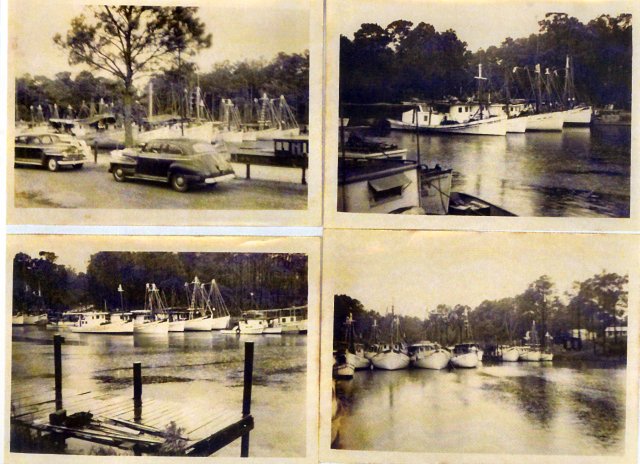
Ocean Springs Inner Harbor
[images made circa 1947. from the F.L. Westbrook Jr. collection]
The present Clan Harris imbroglio is not the first serious controversy to become inexorably attached to the nearly fifty year chronology of the Ocean Springs Inner Harbor. In 1938, A.P. ‘Fred’ Moran (1897-1967), Jackson County Beat Four Supervisor and resident of Ocean Springs, began acquiring easements from landowners for Jackson County to create a small craft harbor at Ocean Springs in the trace of Mill Dam Bayou. At this time, the salient lands for the proposed anchorage were possessed on the eastern perimeter by Annette McConnell Anderson (1867-1964) of the Shearwater Pottery. On the west side, the property of Charles E. Clark (1879-1945), the Rehage family; and the Reconstruction Finance Corporation, owner of the former Charles G. Parlin (1880-1940) property, which was acquired by Albert B. Austin (1876-1951) and Alice Tee Wier Austin (1908-2001) in 1940, was essential for the budding harbor project.
Mill Dam Bayou
Mill Dam Bayou, a small intermittent stream, originally called Bayou Bazienne or Bauzage during the LaFontaine era (pre-1846), was named in the mid-19th Century by William Gray Kendall (1812-1872), a Kentucky solicitor, brick maker, and U.S. Postmaster at New Orleans in 1854. It is rumored that Kendall damned the bayou in an attempt to operate a small grist mill during his habitation on the Hansen-Dickey tract fronting Biloxi Bay and in recent years referred to as ‘Shadowlawn’.
1939 Dredging
In June 1938, Jackson County built a dredge, later called the Wahalak. It was perfected by Captain Adam Gautier (1873-1963). The dredge began operation in December 1937 as a suction dredge, which proved unsatisfactory. It was then converted into a 'cutter' dredge and was used primarily to provide protection for the seawalls at Pascagoula and Ocean Springs. In March 1939, the Jackson County dredge started work on the 100-foot wide channel to the mouth of Mill Dam Bayou. By September 1939, the harbor was essentially completed when Russell Carver (1888-1961), foreman of the Jackson County bridge crew, finished a 200-foot by 10-foot, east-west striking, dock on the north shore of the new harbor.( (The Pascagoula Chronicle-Star, June 17, 1938, p. 1 and The Jackson County Times, March 18,1939, p.1 and The Jackson County Times, August 26, 1939, p. 2)
WWII
In late 1943, U.S. Army Air Corps personnel from Key Field at Meridian, Mississippi were sent to man a Crash and Rescue Boat Base on the inner harbor at Ocean Springs. B.L. Knost Company of Pass Christian, Mississippi was awarded a $14,730 contract to erect pre-fabricated barracks, a mess hall, and lavatory on Hellmers Lane on the north shore of the inner harbor. In January 1944, A.P. ‘Fred’ Moran (1897-1967), Beat Four Supervisor, committed Wahalak, the Jackson County dredge, to excavate slips for the 3rd Air Force crash boats. These craft were used to monitor bombing ranges in the Gulf of Mexico and assist downed flyers.(The Jackson County Times, December 11, 1943, p. 1 and January 15, 1944, p. 1)
After V-J Day on September 2, 1945, activity at the US Army Air Corps crash boat base at Ocean Springs began to diminish rapidly. The air-sea rescue vessels were relocated to Brookley AFB, Mobile, Alabama. By March 1946, the military facility on Hellmer's Lane was still open, but not operational. It was permanently closed shortly thereafter.(W.H. Yarrow, Hattiesburg, Mississippi, April 10, 1999)
1947 Hurricane
During the evening and early morning of September 18 and 19, 1947, a category three hurricane struck southeast Louisiana and the Mississippi Gulf Coast. The inner harbor at Ocean Springs moored and sheltered over two hundred Biloxi shrimp boats from this September tempest. These vessels were valued at $1,000,000.(The Jackson County Times, December 1947, p. 1 and The Daily Herald, May 9, 1957)
Schmidt v. Moran
The first major conflict that developed at the Ocean Springs inner harbor occurred in 1948 when Charles Ernest Schmidt (1904-1988) and Fred Moran, Beat Four Supervisor, had different ideas on the best utility for the facility. In 1947, C. Ernest Schmidt had entered the political arena at Ocean Springs and was elected Alderman-at-Large for one term. In the spring of 1948, Mr. Schmidt resigned in a furor from his position as Secretary of the Commission for Sea Food Development. He was an outspoken advocate for industrial development in Jackson County and wanted the Ocean Springs harbor to be developed for commercial fishermen. Supervisor Moran favored the inlet as a haven for pleasure craft and recreational sailors.(The Jackson County Times, March 19, 1948, p. 1 and June 1948, p. 1)
In August 1948, C. Ernest Schmidt lost a hotly contested race for his Alderman-at-Large post to J.C. “Champ” Gay (1909-1975). The Citizens Progressive League had been organized in the spring of 1948, with the specific purpose of unseating incumbent Schmidt. They vehemently opposed his platform of establishing a seafood industry at Ocean Springs, and his criticism of tax evaders.(The Jackson County Times, August 20, 1948, p. 1)
Kensington Basin
December 1947-Supervisor A.P. ‘Fred’ Moran proposed a plan to double the size of the inner harbor. The new ‘back harbor’, later called the Kensington Basin’, would be a shelter for small boats, while the original ‘front harbor’ would be reserved for larger vessels.(The Jackson County Times, December 1947, p. 1.
'Blessing of the Fleet'
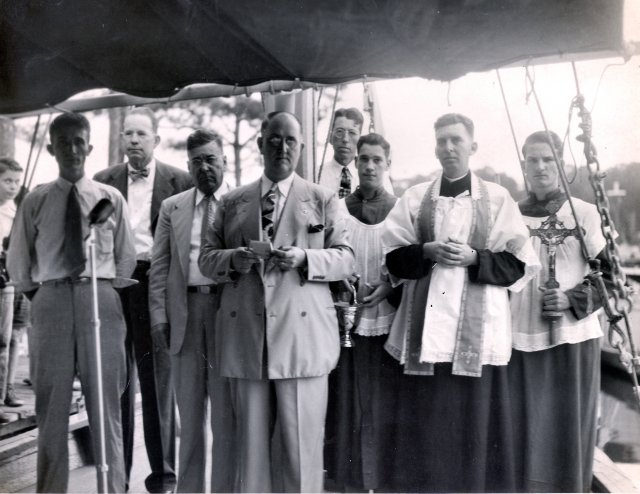
Blessing of the Fleet
[This circa 1943 vintage image was taken aboard a shrimp boat moored in the Inner Harbor. It appears that the Catholic priest is blessing the fishing boats at this time.[L-R: Chester ‘Mac’ Baker [boy on pier]; Oscar L. Seymour (1912-1964); Congressman W.R. ‘Bill Colmer (1890-1980); Hermes F. Gautier (1895-1969); Mayor Albert Westbrook (1900-1980); John E. Catchot (1897-1987); Gene Seymour, alter boy; Father Joseph Holland?, priest; and Lloyd J. ‘Joe Boy’ Ryan (1928-1985), altar boy. From the F.L. Westbrook Jr. Collection]
The 'Blessing of the Fleet' at Ocean Springs occurred on a Sunday usually in mid-September. In 1946, Father Deignan blessed the boats in the Inner Harbor from the Radar, the 40-foot shrimp boat of Bernard Beaugez (1909-1969). John E. Catchot (1897-1987), who owned the Alice, also a shrimp trawler, was harbormaster at this time.(The Jackson County Times, September 21, 1946, p. 1 and Raymond S, Beaugez, September 23, 2009)
Harbormaster J.E. Catchot and Ethel C. Cates
John Edward Catchot (1897-1987) was the first harbormaster. He was born at Ocean Springs and grew up on the water. As a young man John E. Catchot left Ocean Springs and found employment in the L&N railroad shops at New Orleans. Here in September 1917, he married Alice Dupont (1893-1984). John A, Catchot (1918-1998), their first child, was born in the Crescent City and shortly thereafter the family retuned home to Ocean Springs and John began to shrimp aboard the Alice C., named for his spouse. The other children of John and Alice D. Catchot were born in Ocean Springs: Collus B. Catchot (1920-2002); Thelma I. Sawyer (1923-1999) m. ; and Ethel L. Catchot (b. 1927) m. Ernest F. Beaugez (1920-1954) and Elmer Joseph ‘Penny’ Cates (1930-2015).
In mid-September 1947, Captain Catchot and Collus B. Catchot (1920-2002), his son, fled the Louisiana marsh retreating from the threatening hurricane and found shelter in the Wolf River with the Madrid, another shrimp boat from Ocean Springs, which was owned by Bernard Beaugez (1909-1969). As harbormaster, John E. Catchot collected rental fees to maintain the anchorage and make occasional improvements. His harbor commissioners were: Bernard Beaugez, Wilford ‘Wiffy’ Beaugez (1913-1994), and Philip J. Benezue (1909-1978).
In December 1952, Captain Catchot retired from his position as harbormaster, Ethel C. Cates, his daughter, became ‘Harbor Mistress’. Over fifty years would pass before another woman, Lesley Hamm (b. 1981), was appointed to Harbormaster at Ocean Springs. Some of the other past harbormasters were: Leonard Gavins (1912-2000), Malcolm J. Beaugez (1916-1978); Malcolm J. Beaugez Jr., Bill Baker, Jerry Dildy from 1982-1984; Mark Hare from 1985-1992; Louis ‘Bill Harvey (1935-1996); Ben Brown from 1993-2000; and Johnny Hughes from 2001-2008.(The Gulf Coast Times, January 17, 1952, The Daily Herald, May 9, 1957 and The Ocean Springs Record, February 7, 2008, p. A1, and Herbert Beaugez, Brad Lemon and Raymond Beaugez)
1952 Controversy
It was not apparent that when the Board of Aldermen adopted the initial zoning ordinance in Ocean Springs on January 2, 1952, that the Inner Harbor would be the first controversy to challenge this unpopular regulation. By the late summer of 1952, the fishermen and boaters utilizing the boat basin at Ocean Springs were adamant in having a service dock and boat way built on the west side of the Inner Harbor. John E. Catchot, who was then serving as Alderman representing Ward 3, took a firm stand against all opposition to petroleum service facilities at the harbor. He openly declared that he would battle for: “the rights of the fishermen who were instrumental in building the city of Ocean Springs.” Mr. Catchot also advocated that N.C. Covacevich be granted permission to erect a boatyard for repair and construction of watercraft. In early September 1952, Mayor R.C. Miller (1887-1953), the Board of Aldermen, and the zoning commission composed of J.K. Lemon (1914-1998), C. Ernest Schmidt (1904-1988), and Bruce L. Thomas (1908-1969), met with citizens, both protagonists and antagonists in regards to commercial development on the Inner Harbor. J.C. ‘Champ’ Gay (1909-1975), Alderman-at-Large, related to the audience that the City had been approached by developers to allow the erection of a boat yard, gas, oil, and diesel station, ice crushing and marine supply business on the Harry Rehage tract situated on the west side of the marina. A recently passed zoning ordinance prohibited such activity in this area. In order for commerce to proceed on the banks of the boat basin, the City would have to amend the zoning ordinance. Emotions ran high as Alderman Catchot hreatened to have the zoning ordinance repealed, if the fisherman were not allowed a fuel service dock and boat way.(The Gulf Coast Times, September 8, 1952, p. 1)
Bruce L. Thomas presented a petition which stated that the signers had no objection to the proposed commercial harbor development if the City would prohibit the sale of alcohol, disallow boat repairs, and excessive noises before 8 a.m. and after 5 p.m. Colonel Herman J. Bankston Jr. (1894-1965), a chemist and native of Raymond, Mississippi, who was the summer manager of the Gulf Coast Research Laboratory, vehemently opposed any changes in the current zoning fearing the devaluation of property values near the harbor. Lulu Haviland Clark (1880-1972), the widow of Charles E. Clark, one of the original donors of land for the harbor dredging, was represented by Miss Amy Burkett. Miss Burkett also strongly protested and reminded the City government of the 1938 promise from the Jackson County Board of Supervisors that no part of the donated lands would ever be used commercially. Lottie Moore Schoemmell (1895-1966), property owner on the north side of the anchorage, stated that if permission were granted by the City for commercial development, she would sell and relocate. At Ocean Springs, Lottie M. Schoemmell was a former marathon swimmer. In October 1926, she set a record by averaging 14.5 miles per day during a marathon event in the very frigid Hudson River from Albany, the state capitol, to New York City, a distance of 153 miles. It has been called the greatest performance of marathon swimming every made by a woman. Lottie taught swimming at the Community Pier. Ten private lessons were given for $25. She also operated a health clinic at Biloxi on West Howard Avenue. Here Mrs. Schoemmell engaged in physio-therapy. She was a graduate Swedish masseuse.(Ibid., p. 1,The Gulf Coast Times, June 3, 1949, p. 1, The Daily Herald, December 29, 1959, The Jackson County Times, June 25, 1948, p. 4 and The Daily Herald, February 7, 1947, p. 5)
At this time, James McConnell ‘Mac’ Anderson (1907-1998), Bruce R. Edwards (1925-2003), J. Duncan Moran (1925-1995), and Gordon Van Cleave (1906-1964) spoke kindly towards a fuel dock and other commercial development at the Inner Harbor.(The Gulf Coast Times, September 8, 1952, p. 1)
Harbor improvements
In January 1952, Board of Aldermen asked for $1500 in harbor improvements. It wasn’t until March 1953, that thirty-two boats slips were built at the Inner Harbor. J.C. Jumonville directed the work, which was performed by Contractor James Voorhies of D’Iberville. Local fishermen were still disgruntled that they had to fuel up in Biloxi. The strong opposition of property owners bordering the anchorage continue to prohibit commercial development.(The Gulf Coast Times, January 17, 1952. and The Gulf Coast Times, March 19, 1953, p. 1).
1957-Marine fuel station
It took five years before the fishermen and boaters utilizing the Inner Harbor got their wish for a fueling station. A single-story, structure was erected on the southwest side of the anchorage and west of Harbor Drive by the Mitchell Brothers on land owned by Alice T. Austin (1908-2001). It was opened for service in February 1957, with the Mitchell Brothers as operators vending Shell oil petroleum products, cold drinks, and boat supplies. Their interest in selling gasoline and crackers to fishermen and boaters was short-lived. In March 1958, Donald Benezue, operator of the Fort Bayou Fish Camp, acquired the lease from Mrs. Austin and became the proprietor of harbor station.(The Ocean Springs News, The Daily Herald, March 25, 1958)
The Austin Trailer-In July 1958, Alice T. Austin (1908-2001) placed a house trailer in the rear of her Marine Service Station. The house trailer was used to domicile her employee. The mobile home was ruled legal by the Zoning Board, but the Board of Aldermen overturned their decision and in a close vote. One alderman demanded its immediate removal allowing Mrs. Austin only two hours to have it relocated. She appealed and took her grievance to the Circuit Court and was allowed to keep the trailer on her property. The Board of Aldermen then amended the Zoning Ordinance prohibiting mobile homes in the City. Courtesy of Alice Austin Martin from The Ocean Springs News, August 7, 1958, p. 1.
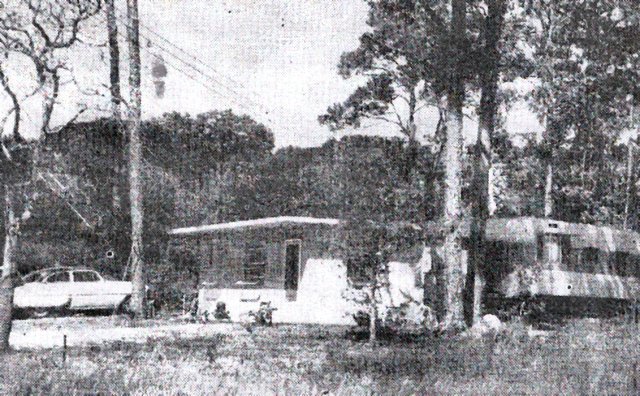
1958 Marine Service Station imbroglio
Alice T. Austin (1908-2001) created her own ‘hurricane’ at the Inner Harbor in July 1958, when she located a house trailer in the rear of her Marine Service Station. The house trailer was to be utilized by a Keesler Field based airman and his spouse who were operating the gas station and store for her. The house trailer seriously divided the Alderman and the Zoning Board. The Zoning Board had ruled together in that Mrs. Austin’s mobile home was legal in the rear of the Marine Mart. On July 21, 1958, the Board of Aldermen rejected their ruling by a three to two vote. John H. Seymour (1923-1991), Alderman representing the 3rd Ward, who was irked about the Austin house trailer, had demanded its immediate removal allowing Mrs. Austin only two hours to have it relocated. Mrs. Austin replied that it had taken three days to install the mobile home on her Inner Harbor property. The Board of Alderman then agreed to give her four days, deemed by them a reasonable time for its relocation.(The Ocean Springs News, August 7, 1958, p. 1)
The Board of Alderman’s ruling was appealed by Alice T. Austin and the mobile home issue was referred to the Jackson County Circuit Court. Immediately, Alderman Chester McPhearson (1924-2006) and John H. Seymour passed a motion “authorizing the city attorney to proceed with a proposed amendment to the zoning ordinance to exclude Trailers from residential areas and Limited Commercial areas.”
In November 1958, Circuit Court Judge Leslie B. Grant ruled that ‘The proposed use of the [Austin] property would not be in violation of the zoning ordinances of the City of Ocean Springs. The ordinances do not prohibit specifically the use of the property in question for the purpose contemplated by the petitioner. Zoning ordinances ar ein derogation of common law rights as to the use of private property and they should not be extended by implication to include restrictions not clearly prescribed. The order of the Mayor and Board of Aldermen of the City of Ocean Springs rendered in this case is therefore reversed….the application of Mrs. Alice T. Austin to locate a portable living unit or trailer at the rear of her Marine Service Station on her property in the limited commercial district of the City of Ocean Springs is granted.” Mayor J.C. ‘Champ’ Gay (1909-1975) said of the trailer debate, “It’s still there and will just remain there. That’s the end.”(The Ocean Springs News, November 27, 1958, p. 1)
Mrs. Austin Marine Service Station was the victim of Hurricane Camile in August 1969. A large pine tree crushed the roof, before it was inundated and destroyed by the surging waters of the tropical cyclone. The marine service station was rebuilt after Camille on the east side of Harbor Drive and called the Marine Mart. In addition to the Mitchell Brothers and Donald Benezue some of the other former lessees of Mrs. Austin Marine Mart tract have been: Sammy Zanca, Ed Jacquet, Ed Jumonville, Wally Ramage, and since 1996, Sherman ‘Rock’ Sekul, and Kenny Dinero.(The Ocean Springs News, February 7, 1957, p. 1 and Herbert Beaugez and Alice Austin Martin-March 2008)
1958-Shearwater Bridge and Kensington Basin
As early as April 1954, plans for enlarging the Ocean Springs harbor to the northeast were in place. The land in this area, which was south of Kensington Avenue and west of Pine Drive, had been platted into three subdivisions: Point-O-Pines (1950); Schluter Park, platted by R.W. Schluter (1890-1966) in March 1952; and Harborland, platted by Julius J. Strayham (1912-1991), et al in May 1956. The Board of Supervisors began acquiring marsh and wetlands tracts in the Point-O-Pines Subdivision at this time. Point-O-Pines, a corporation, was owned by Audrey B. Brou, Harry H. Hayden (1881-1954), and J.K. Lemon (1914-1998), among others.
Schluter Park
Reinhold W. Schluter (1890-1966) was a native of Siegersleben, Germany. He was born there on November 6, 1890. During WWI, he joined the German Navy and saw combat on the high seas. Post war, Mr. Schluter became a merchant sailor and sailed the seven seas until his retirement. Reinhold W. Schluter came to Ocean Springs to reside in 1938.(The Ocean Springs News, April 19, 1962, p. 1)
In March 1952, R.W. Schluter platted his pecan orchard lands along Kensington Drive as the Schluter Park Subdivision. This tract situated in Sections 29 and 30, T7S-R8W, consists of twenty-four lots formerly Block 7 thru Block 14 of the Alto Park Subdivision,(JXCO, Ms. Chancery Court Plat Bk. 2, p. 39)
In May 1962, R.W. Schluter commenced a scholarship fund for the Ocean Springs High School. Nominations for the award were to be made by the faculty based on scholastic ability, personal qualifications, and financial necessity. The initial gift by Mr. Schluter was $500. The R.W. Schluter scholarship is extant today. It is managed by a Gulfport based bank and awarded on a need basis to a selected Ocean Springs student.(The Ocean Springs News, April 19, 1962, p. 1 and Schmidt, 1972, p. 130)
Schluter Park tracts and Inner Harbor Park
In August 1968, the Jackson County Board of Supervisors acquired for $27,900 from Charles Ernest Schmidt (1904-1988), the executor of the R.W. Schluter Estate, several lots in the Schluter Park Subdivision along Kensington Avenue and Pine Drive and the slough extending east from Pine Drive. This land was for further extension of the harbor and for more harbor and recreational facilities. Robert D. Mitchell and spouse conveyed Lot 87-Schluter Park, a key parcel to any new harbor park develop, to the Board of Supervisors in October 1970. It is situated on the southwest corner of Kensington and Pine Drive.(Schmidt, 1984, p. 129, JXCO, Ms. Land Deed Bk. 338, p. 447 and Bk. 388, p. 505)
Harbor Bridges and the Mill Dam Bayou
In the 19th Century, Bayou Baiziene became known as the Mill Dam Bayou. Captain Ellis Handy (1891-1963) who in the late 1940s wrote a column "Know Your Neighbor" for The Gulf Coast Times, interviewed local historian, Joe Lewis "Dode" Schrieber (1873-1951). Mr. Schrieber related that the "Mill Dam" was created by William Gray Kendall (1812-1872), an entrepreneur from Kentucky, who erected a weir or small dam across the bayou to trap tidewater and provide a source of energy to grind corn or other grains at a mill located on that site. The grinding wheel fell into the mud and silt of the bayou when it was abandoned in the 1870s.(The Gulf Coast Times, August 26, 1949).
Naturally, the road crossing the dam was called the Mill Dam Road. It became known as, Anola, probably for W.G. Kendall's daughter, Anola Philomela Kendall (1843-1899). We know this thoroughfare today as Shearwater Drive which derives its name from the Shearwater Pottery established in 1928 by Peter Anderson (1901-1984) and his parents George Walter Anderson (1861-1937) and Annette McConnell Anderson (1867-1964).
1936 Bridge
In January 1936, the old bridge across the "Mill Dam" was replaced. The refurbished span opened for road traffic on January 30, 1936. Ed Voivedich in his Model T Ford was the first to cross the new span.(The Jackson County Times, January 25, 1936, p. 1 and February 1, 1936, p. 3)
1958 Bridge
Construction of the 1958 Shearwater Bridge was commenced in January 1958 by Newsom Construction Company. The18-foot tall bridge across the Ocean Springs Inner Harbor cost $17,000. The bridge was named "Shearwater" to honor the Shearwater Pottery and the George Walter Anderson family for their contribution to the development of the Ocean Springs Inner Harbor.(The Ocean Springs News, January 16, 1958, p. 1)
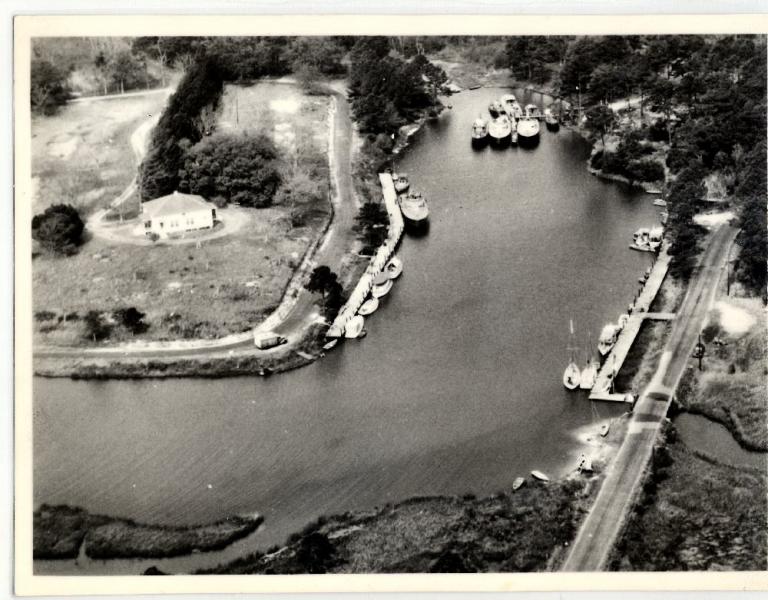
Mill Dam Bayou-Shearwater Bridge-This aerial photograph made circa 1944 depicts the road level span that crossed the Inner Harbor at this time. The old bridge was refurbished in in 1935-1936 and when opened in late January 1936, Ed Voivedich (1904-1972) in his Model T Ford was the first to cross it. The large structure on the west side of the Inner harbor is the John A. Rehage house at 1220 Harbor Drive, which was erected in February 1904. The Army Air Corps crash boats and base situated on Hellmer’s Lane were in operation at this time. Mill Dam Bayou, which would be dredged in the late 1950s or early 1960s, to createthe Kensington Basin harbor was dug by the County using a dragline operated by H.F. ‘Dubie’ Dubuisson (1922-2008).{Courtesy of Guy L. Gammon (1916-2011), Laverne, California-1999]
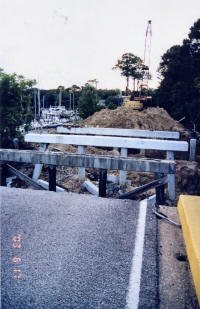
The 2003 Shearwater Bridge-An excellent example of governmental and bureaucratic ineptness, this small span replaced the 1958 bridge that was closed in October 2001 due to public safety concerns. Contractors weren’t able to commence construction of a new structure across Shearwater Drive until May 2003 until the USCG completed its assessment of the Inner Harbor as a navigable waterway. Formal dedication of the new span was held in April 2004 with the Peter Anderson family, HOSA and city officials participating.[Credit: Ray L. Bellande-June 2003]
2003 Bridge
The 1958 Shearwater Bridge ceased operations in October 2001 due to concerns for public safety. After multiple delays especially the difficulty with obtaining permits from environmental and governmental bureaucratic czars, construction began on a new span across the small craft harbor at Ocean Springs in late May 2003. A permit from the United States Coast Guard was the last to be obtained. The bridge erection at a cost of $360,000 was supervised by Batson & Brown Inc. Subcontractor, the Tony Parnell Construction Company, built the structure.(The Mississippi Press, May 30, 2002, p. A-1, The Ocean Springs Record, May 15, 2003, p. 1 and The Sun Herald, September 16, 2003, p. A3)
Aesthetics
In March 2002, HOSA [Historic Ocean Springs Association], a small but aggressive civic organization, which for over twenty-five years has supported the local community in financing projects beneficial to the cultural and commercial growth of Ocean Springs, came forward with a proposal to place ‘aesthetic railing and street lighting’ appropriate for the new Shearwater span. Jack Kling Garrard (1950-2012), representing HOSA, informed the City that HOSA would provide $10,000 of the estimated cost of about $26,000 for their lighting and railing scheme for the new bridge.(The Ocean Springs Record, March 7, 2002, p. A1)
Dedication
The new Shearwater Bridge was dedicated on April 20, 2004 with Mayor Seren Ainsworth, District 4 Supervisor Franklin Leach and city aldermen and members of HOSA in attendance. A bottle of champagne was broken on the new structure by Marjorie Anderson Ashley, the daughter of Peter Anderson (1903-1984), James McConnell Anderson, the son of Peter Anderson, and his spouse, Margaret Hollingsworth Anderson.(The Ocean Springs Record, April 22, 2004, p. A1)
The plaque placed on the new Inner Harbor span reads as follows:
SHEARWATER BRIDGE
OPENED OCTOBER 8, 2003
This bridge was built through the efforts of: The City of Ocean Springs Mayor & Board of Aldermen
The Jackson County Board of Supervisors
The Historic Ocean Springs Association (HOSA)
The Taxpayers of the City of Ocean Springs & Jackson County
OSYC
The Ocean Springs Yacht Club was conceived on the Ocean Springs Inner Harbor in the Hellmer’s Lane home of Bache Whitlock (1915-2002) in January 1969, with the cooperation and enthusiasm of his neighbor, Dr. Richard T. Furr (1929-2006). Bache and Dick Furr were soon joined by William R. Allen (1911-1985), A. Russell Moran (1930-1981), A. Bruce Duckett, and Janet Ferson Green to found the OSYC. The OSYC initially used the ski dock at Gulf Hills on Old Fort Bayou as their home with fourteen Sunfish as their ‘bateau de jour’. Because the shallow water in Old Fort Bayou was not conducive for enjoyable sailing, the OSYC relocated to the lawn of Dr. Kenneth Davidson at Point Porteaux. The ‘gypsy’ sailors then relocated to the Inner Harbor in 1970 acquiring a lease at present day 1215 Harbor Drive from Harry Rehage (1914-1999).(Whitlock, 1980, pp. 1-2)
Construction of the first OSYC clubhouse began in August 1970. At this time, Matt Grace was building modular homes and he took a contract to prepare the site, drive piling, and erect the yacht club on Harbor Drive. Before the two-halves of the modular structure were assembled, it mysteriously burned in situ. Another building was soon delivered and in January 1971, the OSYC opened on the Inner Harbor. The local sailors relocated to Front Beach into a $180,000 building erected by Neirynck Construction Company, which was dedicated in December 1977.(The Ocean Springs Record, August 20, 1970 and January 28, 1971, p. 14 and A.Bruce Duckett, March 2009 and Whitlock, 1980, p. 2)
Ironically, both the old and new OSYC buildings were victims of Hurricane Katrina in August 2005. The original building on the Inner Harbor had been converted into a residence and owned by Jack and Beth Riley at the time of Hurricane Katrina. Only the two-story, east addition which was built in 1995, by Robert ‘Bobby’ Schrieber and Adrian Turner, the then owner, survived the tempest and is utilized today by the Rileys as a short-term rental.
1974-Bowring v. Board of Supervisors
Wilda Lopez Bowring (1899-1977), the spouse of Lynden Bowring (1889-1980), sued the Jackson County Board of Supervisors because she claimed that the boat docks in front of her property at the foot of General Pershing Avenue belonged to her. This cause was settled out of court, as it was determined that the tract in question had been used by the County uncontested since 1945 for piers and boat slips, i.e. adverse possession. Mrs. Bowring received some relief as it was ordered that those boat slips constructed at the extreme west end of the harbor in front of her lot be removed since they were erected only a year past.(The Ocean Springs Record, December 12, 1974, p. 1 and December 19, 1974, p. 1)
1984-Inner Harbor Park
The Inner Harbor Park which is located on the northeast corner of Kensington and Pine Drive was dedicated on April 7, 1984 by US Senator Thad Cochran (R) of Mississippi. Over sixty people attended the event and were served BBQ chicken. The Ocean Springs High School tennis team was invited to the dedication to play on the new tennis courts. Although a federal grant and local matching funds of $154,000 was appropriated for the park’s construction, the actual cost was only $119,500. Jackson County officials returned the remainder of the funds to the federal government. Senator Cochran remarked that this was the first time that he could recall that the government ever received grant money back. David Scruggs and Design Collective Inc. of Biloxi designed the new facility(The Ocean Springs Record, April 12, 1984, p. 1)
Playground equipment
In June 1994, Beat Four Supervisor Sharon Landry replaced the playground equipment in the Inner Harbor Park and had it revitalized.(The Ocean Springs Record, June 16, 1994, p. 1)
1985 Renovations
Extensive renovations of the Inner Harbor were undertaken commencing in the spring of 1985. The first phase of this $125,000 project consisted of improving and adding to the existing facilities which were utilized by the public: boat launch ramps, pier and parking. The two existing boat launch ramps at the channel mouth were rebuilt and two new ramps were constructed. Tie-up piers, both north and south of the boat ramp, were erected and new bulk heading was built from the launch ramp south to the Public pier. Land for the new boat ramps was leased from Alice Tee Weir Austin (1908-2001) and Alice Austin Martin, her daughter. A new Public pier to feature a pavilion and improved lighting was also planned. The Jackson County bridge and maintenance and construction crew performed the Phase I work at the Inner Harbor.(The Ocean Springs Record, May 30, 1985, p. 2)
1987-Dr. Furr v. Board of Supervisors
In early May 1987, Dr. Richard T. Furr (1929-2006) and spouse filed litigation against the Jackson County Board of Supervisors to confirm title on their land in the Harborland Subdivision. The Furr tract ran from Warren Drive to the shoreline of the Kensington Basin anchorage. Tommy Brodnax, Beat Four Supervisor at this time, contended that the lands along the Kensington Basin harbor, including the asphalt road and pier belonged to the people of Jackson County, Mississippi because it had been deeded to the County in 1954. Larry Corban, Biloxi attorney, represented Dr. Furr who requested that the County remove its equipment and moored vessels that were trespassing on his client‘s property.(The Ocean Springs Record, May 14, 1987, p. 1)
In August 1992, the Chancery Court ruled against Dr. Furr in favor of Jackson County in his litigation over his Kensington Basin acreage. The Furrs considered an appeal to the State Supreme Court.(JXCO, Ms. Chancery Court Cause No. 50767-May 1987)
1989-Jackson County vies with BMR
In April 1989, the Bureau of Marine Resources, now called the Department of Marine Resources, issued a cease and desist order to Jackson County for their work at the Inner Harbor because it had determined that the appropriate permit had not been granted. The County was halfway through its new docking and bulk heading work at the facility. One of the salient concerns of the BMR was that the County create ‘new’ wetlands near the Inner Harbor Park to replace wetlands lost by the Inner Harbor improvements.
This impasse was resolved in October 1989 as the County agreed to create 1500 square- feet of wetlands near the Inner Harbor Park to replace the 1400 square-feet of water bottom that was filled. District 4 Supervisor Tommy Brodnax opined that “the agreement that was worked out….could have been worked out on the spot five months ago if we had agencies that that were interested in saving the public money.” Brodnax estimated that the delay added an additional $50,000 to the project’s cost.(The Ocean Springs Record, April 20, 1989, p. 1 and October 15, 1989, p. B-1)
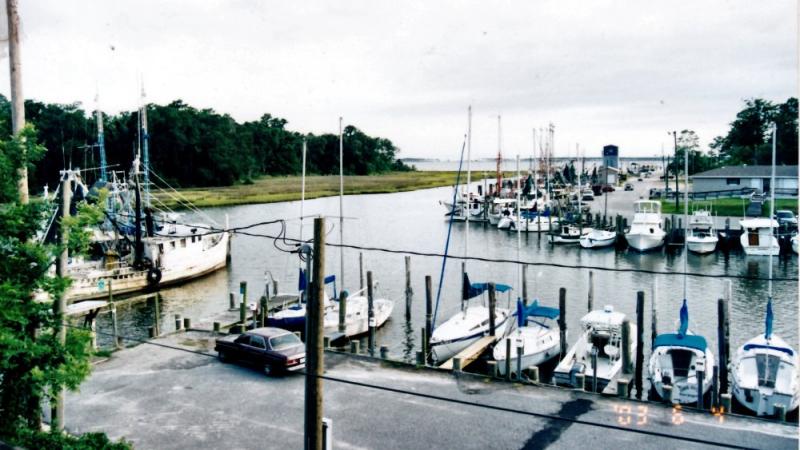
2003 Halcyon Days-This image was made in early June 2003 looking south from the Shearwater Bridge ramp before Hurricane Katrina’s unwelcomed August 2005 visit. The ranch-style home on the west side of the Inner Harbor at 1310 Harbor Drive was the domicile of Thomas Reynolds Jr. at this time. It was acquired in January 2005 by Jackson County and became the Harbor Master’s House. Harbormaster Johnny Hughes moved his office from the Jackson County Tax Collector's Office on North Washington Avenue to the Inner Harbor. It was destroyed by Hurricane Katrina in August 2005.[Courtesy of Ray L. Bellande-June 2003]
‘For the Birds’
In early 1994, the Board of Supervisors made a decision to add ten additional boat slips on the west side of the Kensington Basin adjacent to Dr. Richard T. Furr’s (1929-2006) property. This area of the harbor was also to be dredged and the parking lot improved with funds derived from State Tidelands leases. Near the water’s edge on the Furr tract is a grove of shrubs and trees, which serve as a gathering place for large accumulations of egrets, especially in the evenings. This ‘rookery’ was threatened by the Inner Harbor expansion and local conservationists vehemently protected. Public opinion ruled and this area of the Kensington Basin remained undisturbed for nearly a decade. (The Ocean Springs Record, February 3, 1994, p. 3 and February 1, 1996, p. 1)
1996-Kensington Basin projects
In late February 1996, the Ocean Springs Harbor Commission, ably led by Brad Lemon again planned to add seven boat slips to the Kensington Basin portion of the Inner Harbor and dredge areas germane to boat traffic in this area. Typical of Ocean Springs, the proponents of Inner Harbor improvements were greeted by caveats from the opposition citing that the “heron” rookery would be disturbed and that the heavy metals and other pollutants in the water bottoms would be stirred and released into the waters of the harbor.(The Ocean Springs Record, February 29, 1996, p. 1)
By July 1996, the Department of Marine Resources had provided the County with $150,000 of funds from its tideland lease revenues to commence improvements in the Kensington Basin. The project was to consist of dredging 10,000 cubic yards of sediment from the anchorage and build a pier and bulkhead the Pine Drive area of the basin. (The Ocean Springs Record, July 25, 1996, p. 1)
Tony Parnell Contractors was engaged by the County to build seven boat slips and dredge the harbor. By late October 1996, Parnell was forced to cease his operations because the site in Biloxi that he was to use for the dewatering of the dredge spoils was no longer available for this purpose. It wasn’t until May 1997, that Parnell Contracting received its permit to use a site on Old Fort Bayou for dewatering Inner Harbor dredge spoils. By mid-June 1997, dredging operations were resumed and the project expected to be completed in sixty days.(The Ocean Springs Record, October 31, 1996, p. 1, May 1, 1997, p. 1, May 29, 1997, p. 1 and June 19, 1997, p. 1)
1997 Pier and dredging
In late November 1997, Jackson County announced plans to dredge a new channel from Biloxi Bay into the Ocean Springs Inner Harbor. A new pier was also planned. $150,000 allocated for these projects.(The Ocean Springs Record, November 27, 1997, p. 1)

Harbor Landing Marina and Restaurant
Harbor Landing Dry Stack Marina-This large, recreation and fishing boat storage structure was erected between March 2004 and March 2005 by Anchor Realty Company for Harbor Landing LLC. The building was damaged in Hurricane Katrina and demolished in November-December 2013. [L-R: June 2004 and July 2004-images by Ray L. Bellande]
The Harbor Landing Dry Stack Marina and Restaurant have been venues of controversy since their completion in 2005 and 2007 respectively by Harbor Landing LLC , a Mississippi corporation owned by local entrepreneur, I. David Harris Jr. et al.
In early January 2004, Harbor Landing LLC acquired 1.81 acres on the west side of the Inner Harbor from Earl H. Fayard Jr., former Front Beach seafood retailer. The Fayard tract was about 190 feet wide by 410 feet deep with some water bottom acreage in the Inner Harbor. Mr. Fayard had formerly operated a small ice plant here. The Haviland family had once possessed this particular tract and had conveyed it to Mr. Fayard earlier.(Jackson Co., Mississippi Land Deed Bk . 1328, p. 278)
In February 2004, Harbor Landing LLC acquired a building permit from the City to erect a large metal building at 1709 Harbor Drive. The $575,000 structure was to be utilized to store recreational and fishing boats for a fee based on the length of the watercraft. Construction began in March 2004 with Anchor Realty Company, a local company owned by Danny Jalanivich, as general contractor. Mr. Jalanivich served the citizens of Ocean Springs as its Alderman-at Large from 1997 until 2005.(City of OS, Mississippi Building Department)
Harbor Master Quarters
Until very recent times, the Ocean Springs harbor master lived at his residence before an office with clerk was established at the Jackson County business and tax collector’s office complex at 6912 North Washington Avenue.
In January 2005, the Jackson County Board of Supervisors and Ocean Springs Harbor Commission acquired a house and lot at 1310 Harbor Drive from Thomas L. Reynolds Jr. This structure cost about $250,000 and was utilized as an office to oversee functions at the small craft harbor facility. Harbormaster Johnny Hughes moved his office from the Tax Collector's Office on North Washington to the Inner Harbor.(TheBay Press, January 19, 2005 and The Ocean Springs Record, January 20, 2005, p. 8B)
The ‘new’ Harbor Master House, a ranch-style structure, had been erected probably in 1959 by James T. Andrews and Fay Moran Andrews who acquired the lot from Gunnar J. Johnson for $4200 in March 1959. It was destroyed by Hurricane Katrina in late August 2005 and the roof settled in the harbor and was visible at low tide.(The Sun Herald, September 18, 2006, p. A-8)
Hurricane Katrina was remembered by Harbor Master Johnny Hughes as follows: “the harbor was [in] a shock after Katrina. They had backed up the harbor computer records, double bagged them and placed them and other things in in the top cabinets of what had been the kitchen before the [Reynolds] house was converted into an office. We found the kitchen cabinets on Hellmer’s Lane across from the harbor, but the harbor’s record of the 200-person waiting list for boat slips was intact. This was probably the most important information that was saved.”(The Sun Herald, September 18, 2006, p. A-8)
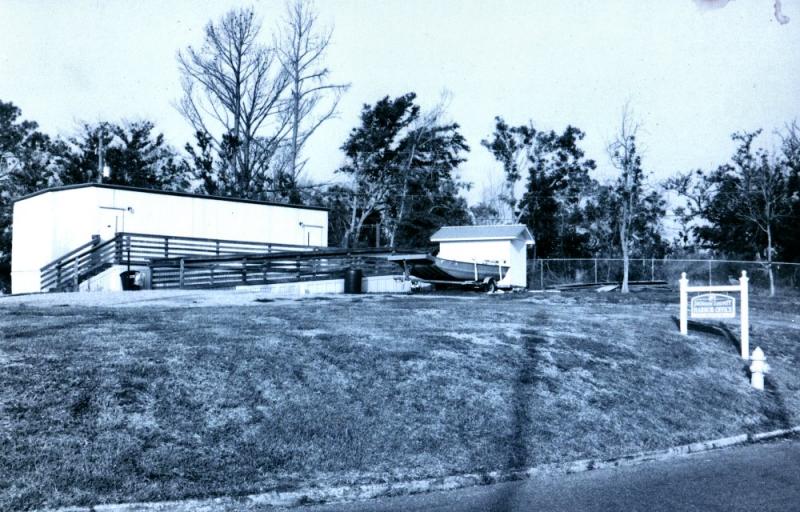
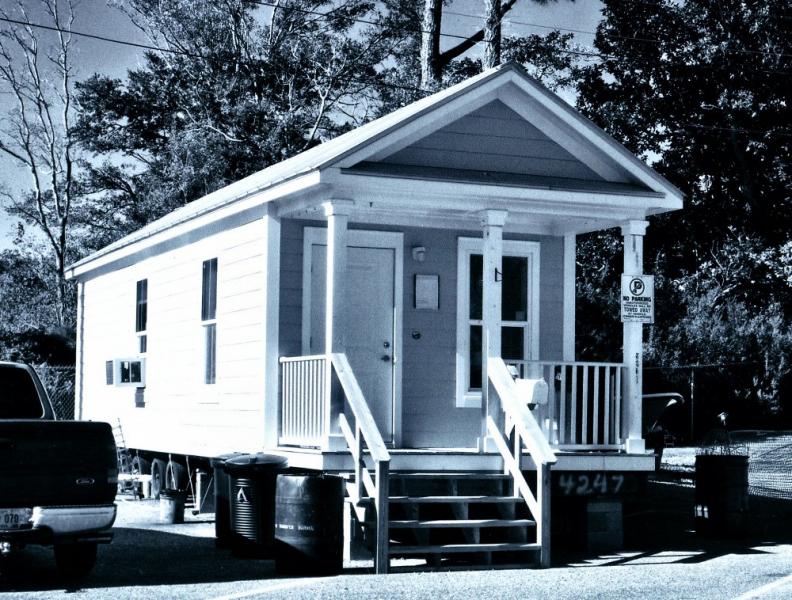
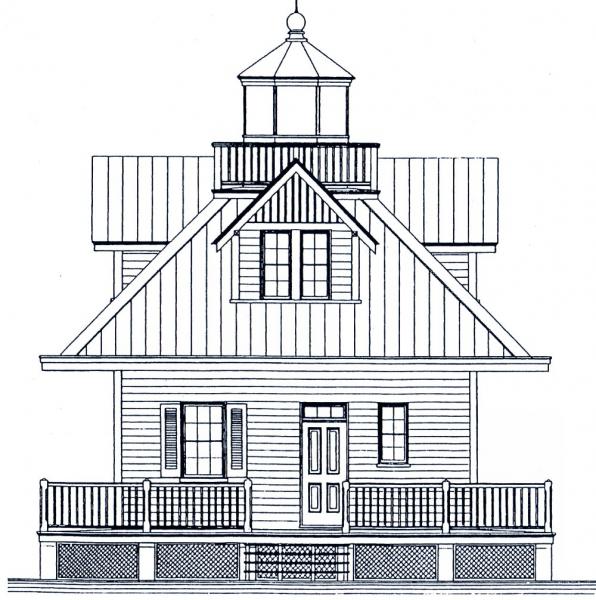
[L-R: Trailer building [image made September 2006] utilized until about November 2006 when it was replaced by a Katrina cottage [image made December 2010]. Third image an idea for the Harbor Master house proposed at the October 2005 Charrette planning sessions held a Biloxi. It was rejected by the Board of Supervisors.[images by Ray L. Bellande]
Between the Katrina disaster of August 29, 2005 and the completion of a new Harbor Master house in July 2011, Inner Harbor business was conducted briefly in a trailer and then relocated to a Katrina Cottage.(Donna Hipp, March 5, 2014)
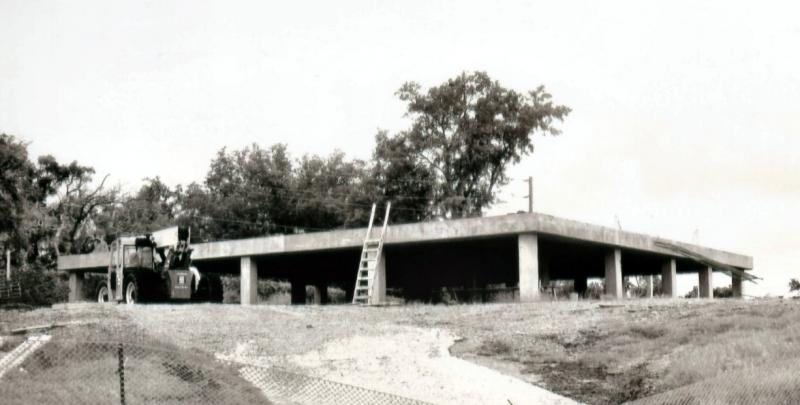
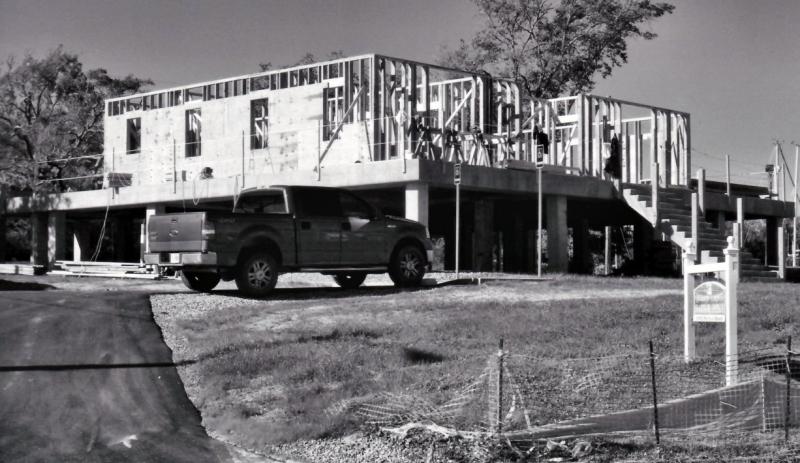
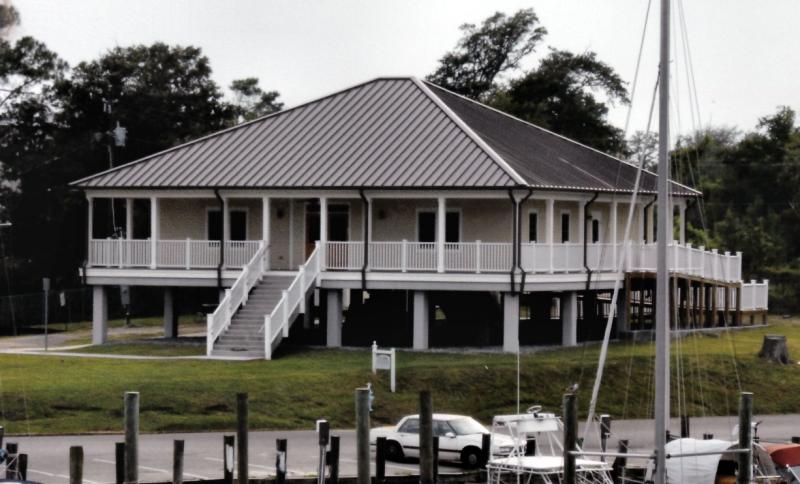
November 2010 December 2010 August 2011
2011 Harbor Master House
In 2006, when it came time to discuss the building of a post-Katrina Harbor Master House, Brad Lemon, Chairman of the local Harbor Commission made a logical recommendation that the architectural style of the structure mimic that of the old Dolph Schrieber oyster house at Marsh Point which Mr. Schrieber had christened "The Little Black Diamond". Known locally as ‘the shack’, this small over-water structure on creosote pilings was completed on July 4, 1904, by Frederick “Dolph” Adolph Schrieber (1871-1944) who had been active in the oyster business as early as March 1902, when he and E.N. Ramsay (1832-1916) and George W. Dale (1872-1953) applied to the Jackson County Board of Supervisors for an oyster planting lease on eighty acres of "land that is underwater" west of Marsh Point. Dolph planted over ten thousand barrels of oysters in Davis Bayou opposite his house. He and his wife, Lilly Alice Rupp (1889-1972), occasionally lived here to protect their oyster beds from poachers. Mrs. Lilly Schrieber reported that she once shot several holes through the skiff of an oyster thief one night. The Schrieber oyster house survived storms and hurricanes for many decades, but was probably finished off by Hurricane Camille in 1969.(The Progress, July 9, 1904, p. 4 and The Daily Herald, November 16, 1957)
Dolph Schrieber left the oyster business and the United States Public Health Service to join the US Lighthouse Service in 1908. After a peripatetic career mostly in Louisiana, he retired as Biloxi’s lighthouse keeper in 1937. Mr. Schrieber’s father-in-law, Marshall Robert W. Rupp (1857-1930). found the iconic ‘Iberville Plaque’ or ‘Fort Mauepas cornerstone’ on Front Beach at Ocean Springs in 1910.
The October 2005 Charrette planning meetings held at the Isle Casino in Biloxi following Katrina produced some interesting recommendations for future architectural designs along the Mississippi Gulf Coast. Architects from many areas of the country met and the committee assigned to Ocean Springs recommended that a new harbor master house at our Inner Harbor have the appearance of a 19th Century, Horn Island lighthouse. By September 2006, FEMA had pledged$340,000 to the Jackson County Board of Supervisors for the new structure and another $60,000 if the building had hurricane prevention measures, like special shutters.(The Sun Herald, September 18, 2006, p. A-8)
2011 Harbor Master House
By the time construction of the new Harbor Master house began in the spring of 2010 its cost had escalated from $400,000 in 2006 to over $1 million dollars.
Fletcher Construction Company was awarded the $399,000 contract to erect the foundation for the $1.2 million Harbor House in January 2010. Construction for the 2100 square-foot structure was scheduled to commence in March 2010. Beat Four Supervisor Tommy Brodnax said that the new Harbor Office is more like a 'Taj Mahal' than a building to house three employees. The new quarters were built at an elevation at 21-feet above sea mean level or about 8-feet above the ground level. The building has a meeting space for the Ocean Springs Inner Harbor Commission meetings; a harbor Master's office; kitchen; showers; washer and dryer; and another office space for the administrative staff. Harbor business commenced here in July 2011 with Bill Richman, as harbor master and Donna Hipp, as the office manager.(The Ocean Springs Gazette, January 6, 2010, p. 1 and Donna Hipp-March 2014)
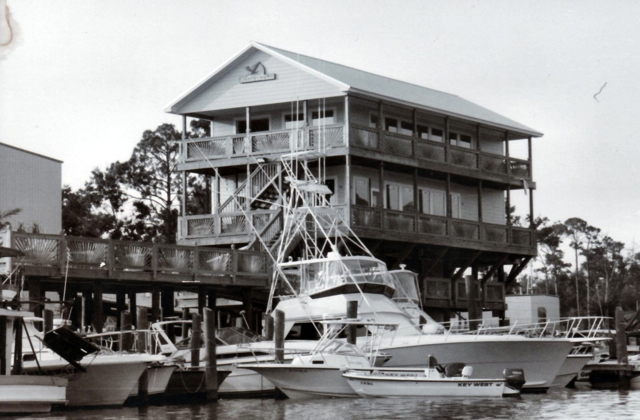
July 2007
Harbor Landing Restaurant
In the summer of 2006, Harbor Landing LLC received a permit from the City of Ocean Springs to erect a restaurant building on its tract of land on the west side of the Inner Harbor and opposite its Dry Stack Marina and east of Harbor Drive. The tri-level, wood-framed and exterior Hardie cement board, structure on pilings with a large deck on the south side was built by Anchor Realty Company, general contractor. Anchor also built the Harbor Landing LLC Dry Stack Marina in 2004-2005.
The City of Ocean Springs issued the Harbor Landing Restaurant a privilege business license in late September 2006 to operate a delicatessen, ship’s store and office from their new enterprise on Harbor Drive.
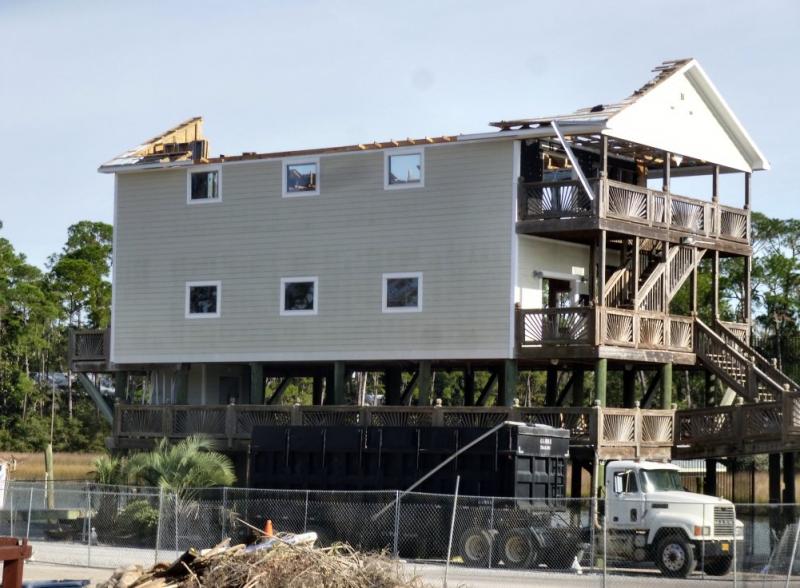
Demolition Day-Commencing in November 2013, the Mississippi Department of Marine Resources through their contractor, Demolition Inc. of D'Iberville, Mississippi, began removing the dry stack marine and restaurant, the two commercial structures, erected by Harbor Landing LLC.
Controversy on the Water
The Harbor Landing Dry Stack Marina and Restaurant were venues of controversy since their completion in 2005 and 2007 respectively by Harbor Landing LLC. The restaurant in particular disliked by some for its visual pollution, creation of parking issues and ‘noise’. Like other divisive issues along the Inner Harbor, this resolution was decided in the Jackson County court system.
In July 2008, the Jackson County, Mississippi Circuit Court ruled favorably for the defendants, City of Ocean Springs and the Harbor Landing Restaurant, against the plaintiffs, 'Friends of the Harbor", led by A. Bruce Duckett, Alice P. Duckett and other denizens with interest in preserving their quality of life in propinquity to Inner Harbor activities. The Ducketts and many neighbors along the Inner Harbor believed that the City erred in issuing a building and use permit for the Harbor Landing Restaurant. The Ducketts et al contended that the harbor area was not zoned for such activity and appealed the Circuit Court’s July decision.(The Ocean Springs Record, July 10, 2008, p. A1)
Harbor Landing 'Yacht Club'
In December 2009, the 'Friends of the Harbor' saw the State Court of Appeals reverse the Jackson County Circuit Court decision that allowed the Harbor Landing Restaurant to operate. In January 2010, the Board of Aldermen also reversed their 2007 decision allowing the I. David Harris Jr. family to operate a restaurant at the Ocean Springs Inner Harbor.
Since City ordinances would allow the controversial Inner Harbor eatery to continue if it were a private club. Harbor Landing Restaurant was transformed and allowed to continue in the food and beverage service business at this attractive site on the Inner Harbor when I. David Harris Jr. converted his business into a "private yacht club'. The annual membership dues of $15 were also applied towards the 'new members' first meal.(The Sun Herald, January 20, 2010, p. A7)
Sale
In late November 2010, the Harbor Landing Yacht Club and Boat Shed was acquired by the Mississippi Department of Marine Resourcesfor $3.65 million dollarsusing Coastal Impact Assistance Program [CIAP] money. A report by the Office of the Inspector General of the US Department of Interior for land appraisals criticized DMR for its high appraisal of the Harbor Landing LLC tract. Jackson County tax rolls had the property valued at $1.3 million. Anyone who owns property in Jackson County, especially Ocean Springs, and has vended or acquired real property in recent years knows that the selling price and the County appraisal price can vary by more than 100%. In this regard, there is a high degree of certitude that DMR was paying ‘fair market value’ for the Inner Harbor tract and not a ‘blue sky’ price as critics of DMR business practices have contended.(Jackson Co., Mississippi Chancery Court Land Deed Bk. 1628, p. 650 and Bk. 1733, p. 213, The Sun Herald, December 9, 2010, p. A4 and December 16, 2010, p. A1)
Before DMR formulated a plan to demolish both structures and donate the land to the County for more parking and beautification, the City of Ocean Springs promoted the idea of ‘land swap’ by DMR with Steven Carter who owned of a tract on Back Bay in Biloxi. Carter would continue operating the dry stack marina on the Inner Harbor at Ocean Springs with its capacity to store about 170 boats.(The Sun Herald, November 8, 2012, p. A2)
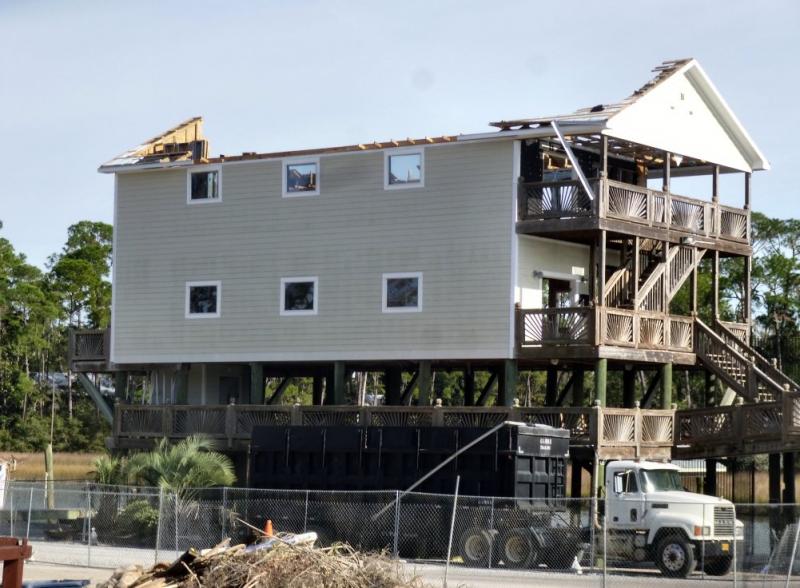
Demolition
The State Department of Marine Resources accepted the low bid $118,545 to demolish and remove the boat storage shed and restaurant that it had acquired from Harbor Landing LLC to Demolition Inc. of D'Iberville, Mississippi. Their low bid was $118,545. The highest of the ten bids received by DMR was $433,000. The demolition project officially started on November 5, 2013 and the company had until February 4, 2014 to complete the work. when the property was on the Jackson County tax rolls at a value of $1.3 million. A 2012 federal audit questioned the purchase partly because Harris and then-DMR Director Bill Walker were friends.(The Sun Herald, November 4, 2013)
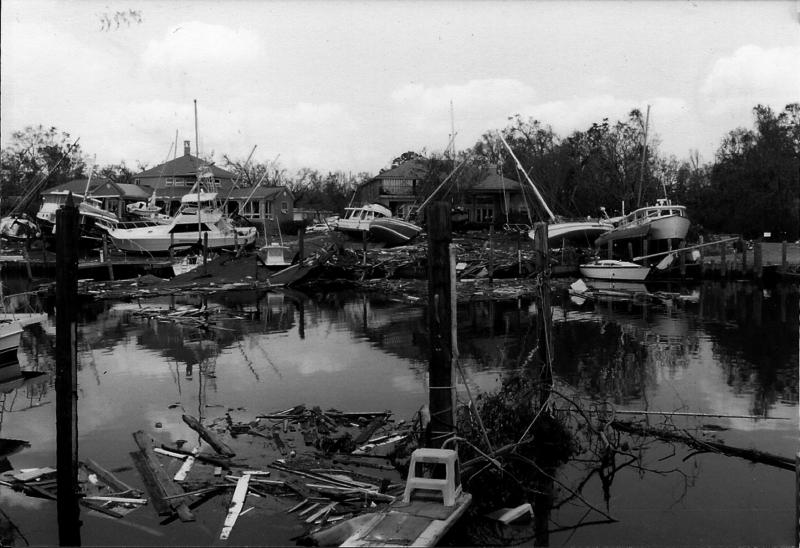
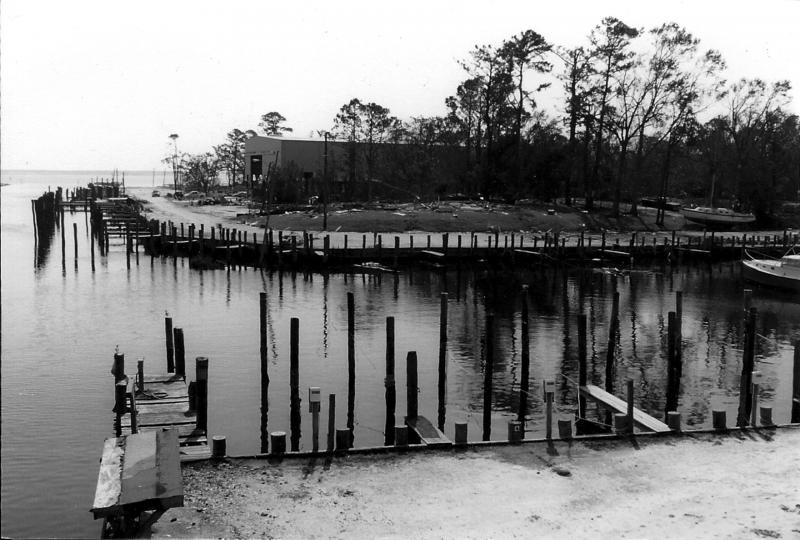
Inner Harbor-September 2005
[images by Ray L. Bellande]
Katrina
In the morning of 29 August 2005, the effects of the tidal surge created by Hurricane Katrina, a category 3 storm, began to be felt in the Biloxi-Ocean Springs area as water began to slowly rise in Biloxi Bay and proceed to inundate Back Bay and all low-lying areas and to follow bayous, steams, ravines etc. until reaching the 15-foot to 20-foot above mean sea level.
The Inner Harbor and Shearwater Pottery on its eastern perimeter were particularly hard hit by this powerful tempest. My personal experiences at 525 Jackson Avenue were fairly typical of past hurricane experiences-loss of electricity; hurricane-gale force winds; rain in varying amounts and intensity; trees bending and an occasional uprooting; flying objects-particularly roofing materials and unsecured objects.
By 3 p.m. of 29 August 2005, the winds had diminished to about hurricane force and I ventured out of my residence to make a cursory assessment of local damage. Other than a most old and venerable sycamore tree, which had fallen in my yard and across Jackson Avenue from the east, all seemed relatively well. Soon an adventurer in a small truck stopped and began to inform me of the more serious nature of Katrina’s uninvited and much to long visit.
After hearing about the virtual destruction of the Biloxi Bay Bridge and inundation of the Front Beach and surroundings, I was joined by the Snyder family who had spent the day in the safety of the Bradford-O’Keefe Funeral Home on what had once been called O’Keefe’s Corner. Susan O’Keefe Snyder entered a state of angst when she heard the news of the wide spread flooding. She and Chris, her spouse, walked south down Jackson Avenue to discover that their wonderful, 19th Century home had indeed survived the storm. Others were not so fortunate as our oldest street in its lower areas had been dealt some catastrophic damage.
For your viewing today, I am sharing some of my Katrina images of the Inner Harbor made shortly after Katrina’s visit. Yes, Katrina there was a tomorrow and we have recovered well, but please don ‘t return anytime soon! auRayvoir!!
Post-Katrina improvements
As part of the US Army Corps of Engineers Mississippi Coastal Improvements Program, work was commenced in March 2009 to protect the elevated road bed on both sides of the Shearwater span from erosion.(The Ocean Springs Record, March 26, 2009, p. 15)
Harbor Pier
A Katrina replacement Inner Harbor pier into Biloxi Bay was built on the footprint of the old structure, which had been erected commencing in June 2008. The new wharf was 770 feet in length, ten feet wide, and had two gazebos with picnic tables and benches. The pilings for the structure were concrete and the finished project cost was $777,000 dollars, which was funded by FEMA. It was completed in early January 2009.(The Ocean Springs Record, June 12, 2008, p. A1 and The Sun Herald, January 18, 2009, p. A3)
Christmas boat parade
The first Ocean Springs Inner Harbor Christmas boat parade was held on December 13, 2008. The Pete and Sharon won honors for Santa's Best of Fleet.(The Sun Herald, December 7, 2008, p. A4, The Ocean Springs Record, December 11, 2008, p. B1, and The Ocean Springs Record, December 18, 2008, p. A1)
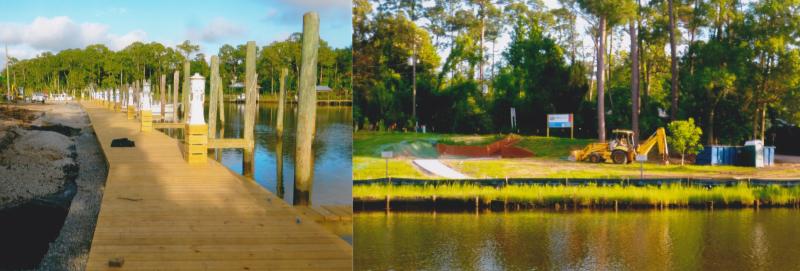
Kensington Basin improvements and Shearwater Park construction in 2012
[images by Ray L. Bellande]
Harbor renovation and improvement planned
With $3 million dollars of Federal funds remaining from replacing the US Highway 90 fishing bridge with a planned $2.2 million dollar, 1320-foor fishing pier, the Board of Supervisors used these funds to replace bulkheads and make electrical repairs at the Kensington Basin area of Inner Harbor. Mayor Connie Moran pointed out that $350,000 could be saved by not replacing the entire Kensington bulkhead because some of it is in good condition. The savings could be spent on landscaping, parking and lighting.(The Ocean Springs Gazette, September 23, 2009, p. 1 and The Ocean Springs Record, September 24, 2009, p. 1)
2011- New Harbor Parks
In the summer of 2011, the City of Ocean Springs with HOSA in concert developed plans for two additional green spaces on the Kensington Basin or northern portion of the Inner Harbor at Ocean Springs. One park, to be called 'Shearwater Park', because of its propinquity to Shearwater Drive and also because it is situated just north of the Shearwater Pottery, was built with as a simple, site with walkways, a butterfly garden, and a viewing area with seating to observe the snowy, egret rookery on the northwest side of the back harbor near the Henry Hansel Furr property. An interesting feature of this green space will be a pet drinking fountain! HOSA in addition within Shearwater Park had built a garden in memory of John Blossman (1943-2009), a gentleman, scholar and philanthropist.(The Sun Herald, August 14, 2011)
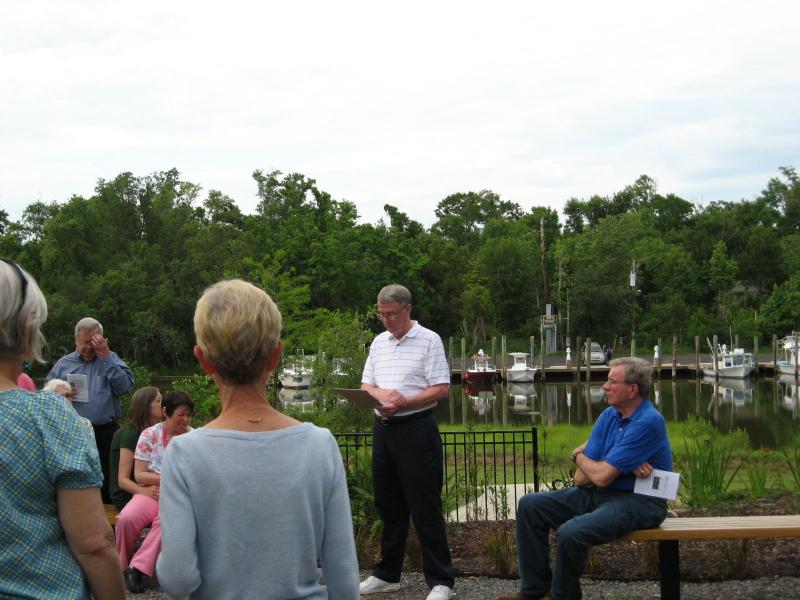
Shearwater Park dedication-On May 22, 2013, HOSA [Historic Ocean Springs Association] held a dedication ceremony at its most recent civic accomplishment-the John R. Blossman (1943-2009) Garden within Shearwater Park. This small green space on the Inner Harbor’s Kensington Basin and Shearwater Drive opposite the Shearwater Pottery was preserved from commercial development through the efforts of the Department of Marine Resources, the Jackson County Board of Supervisors and the City of Ocean Springs all in concert with HOSA and the Mississippi Land Trust. In this image Larry Cosper [center], businessman, community leader and volunteer and former City Alderman, is honoring the memory and accomplishments of John R. Blossman for whom the gardens were named.[Image courtesy of HOSA]
Shearwater Shearwater Park
The Shearwater Park and John Blossman Garden was envisioned by HOSA [Historic Ocean Springs Association] in 2008 to utilize a small tract of land on the Inner Harbor’s Kensington Basin and Shearwater Drive, just east and north of the Shearwater Bridge. It had formerly been the site of a 1950s Arkansas tile house that had been devastated by Hurricane Katrina. While zoned commercial the small parcel was acquired by the Department of Marine Resources, who made arrangements with HOSA to maintain the parcel as an Inner Harbor green space.
Ground breaking for this verdant venture was on July 25, 2012. It was built by Orocon Incorporated, who also were responsible for Fort Maurepas Park, another City treasure. Shearwater Park was designed and built with a walking path; flower and shrub plantings; benches to view the Kensington Basin and egret rookery; planting as examples of Ocean Springs five protected trees-the Live oak, sycamore, cypress, magnolia, and cedar, and a plaque honoring John R. Blossman (1943-2009). The Shearwater Park and John Blossman Garden were dedicated on May 22, 2013. Larry Cosper, long time HOSA member and City activist, spoke of Mr. Blossman’s contributions to Ocean Springs, the City that he deeply loved and appreciated.(The Ocean Springs Record, August 9, 2012, p. 1 and May 30, 2013, p. 1)
2014-New Harbor Master
Danny Jalanivich, former Alderman-at Large and OS Harbor Commissioner, was hired by Jackson County as OS Harbor Master in mid-August. His salary was approximately $50,000 annually. In mid-September, Amanda Kennerly, an attorney, reported that Jalanivich was inquiring about the condition of her husband's sailboat moored in the harbor. Kennerly was concerned that Jalanivich might seek revenge on her family as she was a leader for Friends of the Ocean Springs Harbor in its litigation over the Harbor Landing Restaurant and boat storage facility.(The Sun Herald, August 15, 2014, p. A-5 and September 11, 2014, p. A-2)
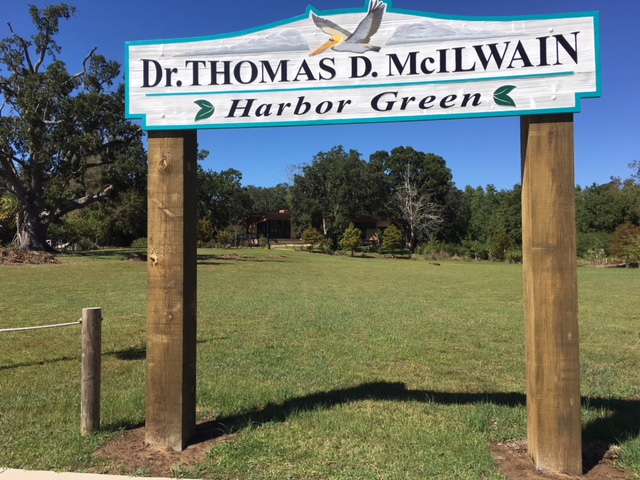
[image made October 17, 2017]
Thomas D. McIlwain Harbor Green
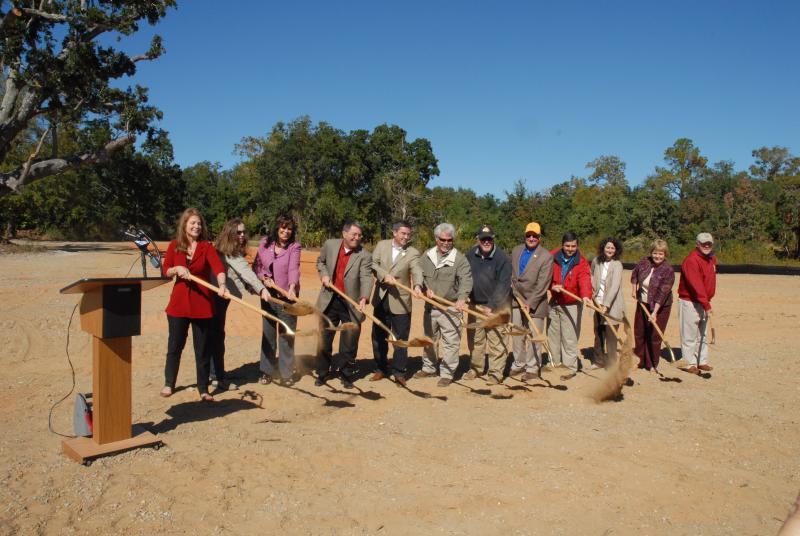
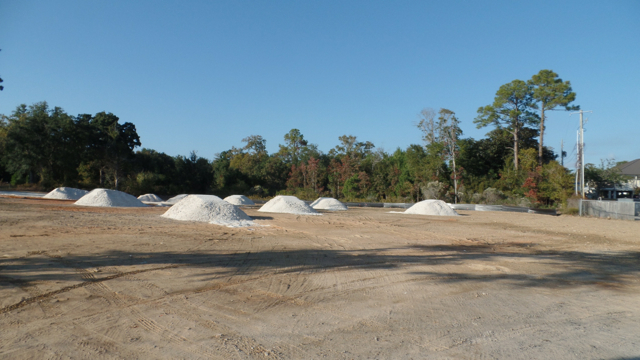
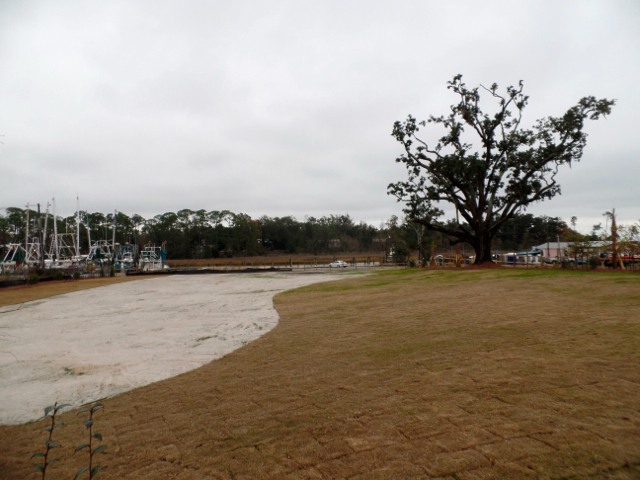
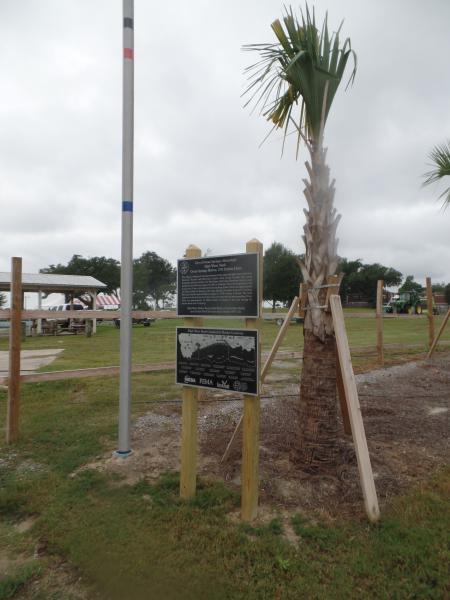
Ground breaking on November 7, 2014 and fill dirt- [L-R: Mayor Connie Marie Moran; Kristen Smith-U.S. Fish & Wildlife, Jennifer Wagner-DMR; Hank Zuber-State Representative; Jamie Miller-DMR; Danny Jalanivich-Harbor Master; Alderman Greg Denyer; Jackson County Supervisors John McKay and Troy Ross; Stacey McIlwain Randall; Janet McIlwain; and Alderman John Gill.(The Ocean Springs Gazette, November 13, 2014, p. 1-Ground breaking image courtesy of James Ricketts) Fill dirt image made November 14, 2014 and grass lawn image made December 2014 by Ray L. Bellande.
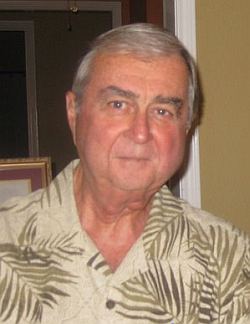
Thomas David McIlwain
from The Sun Herald, “Thomas McIlwain: McIlwain remembered as pioneer in marine biology”, November 2, 2012.
Thomas D. ‘Tom’ McIlwain (1940-2012), age 71 years of Ocean Springs, Mississippi died peacefully on October 31, 2012 at home with his wife and daughter by his side after a long battle with cancer. A lifelong resident of the coast, Tom was born in Pascagoula, Mississippi on November 15, 1940 and graduated from Capitol Page School in Washington D.C. in 1958.
After graduation, Tom served briefly in the U.S. Army, and then attended the University of Southern Mississippi and graduated with a B.S., an M.S and a PhD in Zoology. Tom had a career in marine fisheries and science that spanned almost 5 decades, and he was affiliated with the University of Southern Mississippi- Gulf Coast Research Laboratory (GCRL) for most of his career. From 1978-1989, Tom served as Assistant Director of Fisheries at GCRL. In 1983, he served for 9 months as special fisheries legislative assistant to Congressman Trent Lott, and from 1989-1994 he served as the Director of GCRL. In 1994, Tom retired from the GCRL and served the National Marine Fisheries Service (NMFS) Laboratory as a fisheries administrator.
After a second stint in Washington D.C as a legislative fellow, he returned to his position at NMFS-Pascagoula until his retirement from federal service in 2003.
McIlwain returned to GCRL in 2003 to coordinate the expansion of facilities for the Thad Cochran Marine Aquaculture Center at the Cedar Point site. He retired from GCRL in July 2012 after completing this project.
Spanning his career at GCRL and NMFS, McIlwain had a major impact in several areas of marine research, policy development and management. He was instrumental in establishing a striped bass fishery along the Mississippi Gulf Coast, the development of the MARFIN project to support marine fishery research nationally and the United States Marine Shrimp Farming Program; the major U.S. effort to develop a national program in shrimp aquaculture. He served from 2006-2012 as a voting member of the Gulf of Mexico Fishery Management Council representing the state of Mississippi and served as Chairman from 2007-2009.
Tom was an active member of First Presbyterian Church of Ocean Springs where he served as a deacon, elder, trustee, and clerk of the session. His favorite job however, was serving as the official greeter, welcoming people to the service every Sunday morning. He was also one of the founding members of the Mississippi Presbyterian Cursillo movement which was near and dear to his heart.
Tom loved the water, was a lifelong sailor, and found solace aboard his beloved vessel, the Stacey L. Tom was also a long-time member of the Ocean Springs Yacht Club where he served as Commodore from 1976-1977. He also served as chairman of the Jackson County Harbor Commission.
Dr. McIlwain was preceded in death by his parents, Julius and Kathleen McIlwain of Pascagoula. Tom is survived by his wife of almost 50 years, Janet Chapman McIlwain; his daughter, Stacey McIlwain Randall (Bradley); granddaughters, Allie and Lindsay; brother, Barry McIlwain (Jane); sister, Martha McIlwain Murray (James) and numerous nieces and nephews.
He was a wonderful husband, father, grandfather, friend and a mentor to many. Memorial services will be held on Wednesday, November 7, 2012 at 3:00 p.m. at First Presbyterian Church in Ocean Springs.
from The Sun Herald, “Thomas David McIlwain”, November 4, 2012
Thomas David McIlwain, longtime marine biologist, fishery scientist and educator, died Wednesday after a three-year battle with cancer. He was 71. His career of about 50 years was mostly spent at the Gulf Coast Research Laboratory in Ocean Springs. He was the lab director from 1989 to 1994 and retired in 2011. He also was a former fishery administrator with the National Marine Fisheries Service Laboratory in Pascagoula.
McIlwain was chairman of the Ocean Springs Harbor Commission, and remained active until a couple of months ago, said his daughter, Stacey Randall. "He was known as a great scientist, but to me, his greatest accomplishment was being a wonderful father," she said. "He loved God, was humble and honest and loved the gulf."
McIlwain, born in Pascagoula, grew up wanting to be a marine biologist. He earned his bachelor's, master's and doctorate degrees from the University of Southern Mississippi. He was considered a pioneer in marine and fisheries research at the GCRL, and was credited with helping it transition from an independent lab to a part of an academic program at USM. He also was known for his work in support of change to state and national marine policies and in developing aquaculture programs to raise striped bass for recreational purposes and in shrimp farming.
"His contributions to the GCRL and to fisheries generally in the Gulf of Mexico are quite substantial," said Jeffrey Lotz, chairman of USM's Department of Coastal Sciences. McIlwain chaired a national subcommittee on aquaculture while working with the NMFS from 1994 to 2003. His focus included research and education on shrimp virus, work experts said has affected shrimp production worldwide. Colleagues said the research he directed has helped shape policies and regulations at state and national levels. For all his education and scientific knowledge, he was a down-to-earth person, said Ocean Springs Harbor Master Bill Richman. "He was a friendly, very unassuming person," Richman said. "It gave people a warm feeling being around him. The community will miss his positive influence."
McIlwain and his wife, Janet, were married nearly 50 years. Their only child earned a marine biology degree before becoming a veterinarian. Stacey Randall said she will lovingly remember the father who encouraged her to work with dolphins and sea lions at the old Marine Life, and frequently took her sailing, to visits on Horn Island and on beach walks. "He would take the time to point out the flotsam and jetsam, the horseshoe crabs and mermaid's purses," she said. "He enjoyed his life on the Gulf and shared that love with me."
Visitation will be at First Presbyterian Church of Ocean Springs at 1 p.m. Wednesday, followed by funeral services at 3 p.m.
The Thomas D. McIlwain Harbor Green was designed by Bryan K. Parks, landscape architect with Linfield, Hunter and Junius Inc. The property was acquired by the Mississippi Department of Marine Resources [MDMR] with funding through the Coastal Impact Assistance Program. The improvements were funded by Tidelands grants to the City of Ocean Springs in partnership with MDMR. The large wood-blasted sign was designed and built by Millie McGinty Jarrell of Gulf Graphics and installed in early September 2017.(The Ocean Springs Gazette, October 1, 2015, p. 1 and eye witness of Ray L. Bellande.)
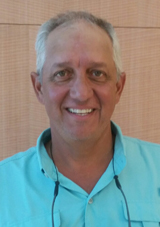

A.J. Derouen
2017-New Harbor Master
With the resignation of Danny Jalanavich in June 2017, the Board of Supervisors selected in August 2017, August J. Derouen as the new harbor master for Ocean Springs. Derouen will earn about $40,000 per year as a Grade 13 Jackson County employee.
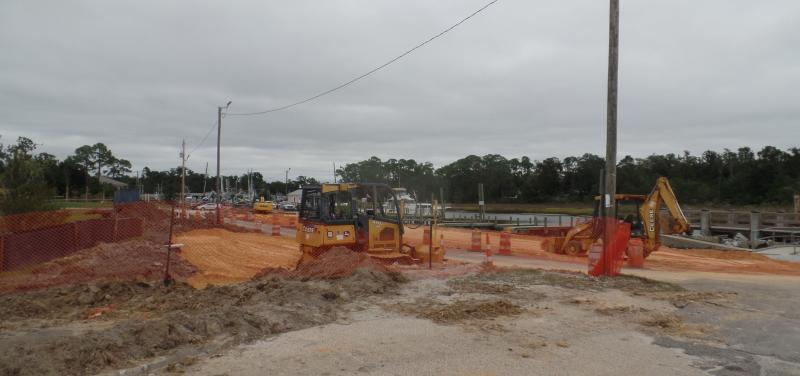
October 10, 2015
2015-Boat Launch and Road Improvement
In early October 2015, the Mississippi Department of Marine Resources [MDMR], City of Ocean Springs, Jackson County Board of Supervisors and The OS Harbor Commission commenced improvements to the OS Harbor boat launch and Harbor Drive.
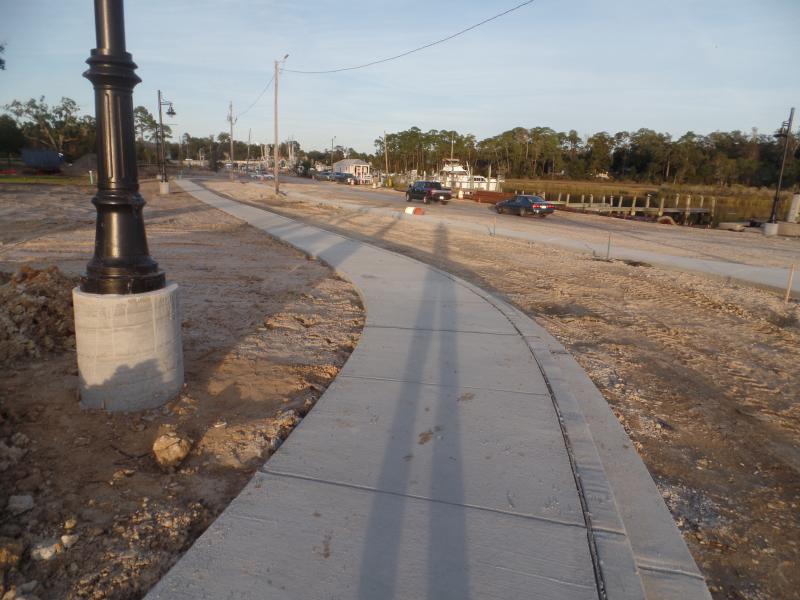
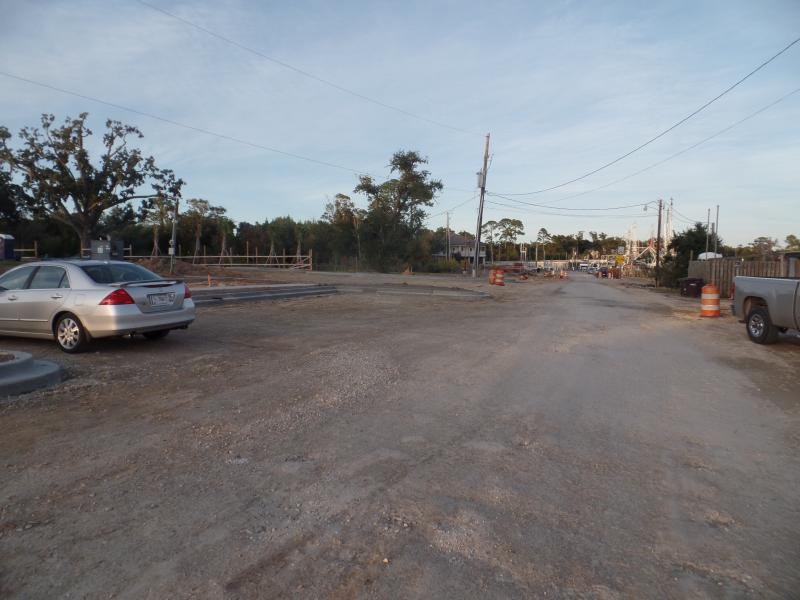
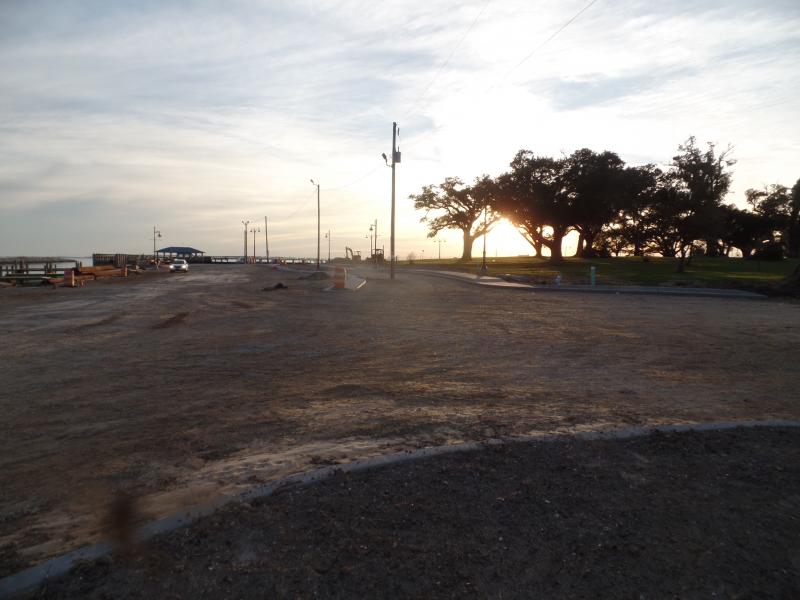
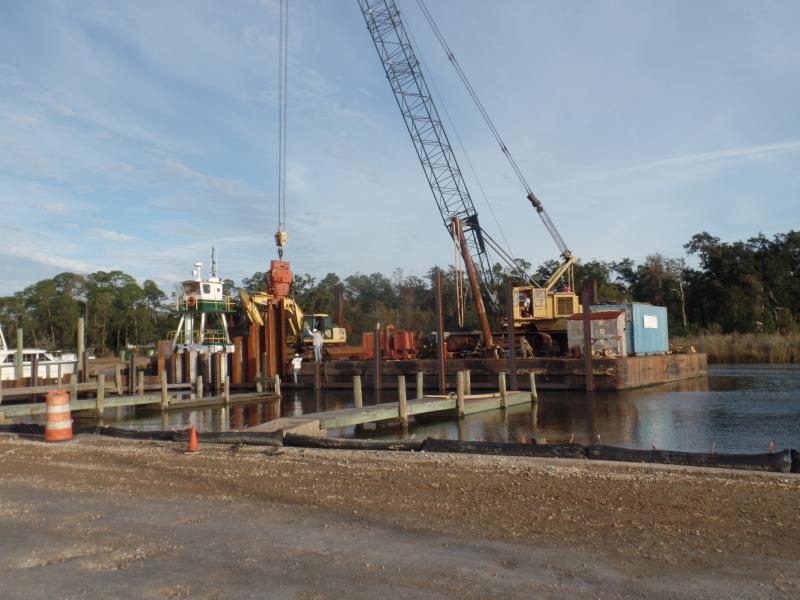
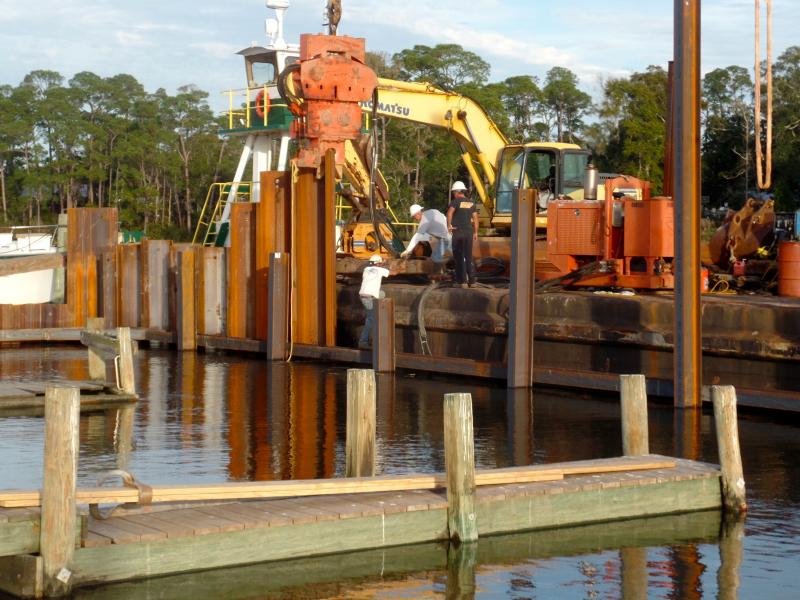
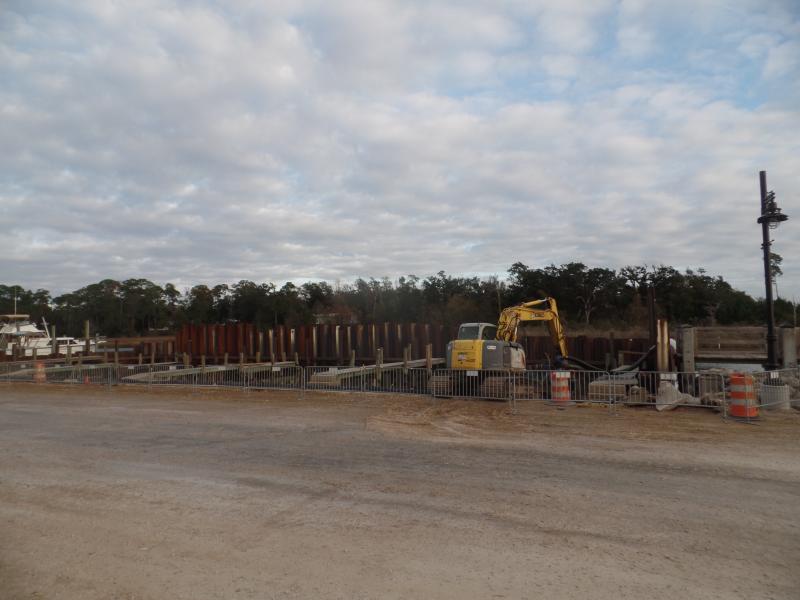
Images made late November and early December 2015
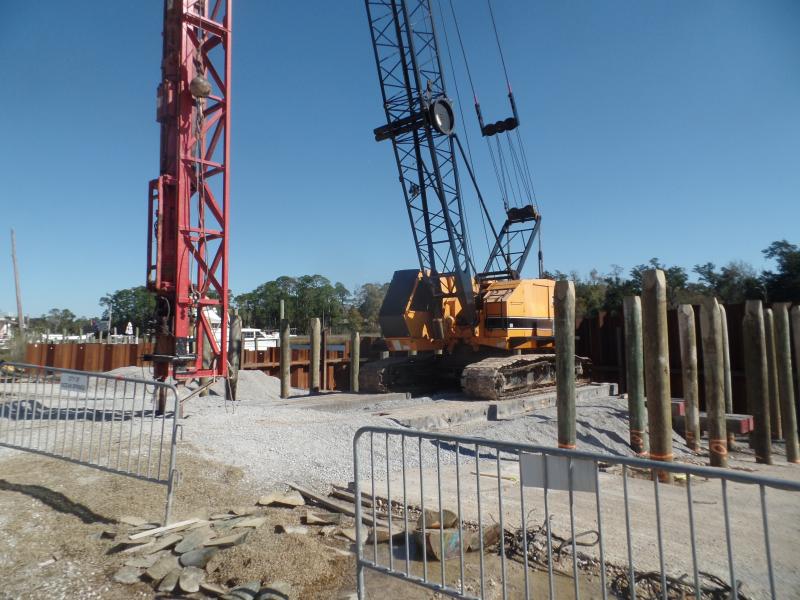
January 26, 2016
Hurricane Nate
Barely a Category 1 Hurricane, Nate visited the Mississippi Gulf Coast in the early morning of October 8, 2017. After crossing the Mississippi River delta, a second landfall was made near Biloxi, Mississippi resulting in a storm surge of between seven and nine feet. The lobbies of the Golden Nugget and casinos were flooded.
At Ocean Springs, the harbor suffered minor damage as several floating piers owned by beer and bait vendor Kenny Dinero floated off. Dinero was required to move his building, a former Katrina cottage to higher ground.
Nate made landfall near the mouth of the Mississippi River in Louisiana. After crossing the marshland of the Mississippi Delta, it made its second U.S. landfallnear Biloxi, Mississippi early on on October 8, causing a storm surge to flood the ground floor of coastal casinos and buildings, as well as causing rip currents, hurricane-force winds, and beach erosion.
Moving northwestward at 28 mph, Nate was the fastest-moving storm ever recorded in the Gulf of Mexico. It is also the fourth Atlantic hurricane of 2017 to have made landfall in the United States or one of its territories; such a quartet of landfalls has not occurred since 2005. In addition, Nate was the first tropical cyclone to move ashore in the state of Mississippi since Hurricane Katrina. As of October 10, the hurricane had killed at least 45 people: 16 deaths were counted in Nicaragua, 11 in Costa Rica, 5 in Guatemala, 7 in Panama, 3 in Honduras, 1 in El Salvador, and 2 in the United States.
REFERENCES:
Jackson Co., Ms. Board of Supervisors Minute Book 17, “Application directed to be filed to Federal government for financing a small craft harbor at Ocean Springs and Pascagoula”, September Term-1938, p. 279.
C.E. Schmidt, Ocean Springs French Beachhead, (Lewis Printing Services-Pascagoula, Mississippi-1984).
Chancery Court
Jackson County, Mississippi Chancery Court Cause No. 18,956, “The Estate of R.W. Schluter-.
Jackson County, Mississippi Chancery Court Cause No. 50, 767, “R.T. Furr v. Board of Supervisors-May 1987.
Journals
The Bay Press, “HOSA to sponsor additional costs of Shearwater Bridge”, April 2, 2002, p. 1.
The Daily Herald, “Know Your Coast”, ‘Snug Harbor’, May 9, 1957.
The Daily Herald, “Ocean Springs News-Harbor station sold”, March 25, 1958.
The Gazette, "New harbor on the horizon", September 24, 2009.
The Gazette, "New $1.2 million Harbor Office readies to turn dirt", January 6, 2010.
The Gazette, "Phase two bidding for Harbor house opens", January 13, 2010.
The Gazette, "Harbor Landing signs papers to operate as yacht club", January 20, 2010.
The Gulf Coast Times
The Gulf Coast Times, “Col. Bankston named head of Laboratory school”, June 3, 1949.
The Gulf Coast Times, "Know Your Neighbor", August 26, 1949.
The Gulf Coast Times, “Need for service dock inner harbor”, September 8, 1952, p. 1.
The Gulf Coast Times, “Ocean Springs adopts zoning ordinance”, January 3, 1952.
The Gulf Coast Times, “Town board asks $1500 harbor improvements”, January 17 3, 1952.
The Gulf Coast Times, “Alderman Catchot asks repeal zoning ordinance if amendment fails”, September 18, 1952.
The Gulf Coast Times, “Zone commission says no word on Inner Harbor amendment”, September 25, 1952.
The Gulf Coast Times, “Zone amendment at stalemate”, October 2, 1952.
The Gulf Coast Times, “Letters protest zone amendment on harbor”, October 9, 1952.
The Gulf Coast Times, “John Catchot resigns as harbormaster”, December 4, 1952.
The Gulf Coast Times, “Start work on docks and improvements at Ocean Springs inner harbor”, March 19, 1953, p. 1.
The Jackson County Times
The Jackson County Times, “Rebuild bridge on the ‘Mill Dam’”, January 18, 1936, p. 3.
The Jackson County Times, “Mill dam bridge near completion”, January 25, 1936, p. 1.
The Jackson County Times, “The Column”, February 1, 1936.
The Jackson County Times, “Yachts can now harbor at Ocean Springs”, September 27, 1937, p. 2.
The Jackson County Times, “A.P. Moran working on inner harbor project”, September 10, 1938. p. 1.
The Jackson County Times, “Work started this week on inner harbor and sand beach for Ocean Springs”, March 18, 1939, p. 1.
The Jackson County Times, “Inner harbor dock ready for use soon”, August 26, 1939, p. 2.
The Jackson County Times, "Contract is let for barracks for Key Field men", December 11, 1943.
The Jackson County Times, "70 French Sailors at Magnolia Park Await Ship Repairs", December 18, 1943.
The Jackson County Times, "Dredge 'Wahalak' doing fine job in Inner Harbor", January 15, 1944.
The Jackson County Times, "Charles Clark dies suddenly Thursday p.m.", April 7, 1945.
The Jackson County Times, "Crash Boat Base Has 'Open House' Last Saturday", December 8, 1945.
The Jackson County Times, “Small craft harbor to be improved”, December 1947, p. 1.
The Jackson County Times, "Schmidt Resigns from Sea Food Post; Blasts Supervisor A.P. Moran", March 19, 1948, p. 1.
The Jackson County Times, "Alderman Schmidt Blamed for Loss of Funds", June 1948, p. 1.
The Jackson County Times, "Westbrook, Hodges Are Reelected; Ald. Schmidt Loses to J.C. 'Champ' Gay", August 20, 1948, p. 1.
The Mississippi Press, “Shearwater bridge design offered”, January 16, 2002.
The Mississippi Press, “OS Press”, 'Harbor Landing almost ready", February 16, 2005.
The Mississippi Press, “New Shearwater Bridge Under Construction”, May 30, 2003.
The Ocean Springs Gazette
The Ocean Springs Gazette, "New $1.2 million Harbor Office readies to turn dirt", January 6, 2010.
The Ocean Springs Gazette, "The Inner Harbor", part I, December 19, 2013.
The Ocean Springs Gazette, "The Inner Harbor", part III, January 2, 2014.
The Ocean Springs Gazette, "PUDs, haror landscaping put on hold", January 9, 2014.
The Ocean Springs Gazette, "The Inner Harbor", part IV, January 9, 2014.
The Ocean Springs Gazette, "The Inner Harbor", part V, January 16, 2014.
The Ocean Springs Gazette, "The Inner Harbor", part XI, February 27, 2014.
The Ocean Springs Gazette, "The Inner Harbor", part XIX, May 22, 2014.
The Ocean Springs Gazette, "Work begins in harbor area, [boat] launch closed", October 1, 2015.
The Ocean Springs News, “Station Open”, February 7, 1957.
The Ocean Springs News, “Let Contract on Shearwater Dr. Bridge Work”, January 16, 1958.
The Ocean Springs News, “Board acts to amend ordinance to bar all trailers from limited and residential areas”, August 7, 1958.
The Ocean Springs News, “Circuit Court rules City wrong in Harbor Trailer Case; It stays”, November 27, 1958.
The Ocean Springs Record
The Ocean Springs Record, “?”, August 1, 1968.
The Ocean Springs Record, “Ocean Springs harbor commission seeks improvements”, June 26, 1969.
The Ocean Springs Record, “Piling set [construction photo]”, August 20, 1970.
The Ocean Springs Record, “Yacht Club burns”, September 10, 1970, p. 1.
The Ocean Springs Record, “Fire Marshal releases Yacht Club”, September 10, 1970, p. 1.
The Ocean Springs Record, “Yacht Club opens new facilities”, January 28, 1971, p. 14.
The Ocean Springs Record, “Whitlocke named Yacht Club Commodore”, February 18, 1971, p. 18.
The Ocean Springs Record, “Supervisors turn down Harbor land purchase”, October 7, 1974, p. 1.
The Ocean Springs Record, “Harbor suit filed”, December 12, 1974, p. 1.
The Ocean Springs Record, “Harbor suit settled out of court”, December 19, 1974, p. 1.
The Ocean Springs Record, “Inner Harbor Park [photo]”, June 16, 1983, p. 1.
The Ocean Springs Record, “Senator Cochran dedicates new Inner Harbor Park”, April 12, 1984, p. 1.
The Ocean Springs Record, “Harbor renovation underway”, May 30, 1985, p. 2.
The Ocean Springs Record, “Dispute over Ocean Springs harbor [Dr. Furr v. Board of Supervisors] land goes to court”, May 14, 1987.
The Ocean Springs Record, “Work stopped at Harbor”, April 20, 1989, p. 1.
The Ocean Springs Record, “Harvey named new harbormaster”, August 20, 1992, p. 3.
The Ocean Springs Record, “Land use dispute [Dr. Furr]”, February 3, 1994, p. 3.
The Ocean Springs Record, “Harbor playground replacement hoped for by summer”, March 10, 1994, p. 1.
The Ocean Springs Record, “Kensington Park gets equipment, facelift”, June 16, 1994, p. 1.
The Ocean Springs Record, “Tideland leases aid harbor”, October 26, 1995, p. 1.
The Ocean Springs Record, “New pump focus of harbor panel”, November 23, 1995, p. 1.
The Ocean Springs Record, "Dredging project on the go in O.S.", December 9, 1995.
The Ocean Springs Record, “Slips on hold dredging to begin”, February 1, 1996, p. 1.
The Ocean Springs Record, “Harbor panel onhold pending members”, February 29, 1996, p. 1.
The Ocean Springs Record, “Inner Harbor work to begin with parking area”, May 2, 1996, p. 1
The Ocean Springs Record, “Dewatering dilemma may delay dredging”, June 20, 1996, p. 1.
The Ocean Springs Record, “Harbor Board epands work list”, July 25, 1996.
The Ocean Springs Record, “Boats clear out of OS harbor for dredging”, August 11, 1996.
The Ocean Springs Record, “Kensington Basin dredging job delayed again”, October 31, 1996, p. 1.
The Ocean Springs Record, “Harbor panel seeks role”, March 6, 1997, p. 1.
The Ocean Springs Record, “Harbor funding not gone, officials say”, March 13, 1997, p. 1.
The Ocean Springs Record, “Harbor’s money safe, Board told”, April 3, 1997, p. 1.
The Ocean Springs Record, “Harbor panel seeks to end dredge delay”, April 17, 1997, p. 1.
The Ocean Springs Record, “Harbor boat ramps, piers in bad shape”, May 1, 1997, p. 1.
The Ocean Springs Record, “Harbor panel skeptical dredging will resume”, May 29, 1997, p. 1.
The Ocean Springs Record, “Dredging underway”, June 19, 1997, p. 1.
The Ocean Springs Record, “[Hurricane] Danny spurs preparations”, July 24, 1997, p. 1.
The Ocean Springs Record, “Officials discuss responsibility of Harbor upkeep”, September 4, 1997, p. 1.
The Ocean Springs Record, “Projects, tight rules lead meet on Harbor”, September 25, 1997, p. 1.
The Ocean Springs Record, “County to go ahead with harbor dredging, new pier”, November 27, 1997, p. 1.
The Ocean Springs Record, “Harbor future topic of meeting”, May 7, 1998, p. 1.
The Ocean Springs Record, “Harbor to stay under County”, May 14, 1998, p. 1.
The Ocean Springs Record, “Harbor commissioners consider slip rate hike suggestion”, June 25, 1998, p. 1.
The Ocean Springs Record, “Fee hike puts boaters, Harbor panel, County at odds”, August 27, 1998, p. 1.
The Ocean Springs Record, “Low tides delay Pine Street basin dredging”, January 21, 1999, p. 1.
The Ocean Springs Record, “Majority wins debate over bridge on Shearwater”, November 1, 2001.
The Ocean Springs Record, “Objections stall harbor bridge”, February 21, 2002.
The Ocean Springs Record, “County seeks Harbor Master”, February 21, 2002.
The Ocean Springs Record, “Harbor bridge and others”, March 7, 2002.
The Ocean Springs Record, “Harbor bridge held up”, January 23, 2003, P.A-1.
The Ocean Springs Record, “Bridge hurdles gone”, May 15, 2003, P.A-1.
The Ocean Springs Record, “Bridges may be open in 90 days”, June 26, 2003.
The Ocean Springs Record, “Shearwater Dedication”, April 22, 2004.
The Ocean Springs Record, “Harbormaster’s office [photo]”, January 20, 2005, p. B8.
The Ocean Springs Record, “ Harbor View [photo]”, February 24, 2005, p. 1.
The Ocean Springs Record, “Harbor balks at Charette”, May 25, 2006, p. A-1
The Ocean Springs Record, “Bellande: harbor house plan wrong for OS”, September 21, 2006, p. A10.
The Ocean Springs Record, “Write on”, March 6, 2007, p. A2.
The Ocean Springs Record, “Harbor Landing under scrutiny”, March 13, 2008, p. 1.
The Ocean Springs Record, “Harbor’s ‘wine only’ license will be appealed”, April 3, 2008, p. A1.
The Ocean Springs Record, “Harbor pier countdown”, June 12, 2008, p. A1.
The Ocean Springs Record, “Harkey rules on Board-Harbor Landing”, July 10, 2008, p. A1.
The Ocean Springs Record, “County will rebuild Harbor Master house”, October 23, 2008, p. A3.
The Ocean Springs Record, “County launches 'Christmas at the Harbor'”, December 11, 2008, p. B1.
The Ocean Springs Record, “It's beginning to look like Christmas”, December 18, 2008, p. A1.
The Ocean Springs Record, “Harbor project: bulkhead v. beautification”, September 24, 2009, p. 1.
The Ocean Springs Record, “Mayor Moran comments on Harbor Landing purchase by DMR”, December 16, 2010, p. 2.
The Ocean Springs Record, “HOSA dedicates Blossman Garden”, May 30, 2013, p. 1.
The Ocean Springs Record, "Christmas at the OS Harbor", December 19, 2013, p. 1.
The Sun Herald
The Sun Herald, “Jackson County, BMR settle Ocean Springs Harbor dispute”, October 15, 1989.
The Sun Herald, “Harbor work leaves boaters stuck in mud”, May 4, 1991, p. 3.
The Sun Herald, “Dredging project on the go in Ocean Springs’, December 9, 1995.
The Sun Herald, “Boats clear out of Ocean Springs harbor for dredging”, August 11, 1996.
The Sun Herald, “Shearwater Bridge plans get new flair”, January 16, 2002.
The Sun Herald, “Ocean Springs gets permit for Shearwater Bridge”, May 3, 2003.
The Sun Herald, “Ocean Springs plans harbormaster office”, September 18, 2006, p. A8.
The Sun Herald, “Harbor Landing loses bid to serve hot food”, April 11, 2007, p. A8.
The Sun Herald, “New marina and deli opens”, September 27, 2007, p. D8.
The Sun Herald, “Harbor Landing deli approved”, September 27, 2007, p. D8.
The Sun Herald, “Hearing on Ocean Springs harbor restaurant today”, February 29, 2008, p. A3.
The Sun Herald, “Harbor restaurant questioned”, March 1, 2009, p. A3.
The Sun Herald, “ABC holds hearing”, March 8, 2008, p. A2.
The Sun Herald, “O.S. harbor's first boat parade", December 7, 2008, p. A4.
The Sun Herald, “Harbor pier reappears", January 18, 2009, p. A3.
The Sun Herald, "Bar to convert to Yacht Club", January 20, 2010.
The Sun Herald, "Harbor master subject of probe", September 7, 2010.
The Sun Herald, "Makeovers planned to add features to two parks", August 14, 2011.
The Sun Herald, “Thomas McIlwain: McIlwain remembered as pioneer in marine biology”, November 2, 2012.
The Sun Herald, “Thomas David McIlwain”, November 4, 2012
The Sun Herald, "Former alderman, commissioner is Ocean Springs harbor master", August 15, 2014, p. A-5.
The Sun Herald, "Boat owner voices concern about harbor master", September 11, 2014, p. A-2.
Old Fort Bayou: Ferries & Bridges (1875 - 2002)
Old Fort Bayou: Ferries & Bridges (1875 - 2002) ray Wed, 04/21/2010 - 00:17- 2352 views
Old Fort Bayou
Old Fort Bayou is a perennial stream located in western Jackson County,Mississippi, between the watersheds of the Tchoutacabouffa River on the west and Bluff Creek to the east. The source of Old Fort Bayou is situated in Section 15, T6S-R8W north of Seaman Road and northwest of the Fort Bayou Baptist Church. The stream flows southeast and south before turning southwest as it passes beneath I-10. On its way to brackish tidewater in the Back Bay of Biloxi, Old Fort Bayou gently flows a distance of about 12-15 miles. Its drainage area is estimated to be about 25,000 acres with Bayou Talla being its largest tributary. Old Fort Bayou has a maximum width of 1000 feet north of Ocean Springs, but generally ranges between 250 and 350 feet from its mouth at Back Bay for a distance upstream of about 2-3 miles. At the ferry landing and bridge sites on the south shore, the bayou has a width of about three hundred feet and is not fordable.
FERRIES
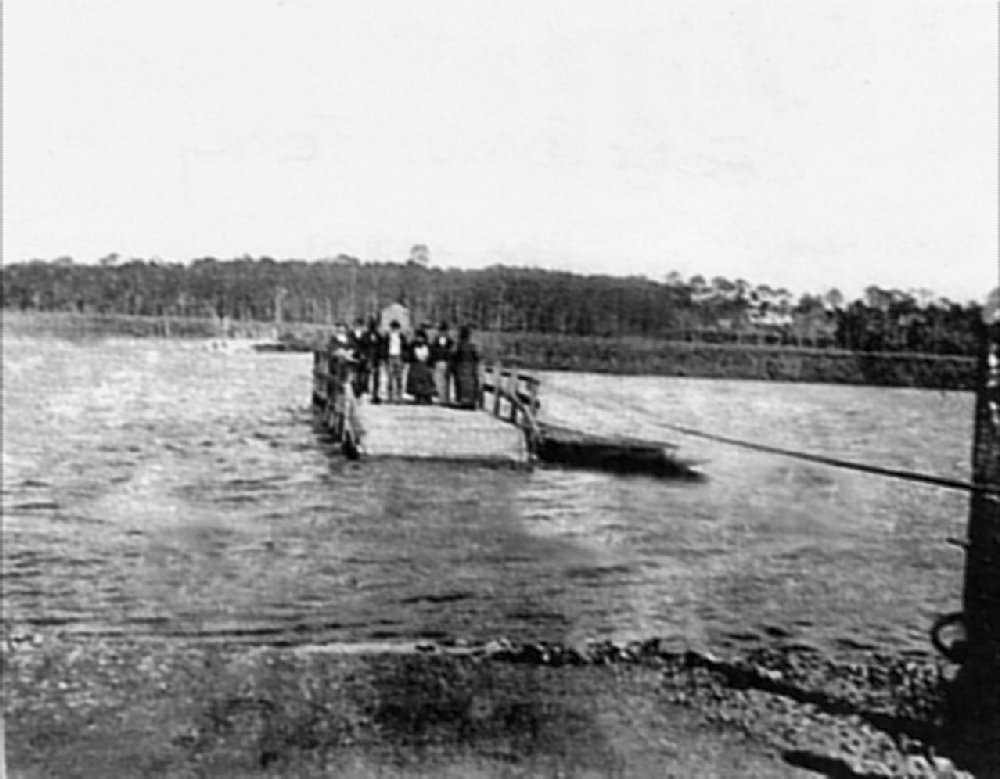
Fort Bayou Ferry (pre-1901)
It is known with a high degree of certitude that there was a ferry across Old Fort Bayou as early as March 1875, since Ferdinand W. Illing (1838-1884) was known to have been in charge of maintaining the road at Ocean Springs “from the ferry on Old Fort Bayou to the beach down Washington Street”.(JXCO, Ms. Board of Supervisor’s Minute Bk. 1, p. 3)
Antonio M. Franco
The earliest recorded ferry operation across Old Fort Bayou was run by Captain Antonio M. Franco (1834-1891). It was a flat boat large enough for drayage animals and their burden and operated by a hand pulled rope.(The Daily Picayune, July 24, 1892, p. 12)
Antonio M. Franco was born on April 11, 1834 at Lisbon, Portugal. He went to sea at the age of eleven and ended his maritime commercial ventures after the Civil War. Franco then began several land based enterprises.(The Biloxi Herald, April 4, 1891, p. 1)
It was during his schooner based trading years, probably out of New Orleans that he met Genevieve Rodriguez (1844-1915), called Jane, at Bayou Puerto. She was the daughter of Juan Antonio Rodriguez (1812-1867) and Marie-Marthe Ryan (1822-1885+).
The Francos were married circa 1858, and resided at Bayou Puerto on the Rodriguez tract, Governmental Lot 5, Section 13, T7S-R9W, until January 1871, when they began acquiring land from George Allen Cox (1811-1887) in Ocean Springs, on Old Fort Bayou west of Washington Avenue. Here and on Bayou Puerto, the Francos reared a large family consisting of eight children: John J. Franco (1859-1935), Lillie F. Geiger (1863-1905), Charlotte F. Cochran (1864-1939), Joanna F. Ruppel (1865-1903), Thomas Franco (1869-1951+), Francis A. Franco (1871-1935), Anthony Franco (1878-1939+) and Walter E. Franco (1883-1939+).
By January 1874, Antonio and Jane Franco had spent $850 for approximately 2.52 acres on Washington Avenue and Old Fort Bayou. Here they erected their home, which is extant as a part of the Aunt Jenny’s Catfish Restaurant complex on Washington Avenue. The re-recorded warranty deed from Cox to Franco is important as it includes the location of the Daniel Goss store and the Moeling House, both which existed here in the 1850s.(JXCO, Ms. Land Deed Bk. 11, p. 28)
Daniel Goss
Daniel Goss (1815-1855+), a Dane, and his German born spouse, Katharina B. Goos (1829-1851+) had come to Ocean Springs with their children, Daniel Goos (b. 1847), Barbara Goos (b. 1848), and Ellen Goos (b. 1849), after a short residency at Biloxi. On February 27, 1850, they had acquired in Biloxi, from Louise Alexandrine Leocade Hatrel Fourchy and Alexandre Fourchy of New Orleans for $2500, the property at present day 138 Magnolia Street. The Creole Cottage now situated here is known as Mary Mahoney’s Old French House.(HARCO, Ms. Land Deed Bk. 5, p. 256)
In January 1851, the Goos family sold their Biloxi residence to Samuel Friedlander of New Orleans and moved to Ocean Springs. The selling price at this time was $5000. It would appear the Biloxi home was built by Goos and sold to Friedlander. Basis for this postulation is the doubling of the property value and that Kendall brick was used in its construction. The Kendall Brickyard existed from 1849-1854 at Back Bay (now D’Iberville).(HARCO, Ms. Land Deed Bk. 5, pp. 480-481)
At Ocean Springs on Washington Avenue, Daniel Goos invested his money in the mercantile business as he advertised in The Ocean Springs Gazette of March 24, 1855, as follows:
D. Goos, Dry Goods and Produce Merchant
Keep constantly on hand a large and well selected assortment of dry goods, groceries, tin ware, crockery, hardware, cutlery, medicines, boots, shoes, clothing, (several items illegible), carpenter's tools, school and blank books, saddles, bridles, trunks, etc. The above assortment will be sold at New Orleans prices. (March 3, 1855,p. 4)
Daniel Goos also owned land and probably resided in the present day Alto Park area of Ocean Springs, which is now bounded by General Pershing, Kensington, and Ward. General Pershing Avenue was called Goos Avenue until its German sounding name came into disfavor during the years of World War I (1914-1918). It was only logical to replace this Teutonic nomenclature with that of the American general from Missouri who led our American Expeditionary Force in Europe during the Great War, General John Joseph Pershing (1860-1948).
Frederick G. Moeling
The other landmark on the Franco tract on Old Fort Bayou was the domicile of Frederick G. Moeling who was postmaster at Ocean Springs from December 1854 until December 1856. It is assumed that the post office, the first bearing the name “Ocean Springs”, was situated in his Washington Avenue cottage.
Whiskey and water
Antonio Franco’s land base commerce consisted of a barroom and ferry landing on Old Fort Bayou. He and F.W. Illing (1838-1884), who was the proprietor of the Illing House, a large hostel on Washington and Porter, had applied to the Board of Police for a license to retail vinous and spirituous liquors in Ocean Springs, as early as April 1875. In August 1882, it was determined by the Board of Supervisors that Mr. Franco pay an annual privilege tax of $5.00 as his total income from ferriage did not exceed $200 each year.(JXCO, Ms. Board of Supervisors Minute JXCO, Ms. Board of Supervisors Minute Bk. 1, p. 6 and p. 334)
By March 1887, the Franco saloon had moved from its site on Old Fort Bayou, to what is now the southwest corner of Washington Avenue and Robinson. Franco’s son-in-law, Thomas A. Cochran (1852-1883), a local house carpenter and Mobile native, had acquired a 1.25 acre lot here in July 1878, from E.W. Clark of Philadelphia, Pennsylvania for $140.(JXCO, Ms. Board of Supervisors Minute Bk. 2, p. 188 and JXCO, Ms. Land Deed Bk. 5, pp. 622-623)
It is postulated that with the construction of the White House, a grocery store cum bar, and the VanCleave Hotel, both on Robinson opposite the L&N Depot in the late 1870s and 1880 respectively, that the thirsty tourists and drummers (salesman) were being entertained near the depot. To stay competitive, Antonio Franco had to relocate his bar business near the L&N operations. On Old Fort Bayou, he was literally, “on the wrong side of the tracks”.
Circa 1880, Thomas A. Cochran erected a Greek Revival cottage at present day 900 Robinson Avenue, often referred to as the Cochran-Cassanova House. A two-story, frame structure was also erected on the Cochran tract. It was situated on the southwest corner of Washington and Robinson and was known as Franco’s Saloon. In a forced heirship case, heard by the JXCO, Ms. Chancery Court, in February 1896, a portion of the Cochran tract was described as “being the same lot or parcel of land, which stands the two-story frame building formerly occupied by A. Franco, now deceased, as a barroom or saloon”.(JXCO, Ms. Chancery Court Cause No. 675, “Mrs. Charlotte F. Cochran v. Thomas A. Cochran et al”)
After Antonio Franco’s demise, his son, Thomas Franco operated the saloon.(JXCO, Ms. Board of Supervisor Minute Bk. 2, p. 493)
In March 1897, Commissioner Frank H. Lewis sold the Cochran saloon lot (120 by 80 feet) to George E. Arndt (1857-1945) for $1250. This became Mr. Arndt’s renown Paragon Saloon. Arndt had previously operated a barroom in the White House with his brother-in-law, Emile Engbarth (1855-ca 1905), as early as March 1883. At the time of Arndt’s proprietorship, the White House was owned by Antonio Marie (1829-1885), Antonio Franco’s brother-in-law.(JXCO, Ms. Land Deed Bk. 18, pp. 140-141 and JXCO, Ms. Board of Supervisors Minute Bk. 1, p. 358)
Pontoon Bridge talk
As early as the winter of 1891, a bridge across Old Fort Bayou was being seriously considered. The Jackson County Board of Supervisors in late January 1891, let an $800 contract for the construction of a causeway and other necessary work prior to the erection of a pontoon bridge across the bayou. By mid-February 1891, The Biloxi Herald related that, “work will be commenced on the new bridge across Fort Bayou within the next few months….it will be of a very substantial character”.(The Biloxi Herald, February 7 and February 15, 1891, p. 1)
By mid-April 1891, bridge building materials were in place for the long anticipated span across Fort Bayou. The operation to elevate and widen the north end of Washington Avenue through the marsh beyond the ferry landing was advancing at a acceptable pace.(The Pascagoula Democrat-Star, April 17, 1891, p. 2)
Captain Franco passes
In mid-February 1891, The Biloxi Herald reported that Captain Antonio M. Franco had been very ill for three weeks, but was showing signs of making a recovery. Unfortunately, he expired on March 14, 1891 and his corporal remains were interred in the Evergreen Cemetery on Old Fort Bayou.(The Biloxi Herald, February 15, 1891, p. 1)
Mrs. Franco’s ferry
After her husbands demise, Jane R. Franco continued in the business of transporting people, animals, and freight across Old Fort Bayou at Ocean Springs. The anticipated pontoon bridge was never built.
Parker Earle & Sons-ferry-farming and timber
In the fall of 1891, Parker Earle (1831-1917), and his sons, Franklin S. Earle (1856-1929) and Charles T. Earle (1861-1901), commenced their own ferryboat service across Old Fort Bayou to improve their business operations north of Ocean Springs. Washington Avenue was shelled to the Earle ferry landing at the head of this main artery on Old Fort Bayou.(The Biloxi Herald, November 14, 1891, p. 8)
Parker Earle, a native of Vermont, was a renowned horticulturist who discovered Ocean Springs while serving as the Chief of the Horticultural Division of the Cotton Centennial and World's Exposition at New Orleans in 1884-1885.
At Dwight, Illinois in 1855, Mr. Earle met and married Melanie Tracy (1837-1889), a native of Rochester, Ohio. Mrs. Earle was an accomplished journalist having worked at various times for the Chicago InterOcean, the Rural New Yorker, and other northern newspapers. The Earles were residing at Cobden, Union County, Illinois raising apples, peaches, and strawberries, when they relocated here and settled on the Fort Point Peninsula, now popularly called Lovers Lane.
The Earles’ daughter, Mary Tracey Earle Horne (1864-1955), like her brilliant mother, became a fine writer. Miss Earle’s literary works were published in Scribner’s, Leslie’s, and other magazines of the day. Books by Mary Tracy Earle prior to her marriage in 1906 to William Titus Horne, whom she moved to California with in 1909, were: The Wonderful Wheel(1896); The Man Who Worked For Collister (1898); Through Old Rose Glasses (1900); and Flag on the Hilltop (1902). The Jackson County Times, December 9, 1917 and Earle, 1902, pp. viii-xiv)
Hellmuth-Grinstead
After Melanie Tracey Earle died at Ocean Springs of heart disease in 1889, Parker Earle married a young, Ohio born, widow, Agnes Louise Cooke Hellmuth (1862-1919) at Benton Harbor, Michigan in 1890. She had been married to a Canadian, Gustavos Stewart Hellmuth. The Hellmuths had two children born in Canada, Agnes Marjorie Hellmuth (1882-1933) and Gustavos Theodore Helmuth (1884-1975). Marjorie Hellmuth would marry William Wade Grinstead (1864-1948), a Chicago attorney, of Kentucky birth. In 1905, the Grinsteads purchased Lewis Sha, a West Indian styled plantation home built by A.E. Lewis in 1854 on the Mississippi Sound at Gautier. They renamed it Oldfields. At Oldfields, two of the Grinstead daughters, Patricia Grinstead (1906-1973) and Agnes Grinstead (1909-1991) met and would marry two of the Anderson boys from Ocean Springs, Peter Anderson (1901-1984) and Walter "Bob" I. Anderson (1903-1965). These talented young artists with their brother, James McConnell “Mac” Anderson (1907-1998), would build the Shearwater Pottery (1928) into an internationally recognized art complex.(History of JXCO, Ms., 1989, pp. 234-235)
Earle-Rose-Money Farm
Quite the entrepreneurs, the Earle family commenced an enterprise in Jackson County, Mississippi called The Winter Park Land Improvement and Live Stock Company. Through this vehicle, Parker Earle bought large tracts of undeveloped land in Jackson County. At the zenith of its land holdings, this company owned over 15,000 acres primarily in the southwest area of the county. Earle's interest in horticulture lead to the development of a commercial farm, the Earle Farm, about two and one half miles north of Ocean Springs. Here they cultivated and packed vast quantities of Concord, Delaware, White Niagara, Herbemont, and Ives Seedling grapes, LeConte pears, peaches, and tomatoes for shipment. Pre-1897, the Earle family had financial difficulties and had lost most of their Jackson County holdings. In 1897, Joseph Benson Rose (1841-1902), a New York entrepreneur, acquired the Earle Farm. The Rose Farm was sold in 1909 to H.D. Money (1869-1936), the son of Senator Hernando Desoto Money (1839-1912). The elder Money was a lawyer, planter, soldier, Congressman, and U.S. Senator. He was born at Holmes County, Mississippi on August 26, 1839.
Reporter Catherine Cole of The New Orleans Daily Picayune reported the following romantic description of the Old Fort Bayou ferry and Earle farm on July 24, 1892:
From Ocean Springs to Biloxi there is a most charming woodland drive of six miles. You must cross the Bayou Fort in that wide-prowed, prosaic ferry that will persist in looking picturesque as it floats over the steel-gray unrumpled waters, holding their everlasting portrait of pine and rushes. And then the horse ambled up the yellow hill under an arcade of loblollies, giving out their violet-like scent as the west wind bruises the long green needles, and you come in time to the Parker Earle vineyard, where grape gatherers are stepping by, holding on their shoulders huge round baskets filled with purple bloomy clusters, where, under a long shed at long benches, half a hundred young girls, scissors in hand, are a work placing the bunches into baskets for shipment to that fabulous Chicago of those riches and World's Fair, perhaps, they dream as they work.
In addition to their commercial farm, the Earles in partnership with V.R. Holladay owned a sawmill, the Winter Park Lumber Company, which was located a mile to the north of their agricultural operation in the N/2 of the SE/4 of Section 6, T7S-R8W. It was operating in a virgin forest, which had escaped the charcoal burners. Just after the mill was set up and begin sawing timber, V.R. Holladay withdrew from the company dissolving the mutual partnership.(The Biloxi Herald, July 11, 1891, p. 4 and The Pascagoula Democrat-Star, July 24, 1891, p. 2)
The Ocean Springs Lumber Company
When their logging and sawing operations were completed north of the Earle farm, the Winter Park Lumber Company moved to a site about one mile from Ocean Springs, on Old Fort Bayou. In late October 1891, Mr. Earle and M.L. Ansley of Bay St. Louis had purchased from F.M. Weed (1850-1926), the “Yankee Mayor” of Ocean Springs, for $1500, a mill site of about thirty-three acres on the south side of Fort Bayou, in the E/2 of the E/2 of Section 19, T7S-R8W.(JXCO, Ms. Land Deed Bk. 13, pp. 75-76)
Here, in November 1891, the vicinity of the present day Millsite Subdivision off Vermont Avenue, Winter Park set up their mill, planer, and other appurtenances. The name of the new Earle saw milling endeavor with M.L. Ansley on the northeast side of Ocean Springs, was called the Ocean Springs Lumber Company. It was incorporated at Ocean Springs in November 1891, with a capital stock of $15,000.(The Pascagoula Democrat-Star, November 13, 1891, p. 2)
Sale
The sale of the Ocean Springs Lumber Company to a group from Chicago and Wisconsin headed by Edward Browne, Robert L. Chapin, and W.R. Sutherland is interesting in that the deed gives a description of the property, which became the Mill Site Subdivision. At the sale on May 8, 1893 the following was sold by the Ocean Springs Lumber Company, Parker Earle, president:
Complete saw and planning mill and dry kiln plant together with pole and logging road, engines, cars, and all machinery and appliances used in or about or in any way appertaining to said saw and planning mill, dry kiln, and pole road together with all lands now owned by said corporation at and for the sum of $24,000. (JXCO, Ms. Land Deed Bk. Book 14, pp. 577-578).
Public Ferry-June 1893
In June 1893, the JXCO, Ms. Board of Supervisors declared “that the ferry on Old Fort Bayou Road, No. 61, in Beat No. 4, known and called “Franco Ferry” be and same is declared a public ferry and that Mrs. A. Franco be granted a license to keep and maintain said ferry for a term of one year.” Contemporaneously, Franklin S. Earle representing the Winter Park Land and Live Stock Improvement Company submitted an application requesting that the Board reconsider their licensing of Mrs. Franco as the public ferryman on Old Fort Bayou at Ocean Springs. His request was “denied and refused” by the county officials.(JXCO, Ms. Board of Supervisors Minute Bk. 2, p. 548)
Rates on Mrs. Franco’s ferry were established by the Board of Supervisors in September 1893, as follows:
One man on foot-$.05
One man and horse-$.10
One man with horse and buggy, or cart, or wagon-$.15
One man with two horses or 2 oxen with buggy, cart, or wagon-$.20
One man and additional $.10 for each yoke of oxen r span of horses.
Each horse or cow beast driven on foot-$.02
Each sheep, goat, or hog-$.01
(JXCO, Ms. Board of Supervisors Minute Bk. 3, p. 4)
Winter Park Land Improvement and Live Stock Company
In March 1894, the Winter Park Land Improvement and Live Stock Company, an enterprise owned by Parker Earle and sons, Franklin S. Earle and Charles T. Earle, petitioned the Jackson County Board of Supervisors as follows:
We the undersigned Winter Park Land Improvement and Live Stock co. hereby petition your honorable board to be appointed to keep the Public Ferry over Fort Bayou at Ocean Springs after the expiration of the present term. We ask this for the following reasons:
1st-We were running a private ferry at this point at the time that this was established as a public ferry and we still own the boat now used as a public ferry boat.
2nd-Our business constitutes over half the patronage of the ferry and it is very inconvenient for us to have the ferry controlled by other parties.
3rd-We control the land adjoining the ferry landing on the north shore.
4th-We hereby agree to establish the following schedule of rates which is lower than the legal rates now enforced.
Rates for the round trip
Buggie or wagon drawn by not more than two animals carrying not over four people-20 cents.
Each additional animal attached to wagon-5 cents extra.
Each person more than four in a wagon-5 cents extra.
One person in a cart or on horseback 15 cents.
Footman-each 5 cents.
Stock cattle-each 2 ½ cents.
We the undersigned patrons of the Ocean Springs Ferry hereby endorse the above petition of the Winter Park Land Dev. & L.S. Co.: J.R. Chrisman, J.B. Colman, Manuel Raymond, Wesley Osman, W.G. Bullock, Henry Canaan, Henry Delony, Bob Cruthirds, N.T. McDonald, John Cruthirds, S.B. Seymour, G.W. Cruthirds, Henry Cruthirds, Edna Ryan, Arthur Buckner, Elick Buckner, T.M. Chrisman, J.P. Eldridge, A.A. Havens, A. Garlot, A.R. Breeland, W.J. Parker, C. Holland, James ward, Ed Jamison, Jule Ryan, J.J. Flurry, W.P. Ramsay, Jim Cates, Edie Cates, Polien Garlotte, Esau Goff, Brase McMilland, C.H. Orrell, W.E. Woodman, D.W. Rouse, T.C. Ruble, W.M. Martin, M.C. Bang, Daniel Webb, Thos. E. Ramsay, S.M. Ware, H.L. Havens, John Nobles, James Phelps, R.A. McMillen, C.T. Williams, J.M. Breeland, E.D. Havens, Bon Davis, Jesse McInnis, Thomas Smith, William Deveraux, D.P. Russell, John W. Devrow, N.B. Martin, John Noble, Nathan N. King, Tomas Armstrong, W.H. Noble, Frank Byrd, W.W. Willis, Enoch Barlow, Elmer Post, Arthur Darnley, John Martin, John Hays, Levy? Quave, Rev. George W. Huff, Henry Galloway, M. Masters, William Landrum, C.J. Graham, E.M. Taylor, J.R. Tucker, G.W. Williams, H.B. Taylor, Gus Farley, J. Gill, William R. Havens, John McMillan, R.W. Spradley, G.W. Ruble, G.W. Taylor, J.W. Dupreast, R.C. Lyons, D.D. Holden, G.W. Tootle, Joe Davis, William Quave, Jon. Rogers, Albert Gill, Benjamin Garlott, George Ross Sr., Benjamin Williams, S.P. Devrow, G.W. Noble, J.G. Webb, James Lee, W.J. Forehand, George Forehand, Daniel Webb, Armor Garlotte, Horse? Martin, Jim Martin, Fred Webb, John Ellis, Lemard Garlotte, Frank Martin, Frank Cherry, ? Mallet, J. Roberts, J. Parker, and W.C. West.(JXCO, Ms. Chancery Court Archives loose papers, courtesy of Betty Clark Rogers)
1894 petition
In July 1894, a letter was submitted to the Board of Supervisors in the form of a petition to reduce the ferriage rates across Old Fort Bayou. It was signed by: J.B. Colman (sic), William Debro (sic), John Marten, P. Marten, A.L. Scarborugh (sic), Sancier Seymoure (sic), Robert Cruthirds, Joseph Scarborough, Sheary Seaymoure (sic), Alfred Seymoure (sic), Jule Ryan, Las Seymoure (sic), O.C. Edwards, Charles Simmons, and James Noble. The petition read as follows:
We patrons of the Ocean Springs Ferry living north of Fort Bayou property holders and citizens of Jackson Co. Miss. do hereby patitions (sic) Honorable Board of Supervisors to reduce the rate of ferriage on said ferry across Fort Bayou at Ocean Springs and in doing so We submit the following schedule attached this being our nearest P.O. place of business and market. We feel it unjust to have the preasant (sic) high rate of ferriage.
For round trip. No entry charge be allowed on parties going for Doctors or medicine for the sick before 6 o’clock a.m. or after 6 p.m.
Wagon drawn by 2 horses or oxen or buggy drawn by two animals (round trip) 25 cents; one horse and buggy (round trip) 20 cents; one horse and cart 15 cents; man on horseback 10 cents; footman 5 cents; stock cattle (one way) 3 cents. Sheep and hogs (one way) 2 ½ cents.(JXCO, Ms. Chancery Court Archives loose papers, courtesy of Betty Clark Rogers)
Regardless of the Earle family attempts to gain control of the Old Fort Bayou ferry from Jane R. Franco, they were unsuccessful.
The Franco property on Old Fort Bayou was sold to Emma Rudd Powell (1860-1932), the wife of Canadian physician, Dr. Henry Bradford Powell (1867-1949), in two transactions. In January 1896, the heirs of Antonio Franco sold their 2.52 acres for $1000 and in February 1906, Jane Franco vended her .96 acres with over 400 feet on Washington Avenue and the Spring lot for $1800.(JXCO, Ms Land Deed Bk. 31, pp. 298-299)
Here Dr. Powell established a sanitarium, which by 1915, had become the Bayou Inn, a lodge, which catered to Midwestern winter tourists. We know this place today as Aunt Jenny’s Catfish Restaurant, which was established by Carl Lizana in October 1981. (Bellande, 1994, pp.114-115)
Mrs. Genevieve Franco passed at Mobile, Alabama on February 9, 1915. She had relocated to Mobile in 1908, as her three sons, Thomas, Anthony, and Walter Franco, were residents there. Her granddaughter, Mildred Franco Petrie Theriot Powell (1896-1969), later married Dr. Henry B. Powell (1867-1949), after Mrs. Emma R. Powell’s death in 1932.(The Ocean Springs News, February 18, 1915, p. 6)
1901 Bridge
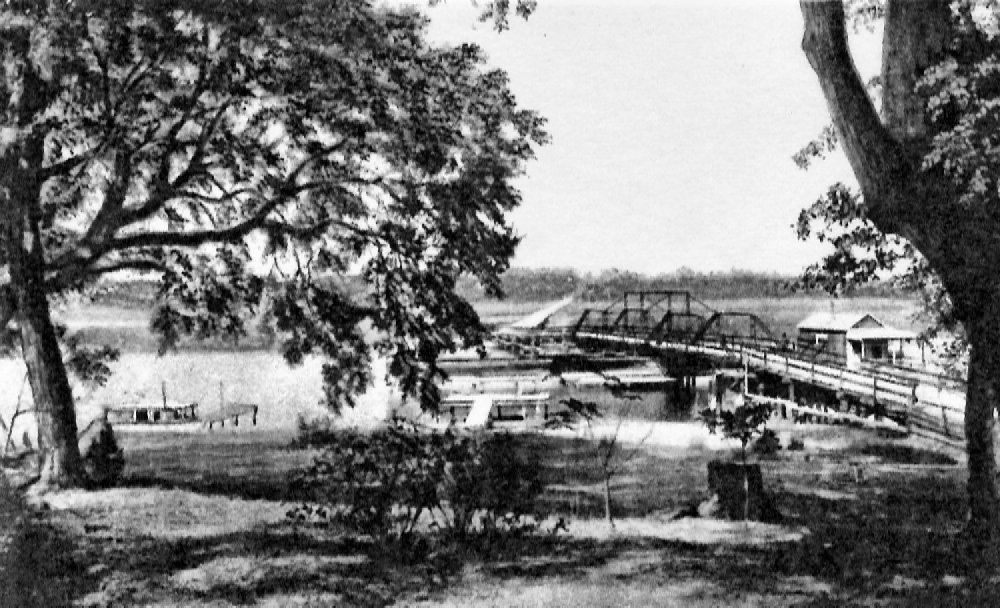
1901 Fort Bayou Bridge
At the turn of the 20th Century, a span across Old Fort Bayou and a passable road through present day St. Martin to present day D’Iberville, would have dramatically improve commerce and communications between Biloxi and Ocean Springs. Since a wooden bridge had been completed across the Back Bay of Biloxi from Lazarus/Seymour (now D’Iberville) to the Biloxi peninsula in early August 1901, by the Missouri Valley Bridge and Iron Company to replace the Back Bay public ferry system which had been operative intermittently since 1843, only the spanning of Old Fort Bayou and the replacement of the wagon trail from Ocean Springs to Lazarus/Seymour was necessary to improve economic conditions in the region.(The Biloxi Herald, August 3, 1901, p. 1)
It was anticipated that a shell road would be constructed to Lazarus/Seymour from the north shore of Old Fort Bayou, after a span crossing it was finished. It appears that this feat wasn’t accomplished until after December 1912, when H.E. Latimer (1855-1941) & Sons were contracted to build a road from Bayou Puerto to the Harrison County line for $3000.(The Biloxi Daily Herald, October 23, 1901 and JXCO, Ms. Board of Supervisors Minute Bk. 6, p. 279)
The local journal made the following pejorative comments about this road in 1917:
If Biloxi wants to encourage automobile travel between Ocean Springs and that city the people over there should get behind their Supervisor and see that the road from the county line to the bridge is put in decent shape. This piece of road is in fearful condition and a disgrace to Harrison County. Ocean Springs and the country surrounding have built a series of splendid roads hereabouts, one leading over to the Harrison County line where it continues on to the city of Biloxi. From the county line to the bridge there are more bumps to the square yard than there is on an old fashioned a corduroy road. Autoist certainly get their bumps when they hit this stretch of road.(The Jackson County Times, February 24, 1917, p. 5))
Contract
On March 4, 1901 the Jackson County Board of Supervisors let a contract for a steel bridge, the first span to cross Old Fort Bayou at Washington Avenue in Ocean Springs. The George E. King Bridge Company of Des Moines, Iowa was the successful bidder submitting a bid of $8990. For the contract to have been valid, the War Department had to grant a permit for the structure. In January 1902, after the project was completed, the Board of Supervisors paid their contractor an additional $479 for extra labor and materials, which brought the total cost of the bridge to $9460. John Duncan Minor (1863-1920), a local builder, was paid $94.68 for inspecting the building of the span. (JXCO, Ms. Board of Supervisors Min. Bk. 4, p. 45 and p. 108)
The initial Old Fort Bayou Bridge opened for traffic on December 11, 1901.(The Pascagoula Democrat-Star, December 13, 1901)
1901 bridge toll
Crossing Old Fort Bayou on the new steel span was not free. In January 1902, the Board of Supervisors set the following fees for use of the bridge:
Footman (round trip)-2 cents
Footman (one way)-1 cent
Horse and rider (round trip)-10 cents
Horse and rider (one way)-5 cent
Double team (round trip)-15 cents
Double team (one way)-10 cents
Single team (round trip)-10 cents
Single team (one way)-5 cents
Cattle (per head)-2 cents
Sheep and swine-1 cent
(JXCO, Ms. Board of Supervisors Minute Bk. 4, p. 104)
Old Fort Bayou Bridge tenders
Leonard Fayard-(1902-1909)
Leonard Fayard (1847-1923) of Ocean Springs was appointed keeper of the Old Fort Bayou Bridge on January 1, 1902. He was the son of Peter Fayard and Elenore Westbrook. In December 1867, Leonard Fayard married Miss Martha Jane Westbrook, (1851-1918), the daughter of John Westbrook (d. ca 1870) and Caroline Mathieu (1830-1895), in the St. Alphonsus Roman Catholic Church at Ocean Springs.(Lepre, 1991, p. 109)
Leonard and Martha W. Fayard were the parents of: Emile E. Fayard (1872-1931), Louise E. Fayard (1876-1876), Virginia F. Champlin (1877-1910+), Leonard Fayard Jr., (1881-1958), Ida Antonio F. Smith Wilson, (1884-1978), John A. Fayard (1887-1958), and Oliver Fayard (1890-1950).
Prior to his employment as the Old Fort Bayou Bridge tender, Leonard Fayard made his livelihood as a guard at the Ship Island quarantine station. His remuneration as bridge tender was $30 per month.(JXCO, Ms. Board of Supervisor’s Minute Bk. 4, p. 104 and 1900 Federal Census-JXCO, Ms.)
Leonard Fayard was a charter member of the Ocean Springs Fire Company No. 1. He died in late May 1923 and his corporal remains were passed through the St. Alphonsus Roman Catholic Church prior to burial in the Evergreen Cemetery on Old Fort Bayou.(The Jackson County Times, June 2, 1923, p. 4)
Sherwood Bradford (1909-1922)
Sherwood Bradford (1838-1922) was the son of Lyman Bradford (1803-1858) and Cynthia Davis (1813-1887). In 1870, he married Eleanora Davis (1851-1938), the daughter of Samuel Davis II (1804-1879) and Elvira Ward (1821-1901), uniting two of the older "American families" of western Jackson County. Their children were: Sherwood Russell Bradford, Frederick S. Bradford (1878-1950), and Lyman Bradford.
Sherwood Bradford was appointed tender of the Old Fort Bayou bridge by the Board of Supervisors in January 1909. His salary was $25 each month.( JXCO, Ms. Board of Supervisors Minute Bk. 5, p. 198)
In early February 1922, bridge keeper, Sherwood Bradford, fell from the Old Fort Bayou span while attempting to open it for a passing barge. Karl C. Maxwell (1893-1958) who was near the bayou immediately shed his coat and dove into the frigid waters and rescued Mr. Bradford. Orion S. Baker (1898-1951) and a passing tourist assisted the two men from the cold water. Recommendations to nominate Karl Maxwell for the Carnegie Medal for his unselfish act of heroism circulated through the town.(The Jackson County Times, February 22, 1922, p. 1)
It is interesting to note that Mildred Frances Franco (1897-1969), the granddaughter of Antonio Franco, the old ferryman, had a son, Numa F. “Norman” Theriot (1914-2002), with Francis Numa Theriot (1894-1958), who was a medal and $500 by the Carnegie Hero Fund Commission of Pittsburgh, Pennsylvania for his heroic act in heavy seas off Miami Beach, Florida on April 16, 1950. Norman Theriot was on a solo fishing venture into the Atlantic Ocean, when he observed at some distance a larger vessel capsize and sink, depositing its four seamen, Robert R. Burke, Louis M. Jackson, Marshall B. Davey, and Joseph Demauro, into the wind roughened waters. Although his boat was inadequate for the task at hand, Theriot raced to their rescue and plucked the struggling victims from an almost certain drowning. During the daring rescue, Norman’s shoulder, wrist, and knee were severely injured. After a daring landing through a heavy, surf onto a small, mangrove key, he attempted to revive by artificial respiration, the most serious of the salvaged fishermen, Mr. Demauro. Unfortunately the man died. Eventually, the US Coast Guard was summoned to the scene and completed the rescue mission. Norman was nominated for the award by Ocean Springs attorney, Schuyler Poitevent II (1911-1978).(The Daily Herald, October 30, 1951, p. 1)
Peter Geiger (1922-1923)
Peter Geiger (1858-1923) was a German immigrant. He married Lillie Franco (1863-1905) in November 1887. She was the daughter of Antonio Franco (1834-1891), a Portuguese immigrant, and Jane Rodriguez (1844-1915). Lillie Franco was reared on the banks of Fort Bayou at Washington Avenue where her father operated a ferry service.
Peter Geiger came to Ocean Springs in 1876, probably from New Orleans. During the period from 1881 until 1898, he was employed by a firm of construction contractors. He served as Alderman of Ward 2 from 1903 to1904. Geiger became employed with the L&N RR in 1906, as foreman of the bridge gang. After the demise of his wife, Peter Geiger married Zetta Williams Hamett, on June 9, 1906, in Harrison County, Mississippi. She may have been a native of Mobile. Geiger discovered that she was a bigamist and the wife of Edward E. Hamett Jr. of Rochester, New York. They separated in March 1908, and their marriage was declared null and void in the Chancery Court of Jackson County, Mississippi on September 23, 1909.(Jackson County, Mississippi Chancery Court Cause No. 1739)
Peter Geiger then married Philum ? (1884-1920+), a native of Alabama. Her father was Spanish and mother, French.(Federal Census 1920-Jackson County, Mississippi) Mr. Geiger was employed by the railroad until his health began to fail in 1921, the result of being struck on the head by a heavy timber in prior years. He was appointed Old Fort Bayou bridge tender in March 1922 with the salary of $25 each month. He watched the Old Fort Bayou bridge until his demise on February 9, 1923.( JXCO, Ms. Board of Supervisors Minute Bk. 10, p. 204 and The Daily Herald, February 13, 1923)
John J. Riehm (1923-1926)
John J. Riehm (1846-1936) was born in Bremen, Germany, the son of Louis Riehm. He immigrated to America in 1873. At New Orleans, he married Augusta Ople (1850-1938), a native of the Crescent City and the daughter of Frank Ople, an Austrian immigrant and Catherine Rush, a Louisianan.
John Riehm advertised in the 1893 Ocean Springs Business Directory:
|
JNO. RIEHMFruit and Vegetable Grower And Proprietor of Riehm’s Vine Yard Manufactures of Fine grape and Scuppernong Wines Correspondence Solicited
|
John Riehm became Old Fort Bayou bridge tender in February 1923 following the demise of Peter Geiger. The Board of Supervisors set his remuneration at $25 per month.(JXCO, Ms. Board of Supervisors Minute Bk. 10, p. 457)
In July 1926, the Riehms departed Ocean Springs for New Orleans. Mr. Riehm resigned his bridge tender post effective July 1, 1926.(The Jackson County Times, July 24, 1926, p. 5 and JXCO, Ms. Board of Supervisors Minute Bk. 12, p. 57)
John Riehm passed at Biloxi in July 1936. His corporal remains were sent to the Evergreen Cemetery on Old Fort Bayou for internment. Mrs. Riehm expired on December 2, 1938 at Ocean Springs. She was passed through the Ocean Springs Baptist Church and also buried at the Evergreen Cemetery.(The Daily Herald, July 31, 1936, p. 2 and December 3, 1938, p. 6)
Robert B. Alley (1926-1929)
Robert B. Alley (1861-1933) was the son of Cadmus H. Alley (1836-1928) of Petersburg, Virginia and Isabell Bilbo (1842-1917), a native of Jackson County. He was born at Pascagoula where his father was Chancery Clerk during Reconstruction. Cadmus H. Alley lived in Ocean Springs from 1854 until 1864 where made his livelihood as a bookkeeper. He was the first person to acquire a cemetery plot in the Machpelah Cemetery in Pascagoula.(The Jackson County Times, June 16, 1928 and Requiem, Vol. 2, p. 31))
In July 1892, Robert B. Alley married Laura Seymour (1869-1914), the daughter of William Seymour (1837-1908) and Pauline Bosarge (1842-1899). They were the parents of: baby Alley (1893-1893), Harry E. Alley (1895-1959), William E. Alley (1896-1971), Winnie A. Dick (1900-1977), and Laura A. Nix (1903-1994). (Lepre, 2001, pp. 153-157)
Mr. Alley built a long wharf featuring a stylish bathhouse for Charles W. Ziegler (1865-1900+) in July 1894.(The Pascagoula Democrat-Star, July 20, 1894)
Robert B. Alley was appointed bridge tender at Ocean Springs in June 1926, at a salary of $25 per month. (JXCO, Ms. Board of Supervisors Minute Bk. 12, p. 53)
Mr. Alley expired in October 1939. His remains were sent to the William Seymour Memorial Cemetery on Bayou Talla Road for internment.
1926 Emergency repairs
In January 1926, the Austin Brothers of Atlanta, Georgia were employed to effect emergency repairs to the Old Fort Bayou bridge, as the foundation of the draw-span were collapsing. The bridge was ordered closed by the Board of Supervisors until repairs could be made.(JXCO, Ms. Board of Supervisors Minute Bk. 11, p. 548)
1929 Bridge
Work began to replace the 1901 Old Fort Bayou bridge in February 1928, when the JXCO, Ms. Board of Supervisors let a contract to Allen Dredging Company of Pascagoula to construct a road through the marsh from the old span to Mechain Hill on the north side of the bayou. Mechain Hill was the residence of Adrian P. Mechain (1869-1948) and family. In November 1928, Supervisors J.K. Lemon (1870-1929) of Ocean Springs and Hermes F. Gautier (1895-1969) were appointed by the Board to contact the U.S. District Engineer at Mobile to seek approval for relocating the Old Fort Bayou bridge at Ocean Springs and to get a permit to build a new span across the bayou.(The Daily Herald, February 10, 1928, p. 8 and JXCO, Ms. Board of Supervisors Minute Bk. 13, p. 54)
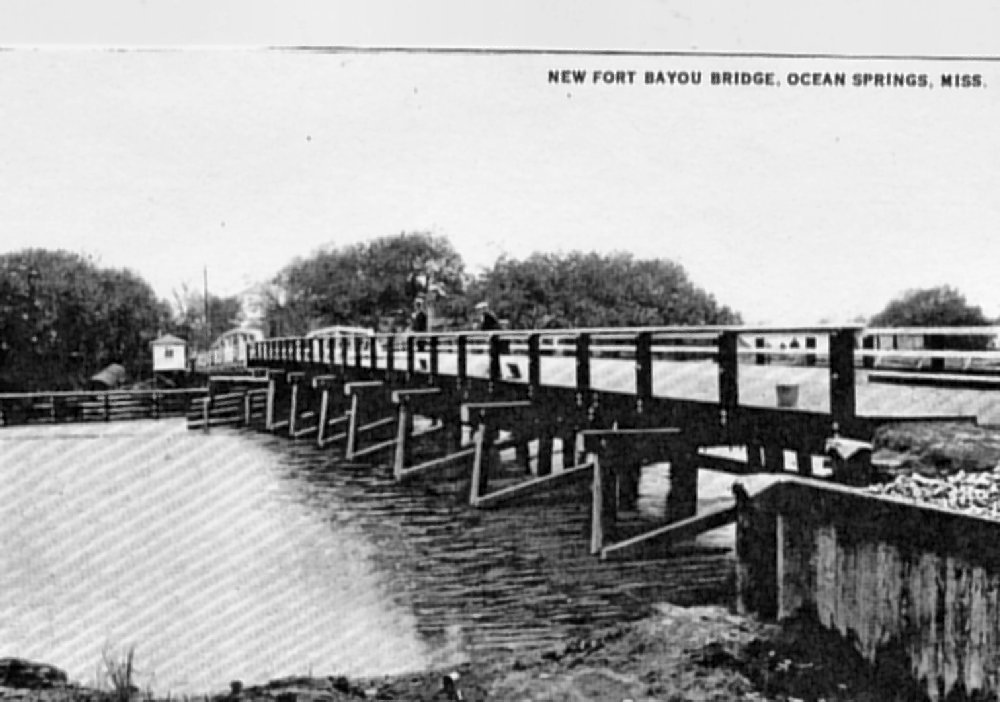
1929 Fort Bayou Bridge
J.K. Lemon
Prior to arriving in Ocean Springs in 1911, Mr. Lemon had made his livelihood with the Gulf & Ship Island railroad at Gulfport. He moved his family to Ocean Springs in 1911, to be near the salubrious waters of Ocean Springs. Mrs. Lemon, nee Sarah George McIntosh (1884-1939), suffered from eczema and it was hoped the water here would ameliorate her skin condition. Mr. Lemon died in 1929, leaving a young family:
George L. Lemon, Sara Lemon Anderson, Margaret Lemon Halstead (1913-1999), James Kirkpatrick Lemon (1914-1998), Bliss Lemon Pinkerton (d. 2001), Elizabeth Lemon Roberts (1921-2002), William A. Lemon (1922-1998), Kirk Shelly Lemon (1924-1944), and Fred L. Lemon.(J.K. Lemon, December 1996)
In addition to his efforts to erect the 1929 Old Fort Bayou bridge, Jackson County Beat Four Supervisor J.K. Lemon was a strong proponent and motivator for "Million Dollar" highway which joined Ocean Springs to the Alabama state line in 1926. Supervisor Lemon also lobbied aggressively for The War Memorial Bridge across the Bay of Biloxi from Biloxi to Ocean Springs. His daughter, Sara Lemon, cut the ribbon on June 3, 1930, officially opening the span. This new route removed the "Old Spanish Trail" designation from the St. Martin area. It now ran directly from Biloxi to Ocean Springs and east towards St. Augustine, Florida. Lemon’s eldest son, George Lemon, graduated in engineering from Mississippi State University and went on to become Bridge Engineer for the Mississippi State Highway Department. He was an integral part of the design team, which planned the 1962 Ocean Springs-Biloxi Bay bridge. George Lemon retired from the highway department in 1972.(The Ocean Springs News, May 3, 1962, p. 1 and The Ocean Springs Record, august 17,1972, p. 2)
Franklyn H. McGowen
In February 1929, the JXCO, Ms. Board of Supervisors approved the plans of their engineer, Franklyn H. McGowen (1894-1985), for a new bridge across Old Fort Bayou. McGowen had provided them with specifications and cost estimates for a 140-foot swing span with a 40-foot concrete girder span. His design also included for the approaches to the bridge to be placed on re-enforced concrete piers and creosoted timbers.(JXCO, Ms. Board of Supervisors Minute Bk. 13, p. 113)
F.H. McGowen was born at Chicago on June 8, 1894. He matriculated to the University of Wisconsin where he graduated circa 1915 with an engineering degree. The peripatetic nature of his work brought young McGowan to Vicksburg, Mississippi where he met and married Regina Peatross (1890-1969). A daughter, Jo Mary McGowen Bickham, was born at Pascagoula in 1924.(Jo M. Bickham, February 3, 2003)
Franklyn H. McGowan came to Pascagoula in 1924, to superintend the construction of the Million Dollar Highway, that portion of the concrete Old Spanish Trail, which transected Jackson County. In March 1927, Mr. McGowan was hired by the Jackson County, Mississippi Road and Protection Commission Board to design and engineer the seawalls and beach boulevards of the County. He also supervised the construction of the East and West Pascagoula River bridges in the late 1920s. The ferry across the West Pascagoula River was the last in Mississippi on the Old Spanish Trail.(The Jackson County Times, April 2, 1927, p. 1 and July 28, 1928, p. 1)
In 1936, the McGowans divorced in Alabama and Mrs. McGowan and daughter returned to Ocean Springs. Shortly thereafter, they visited relatives of Mrs. McGowan at Delta, Louisiana. Regina and Jo Mary McGowan resided on Washington Avenue. Jo Mary attended the Ocean Springs Public School graduating with the Class of 1942.(Jo M. Bickham, February 3, 2003 and The Daily Herald, July 31, 1936, p. 7)
Franklyn H. McGowan expired at Opelika, Alabama in October 1985, at the age of ninety-one. The seawalls at Ocean Springs and Pascagoula and the fifty-five odd years that 1929 Old Fort Bayou existed are certainly testaments to his engineering skills.(SSDI)
Public hearing
On March 16, 1928, a public hearing was held at the Ocean Spring City Hall. The District Engineer oversaw the mid-morning meeting and was interested in public input concerning navigation, location and plans for the new bridge proposed to span Old Fort Bayou at Ocean Springs. The preliminary plans for the bridge were for a drawless, solid steel span.(The Jackson County Times, March 3, 1928, p. 2)
Bids
Miller & Hutchinson, seawall contractor, was awarded the contract to build a timber bulkhead through the Fort Bayou marsh connecting Gulf Hills and Ocean Springs. Upon completion, the bulkhead was to be filled with dirt in preparation to complete a road.(The Daily Herald, February 9, 1929, p. 2)
In March 1929, the Nashville Bridge Company of Nashville, Tennessee was awarded the contract to provide a 140-foot steel swing span and machinery to operate the swing span for the new bridge spanning Old Fort Bayou. The cost was $17,982 for both items. R.C. Hutchinson, H.W. Miller, P.H. Miller, and H.L. Hutchinson operating as Miller-Hutchinson were designated by the Board of Supervisors to “construct re-enforced concrete pivot and rest piers and creosoted timber trestle approaches to the bridge over Old Fort Bayou”.(JXCO, Ms. Board of Supervisors Minute Bk. 13, p. 118-119)
Construction
By mid-June 1929, the Miller-Hutchinson pile driver was rapidly setting piling for the bridge foundation. It was anticipated that the piers would be set and ready to receive the bridge span by mid-July.(The Jackson County Times, June 22, 1929, p. 3)
The Miller-Hutchinson Company had completed all work by late August and was awaiting delivery of the swinging steel span, which had been pre-fabricated by the Memphis Steel Company. The first carload of steel span arrived at Ocean Springs by rail in mid-September 1929.(The Jackson County Times, September 7, 1929, p. 5 and September 14, 1929, p. 2 )
The 1929 Old Fort Bayou Bridge opened for vehicular traffic on October 24, 1929. The old bridge was disassembled shortly after.(The Jackson County Times, October 26, 1929, p.2)
After the completion of the Old Fort Bayou Bridge, the Miller-Hutchinson Company with the Stevens Brothers of St. Paul, Minnesota won the contract for building the three million dollar Bonnet Carre Spillway to protect New Orleans from flooding. P.H. Miller, senior partner of the organization, remained in Ocean Springs to finalize their business here.(The Jackson County Times, September 7, 1929, p. 5)
1958-1959 repairs
Plans to electrify the Old Fort Bayou Bridge and eliminate the mechanical draw were first proposed in December 1956.(The Ocean Springs News, December 6, 1956, p. 1)
A contract was let by Board of Supervisors for electrification of the Fort Bayou Bridge in early January 1958. The modern electrical system was completed in late 1958, by the Gulf Electric Company of Biloxi. (The Ocean Springs News, January 3, 1958, p. 1 and December 8, 1958, p. 1)
In early January 1959, the Fort Bayou Bridge was closed for approximately three weeks for major repairs to the steel decking on the span. Irby Brothers Machine Works of Gulfport were the contractors.(The Ocean Springs News, December 8, 1958, p. 1)
During the span’s repair, transportation for those pedestrians crossing the Old Fort Bayou bridge from the County side was provided by Cities Busses Service, while Dick Waters, managing director of Gulf Hills, placed a shuttle service from his resort to the span for those going to and returning from Ocean Springs. Gulf Hills anticipated revenue losses amount from $350 to $500 each day. The Merchants Committee of the Ocean Springs Chamber of Commerce was highly concerned about the impact of the closing of the Old Fort Bayou bridge upon the local economy.(The Gulf Coast Times, January 1, 1959, p. 1 and The Ocean Springs News, December 25, 1958, p. 1)
1962 bridge repairs
In January 1962, Al S. Johnson, port director of the Greater Port of Pascagoula, recommended to A.P. “Fred” Moran (1897-1967), president of the Jackson County Board of Supervisors that that the Fort Bayou road and bridge “should immediately be put in condition to handle heavy industrial traffic.” Accordingly, Mr. Moran began to work on this project, which was financed from the Port Operation and Development Fund.(JXCO, Ms. Board of Supervisors Minute Bk. 36, p. 457)
Contractor H.E. Wilson was in charge of this January-February 1962 project. It included replacing wood decking and asphalt on the Old Fort Bayou bridge with concrete decking and slabs. The wooden guardrail was replaced with a steel guard railing. Joe E. Krebs, foreman for this project, related that the used wooden decking would be conserved by the County for potential recycling.(The Ocean Springs News, February 15, 1962, p. 1)
1985 Old Fort Bayou Bridge
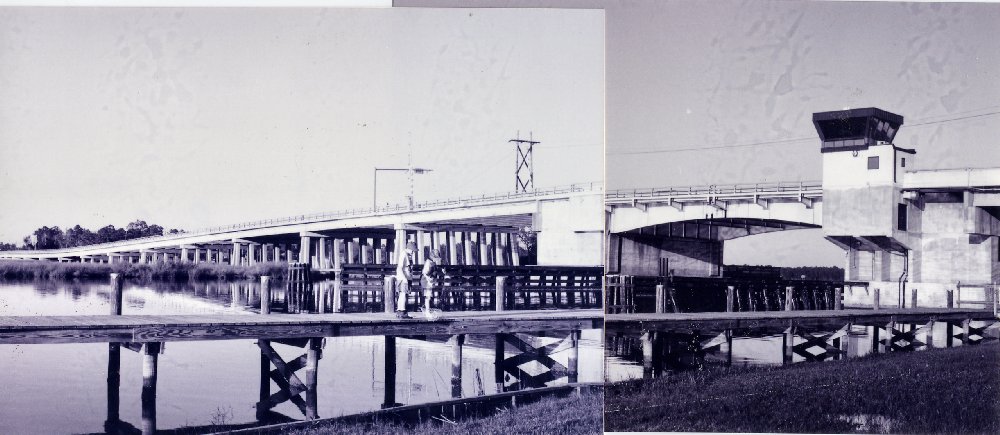
(images made January 1993)
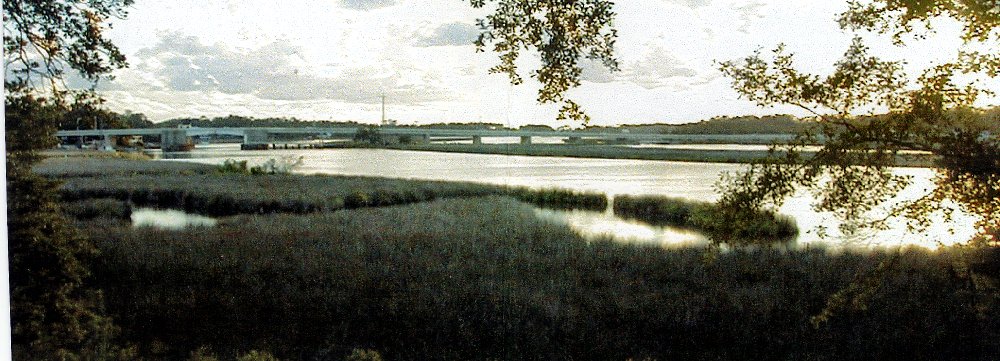
(image made July 1999)
By the early 1980s, it was obvious that a new span across Old Fort Bayou was essential. The old swing span was slow to open and its vertical clearance was so low that it had to be opened for almost any vessel. In addition, the two-lane road, which crossed the bridge, was inadequate for the traffic volume. Also a structural inspection of the old bridge had revealed defects, which obliged County officials to impose a 10-ton weight limit on the structure, thus thwarting necessary commercial trucks from utilizing the span.(Spencer & Assoc. OFB, Proj. No. 85-9385-00-002-20 P.E.)
Planning for this structure began in 1983, when the Board of Supervisors hired consulting engineers, Spencer & Associates, Inc., of Jackson, Mississippi. The $84,000 contract with the firm provided the Jackson County Board of Supervisors with the following: a schematic engineering design; an environmental assessment and impact statement; preparation of applications and supporting documents for government agencies; assistance with authorities having jurisdiction over the anticipated environmental impact and assistance with hearings on other public meeting that may be required.(The Ocean Springs Record, February 17, 1983, p. 1)
The Spencer & Associates plan called for the construction of a bascule or see-saw bridge and approaches to replace the 1929 swing span bridge. The new span was to be twenty-five feet high and situated slightly west of the old bridge. In addition, every effort to save the ancient oaks on the Aunt Jenny’s Restaurant site were to be explored. The proposed roadway for the new span would consist of four 12-foot wide traffic lanes between US 90 and Shore Drive in Gulf Hills. Also, an $8.3 million dollar Federal grant was secured from the Secretary Transportation had been approved.(Spencer & Assoc. OFB, Project No. 85-9385-00-002-20 P.E. and The Ocean Springs Record, March 10, 1983, p. 1)
Financing
Appropriately, Tommy Brodnax, Supervisor of Beat Four, was named project director of the Old Fort Bayou bridge plan. As such, he masterminded the financing of the $11.2 million dollar venture. A combination of Federal, State, and County pecuniary resources were integrated to fund the bridge and ancillary appurtenances. The Federal Highway Administration authorized $6.849 million dollars while a County bond issue raised the remainder of the funds for the bridge.(The Ocean Springs Record, September 29, 1983, p. 1 and October 31, 1985, p. 1)
Contract
Eight bids were received to erect the 1985 Old Fort Bayou bridge. A&L Construction Company of Hattiesburg was low bidder submitting a proposal of $7.73 million dollars. The company was allowed 270 working days to complete the project. An adverse weather clause in the agreement allowed them additional time.(The Ocean Springs Record, December 8, 1983, p. 1 and December 15, 1983, p. 1)
Eminent domain
Approximately $1 million dollars were budgeted to acquire land and right-of-way for the new bridge. Several businesses located on the north side of the bayou’s main channel were acquired by eminent domain. Among them was the Fort Bayou Fish Camp, a venerable, local landmark. Once owned by John J. “CoCo” Ryan (1881-1950) and Raphael Benezue (1902-1985), the camp was in the possession of Donald J. Benezue when the State acquired it for $72,500 in October 1983. Ironically, CoCo Ryan expired while fishing in Old Fort Bayou in November 1950. Mr. Benezue intended to close his fish camp in late November 1983.(The Ocean Springs Record, October 20, 1983, p. 1 and The Gulf Coast Times, November 24, 1950, p. 1)
Other prominent businesses to be closed on the bridge route were the Sportsman’s Lounge and Outdoor Adventures. Kenneth C. Davidson, a dentist, acquired a former veterinarian’s clinic and refurbished it as his dental office and sporting business, which he appropriately named “Outdoor Adventures”. In addition to his dental practice, Davidson and his spouse taught sailing, kayaking, basic skiing, and operated tours to all parts of the planet.(The Ocean Springs Record, February 2, 1984, p. 2 and Kenneth C. Davidson, February 18, 2003)
Breaking marsh
In mid-January 1984, local dignitaries and interested patrons were on hand to witness Trent Lott, then 5th Congressional District Representative; Tom Stennis, former Mayor of Ocean Springs and at the time associated with the Jackson County Port Authority; Chester McPhearson, Mayor of Ocean Springs; A.E. “Pete” Pierce, president of the Jackson County, Mississippi Board of Supervisors; and Bob Joiner, Southern District Highway Commissioner break ground for the new Old Fort Bayou bridge.(The Ocean Springs Record, January 19, 1984, p. 1)
Completion-Dedication
The 1985 Old Fort Bayou bridge was officially opened for vehicular traffic on July 8, 1985. Mark Hare, current Ocean Springs fire chief, and Terry Lindsey, were hired as part time bridge tenders. In August, the Mississippi Highway Department would take control of the bridge and utilize five tenders. The span was officially dedicated on November 9, 1985. Trent Lott cut the ribbon at the dedication ceremonies.(The Ocean Springs Record, July 11, 1985, p. 1 and November 14, 1985, p. 1)
Old Fort Bayou Channels
Shortly after Pierre Le Moyne, Sieur d’Iberville (1661-1706) and his French Canadian cohorts established their beachhead at present day Ocean Springs in April 1699, Iberville himself reconnoitered the Old Fort Bayou region. In his journal, the gallant French Canadian soldier of fortune reported the following: I went and examined the back side of the little bay and, with one man, I penetrated 4 leagues inland to examine the country. I found it very beautiful with pine woods, mixed with trees of other kinds in spots, many prairies, light sandy soil everywhere; I saw a good many deer. Deer are killed everywhere in the vicinity of the fort.(McWilliams, 1981, p. 96)
The earliest study of the channel at the mouth of Old Fort Bayou to remedy its ineffectiveness for deep draft vessel and barge navigation was conducted in March 1935, by the military engineers based in Mobile. It was believed by local entrepreneurs that pulp wood and other forest products could be shipped out of the Old Fort Bayou basin by water, if the bayou channel were deepened. At this time, Colonel R.S. Thomas, joined by Lieutenants G.E. Galloway and F.Z. Pirkey and H.I. Collins of the government office were given a guided tour of Old Fort Bayou and environs by A.P. “Fred” Moran (1897-1967), Harry R. Lee (1903-1951), and Mr. Murphy of Ocean Springs. The men traveled aboard the Margie M and after the voyage dined on seafood at the F&H Bar of Frederick Joseph Ryan (1886-1969) and Henry J. Endt (1910-1989) on Bowen Avenue. The military engineers were complementary, but required more information before a positive recommendation to their superiors in Washington D.C.( The Jackson County Times, May 5, 1934 and March 30, 1935, p. 1)
In March 1939, a channel was recommended for Old Fort Bayou by Colonel R.G. Powell, division engineer, based in New Orleans. It was to be 6 feet deep and 50 feet wide and run from Benjamin Point, now know as Fort Point, as far as the deep channel in the bayou.(The Jackson County Times, March 4, 1939, p. 1)
In June 1969, a 100-foot wide and 12-foot deep channel was recommended from the mouth of Old Fort Bayou upstream for 4.5 miles. The Toche Shipyard would benefit from the action.(The Ocean Springs Record, June 12, 1969, p. 1)
After the 1985 Old Fort Bayou Bridge was completed, The Friends of Old Fort Bayou, a local organization concerned with the environmental effects and pollution created by heavy industry, opposed any industrialization along Old Fort Bayou. Barge traffic in particular was considered deleterious to the well-being of the estuarine environment.(The Ocean Springs Record, August 22, 1985, p. 1)
Some Old Fort Bayou drowning incidents
Through the years, several people have lost their lives in the waters of Old Fort Bayou. Among them were:
Ernest and Adrian Garec
One of the earliest and saddest accidents occurred in October 1899, when Ernest L. Garec (1862-1899) and his son Adrian D. Garec (1887-1899) drowned near the ferry landing on Washington Avenue. They were returning from Biloxi on a flatboat when young Garec, a non-swimmer, lost his balance and plunged into the bayou. His father in a valiant effort to save his son perished with him. Their remains were interred in the Martin Ryan Cemetery on Bayou Porteaux.(The Pascagoula Democrat-Star, October 6, 1899, p. 3)
Alex King
Alex King (1901-1927), the son of G. Washington King (1865-1938) and Margaret Jane Belton King (1871-1955), resided in the Gulf Hills area. He was a clerk in the employ of the Bailey Drug Store, now Lovelace Drugs, on Washington Avenue. On the day before Independence Day 1927, Harold Nile of New Orleans and his amigo, Alex King, went for a splash in Old Fort Bayou near the bridge. While attempting to swim across the stream, King became fatigued and cried for assistance. An aged captain aboard a pulpwood barge in use by the Southern Paper Company, which had been moored near the old 1901 span, threw young King a large board for flotation. The struggling swimmer failed to reach the plank and drowned. King’s body was found after a two-hour dragline search. Revival attempts by several physicians and employees of the Mississippi Power Company were in vain. Alex King’s corporal remains were laid to rest in the Evergreen Cemetery within eyesight of the scene of his tragic death. In addition to his parents, siblings, Van King and Ella King, survived him.(The Jackson County Times, July 9, 1927, p. 1 and The Daily Herald, July 4, 1927, p. 1)
Frank E. Galle III
In July 1928, Frank Edward “Frankie” Galle III (1922-1928), the son of Frank E. “Kiddo” Galle Jr. (1900-1986) and Theone Picou Galle (1901-1922), became a victim of the tanbark hued waters of Old Fort Bayou. The Galle child was on a day outing with his mother and friends. He disappeared while swimming in the bayou with his companions. Frankie Galle’s remains were interred in the Evergreen Cemetery.(The Jackson County Times, July 7, 1928, p. 3)
Kiddo Galle was a well-respected carpenter and building contractor, who built many homes in the Ocean Springs area during his lifetime. Galle’s skills ran the gamut of construction as he was qualified to do plumbing, bricklaying, as well as general carpentry. The Galle’s gave birth to another son, Waide Joseph Galle, in 1929.
Maurice Davis
Ironically, amidst the celebration on the day that the Empire of Japan unconditionally surrendered to America in mid-August 1945, an American serviceman, First Lt. Maurice Davis (1918-1945) of Watsonville, California, lost his life in Old Fort Bayou. Davis was stationed at Keesler AFB and was a veteran of the ETO where he had been awarded the Air Medal, Distinguished Flying Cross, and other military citations for his admirable service. Lt. Davis drowned while attempting to save Dewayne Webb, a youngster, who had fallen from a barge into the bayou waters. John J. “CoCo” Ryan, proprietor of Ryan’s Fishing Camp, arrived by skiff in time to rescue the Webb lad before he perished. Lt. Davis resided at Ocean Springs with his spouse, Alma Lee Davis and their baby, Robert Davis (b. 1944).(The Jackson County Times, August 1945 and H. Carl Byrd, February 18, 2003)
Leroy C. Trotter
Leroy C. Trotter (1959-1970), the son of the Reverend Doctor and Mrs. Jesse L. Trotter, drowned while wading in Old Fort Bayou. Young Trotter, a native of Greenwood, Mississippi, was on an outing with the Cub Scouts in Windsor Park. His corporal remains were interred in the Evergreen Cemetery at Ocean Springs.(The Ocean Springs Record, May 21, 1970, p. 2)
REFERENCES:
Jerome Lepre, Catholic Church Records Diocese of Biloxi, Mississippi, Vol. I, (Diocese of Biloxi: Biloxi, Mississippi-1991).
Richebourg Gaillard McWilliams, Iberville's Gulf Journals, (University of Alabama Press: University, Alabama-1981).
Chancery Court Causes
Jackson County, Mississippi Chancery Court cause No. 1739, “Mrs. Zetta Williams Geiger v. Peter Geiger”, September 1908.
Journals
The Biloxi Herald, “Ocean Springs”, February 7, 1891.
The Biloxi Herald, “Ocean Springs”, February 15, 1891.
The Biloxi Herald, “Ocean Springs”, November 14, 1891.
The Biloxi Herald, “Ocean Springs”, January 2, 1892.
The Biloxi Herald, “Local Happenings”, May 21, 1892.
The Biloxi Herald, “Coast Items”, May 29, 1897.
The Biloxi Daily Herald, “Local News”, September 2, 1898, p. 8.
The Biloxi Herald, “At Daylight”, August 3, 1901.
The Biloxi Daily Herald, “City News”, October 23, 1901.
The Biloxi Daily Herald, “City News”, December 3, 1901.
The Biloxi Daily Herald, “City News”, December 6, 1901.
The Daily Herald, “Ocean Springs”, March 1, 1922.
The Daily Herald, “Ocean Springs”, February 13, 1923, p. 3.
The Daily Herald, “Alec King Loses Life In Bayou”, July 4, 1927.
The Daily Herald, "Let contract for new Ocean Springs road", February 10, 1928.
The Daily Herald, “Ocean Springs”, July 31, 1936.
The Daily Herald, “Mrs. Riehm Buried”, December 3, 1938.
The Daily Herald, “Former Resident of Ocean Springs Is Carnegie Winner”, October 30, 1951.
The Gulf Coast Times, “Hoof It”, January 1, 1959.
The Jackson County Times, “Local News Items”, December 9, 1917.
The Jackson County Times, “Karl Maxwell Rescues Drowning Bridgeman”, February 18, 1922.
The Jackson County Times, “Sherwood Bradford Succumbs To Injuries”, March 4, 1922.
The Jackson County Times, “Leonard Fayard Sr.”, June 2, 1923.
The Jackson County Times, “Local and Personal”, July 24, 1926.
The Jackson County Times, “F.H. McGowan Named Seawall Engineer”, April 2, 1927.
The Jackson County Times, “Popular Local Boy Drowned In Fort Bayou”, July 9, 1927.
The Jackson County Times, “Fort Bayou Bridge hearing at City Hall, March 16”, march 3, 1928.
The Jackson County Times, “Cadmus H. Alley, 92 Dies At Pascagoula”, June 16, 1928.
The Jackson County Times, “Son of Frank Galle Jr. Drowned In Ft. Bayou”, July 7, 1928.
The Jackson County Times, “Bridge At Gautier Now Open To Traffic”, July 28, 1928.
The Jackson County Times, “Local and Personal”, June 22, 1929.
The Jackson County Times, “Local and Personal”, September 7, 1929.
The Jackson County Times, “Local and Personal”, September 14, 1929.
The Jackson County Times, October 26, 1929.
The Jackson County Times, “The F. & H. Bar (advertisement)”, May 5, 1934.
The Jackson County Times, “Inspection Is Made of Fort Bayou Channel”, March 30, 1935.
The Jackson County Times, “Channel in Old Fort Bayou Recommended”, March 4, 1939.
The Jackson County Times, “Young Lieutenant Drown While Saving Boy’s Life”, August 15?, 1945.
The New Orleans Daily Picayune, July 24, 1892.
The Pascagoula Chronicle-Star, “Funeral of Mrs. C.H. Alley”, May 1917.
The Pascagoula Democrat-Star, “Ocean Springs News”, April 17, 1891.
The Pascagoula Democrat-Star, “Ocean Springs News”, October 28, 1891.
The Pascagoula Democrat-Star, “Ocean Springs Locals”, December 13, 1901.
The Ocean Springs News, “Bridge To Be Electrified”, December 6, 1956.
The Ocean Springs News, “Hail 1957 as Year of Greater Progress by Co., City Leaders”, January 3, 1958.
The Ocean Springs News, “Ft. Bayou Bridge Closes Next Month”, December 8, 1958.
The Ocean Springs News, “City Busses and Gulf Hills Shuttle Trips Solve Bridge Crisis”, December 25, 1958.
The Ocean Springs News, “Fort Bayou Bridge Nearly Completed”, February 15, 1962.
The Ocean Springs News, “Lemons Prominent Bridge History”, May 3, 1962.
The Ocean Springs Record, “Further Progress on Fort Bayou Project”, June 12, 1969.
The Ocean Springs Record, “Leroy Trotter Funeral Held Today”, May 21, 1970.
The Ocean Springs Record, “Bridge Builder Is Retiring”, August 17, 1972.
The Ocean Springs Record, “Bridge plans move right along”, February 17, 1983.
The Ocean Springs Record, “Brodnax (sic) says bridge plans will meet deadline”, March 3, 1983.
The Ocean Springs Record, “Ft. Bayou Bridge ‘in the bag’”, September 29, 1983.
The Ocean Springs Record, “Fort Bayou Fishing Camp: Beaugez (sic) to close down, no relocation plans”, October 20, 1983.
The Ocean Springs Record, “Brodnax gives Chamber bridge update”, December 8, 1983.
The Ocean Springs Record, “Fort Bayou contract awarded”, December 15, 1983.
The Ocean Springs Record, “Ground breakers praise cooperation”, January 19, 1984.
The Ocean Springs Record, “Road to bridge get explanation”, January 19, 1984.
The Ocean Springs Record, “Bridge work”, February 2, 1984.
The Ocean Springs Record, “Work canal hits rough waters”, February 16, 1984.
The Ocean Springs Record, “Ft. Bayou Bridge Work Will Slow Traffic”, January 31, 1985.
The Ocean Springs Record, “Fort Bayou bridges opens”, July 11, 1985.
The Ocean Springs Record, “Friends of Fort Bayou oppose heavy industry”, August 22, 1985.
The Ocean Springs Record, “Fort Bayou Bridge dedication set”, October 31, 1985.
The Ocean Springs Record, “Dedication Ceremonies”, November 14, 1985.
The Ocean Wave, “Personal Mention”, November 28, 1896.
The Pascagoula Democrat-Star, “Ocean Springs News”, April 22, 1892.
The Pascagoula Democrat-Star, “Ocean Springs News”, June 10, 1892.
The Pascagoula Democrat-Star, “Ocean Springs Local News”, July 20, 1894.
The Pascagoula Democrat-Star, “Ocean Springs Locals”, October 30, 1896.
The Pascagoula Democrat-Star, “Ocean Springs Locals”, November 20, 1896.
The Pascagoula Democrat-Star, “Ocean Springs Locals”, August 27, 1897.
The Pascagoula Democrat-Star, “Ocean Springs Locals”, June 17, 1898.
The Pascagoula Democrat-Star, “Ocean Springs Locals”, August 19, 1898.
The Pascagoula Democrat-Star, “Ocean Springs Locals”, October 6, 1899.
Other Bridges in Ocean Springs
Other Bridges in Ocean Springs ray Wed, 04/21/2010 - 00:30- 309 views
CSX (L&N) Railroad Bridge
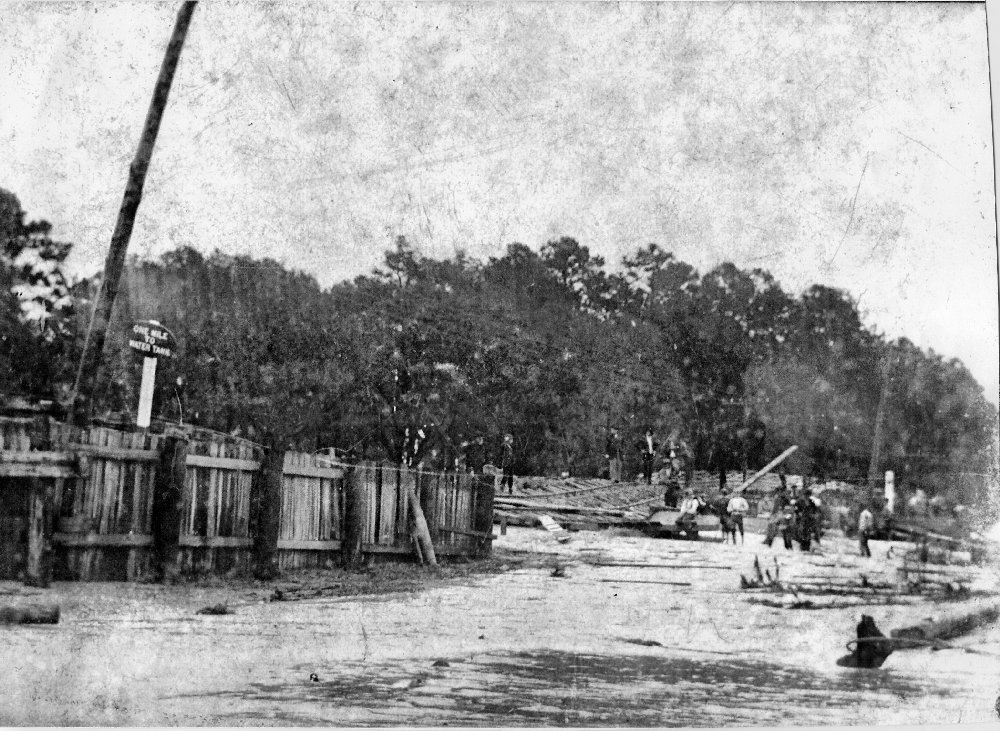
L&N Railroad Bridge
(image made October 2, 1893)
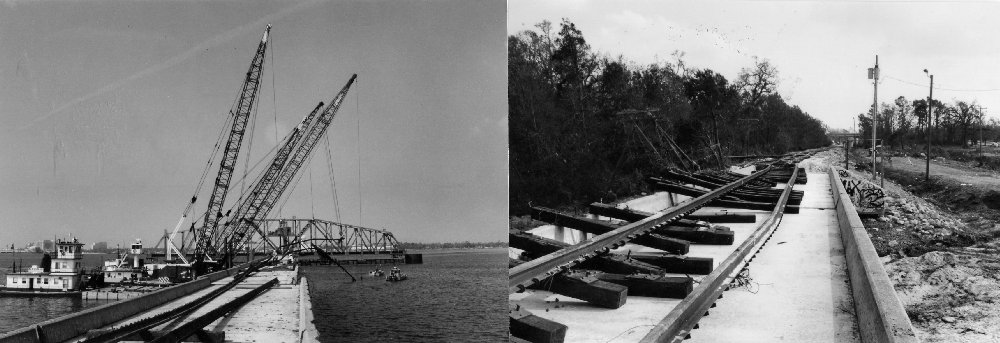
post-Katrina CSX Railroad Bridge
(images made September 2005)
Some railroad history
On October 29, 1870, the New Orleans, Mobile, & Chattanooga Railroad, which was chartered in 1866, completed the line between Mobile and New Orleans. Rail service commenced on November 21, 1870. The N.O.M. & C. was reorganized on April 18, 1871 and became the New Orleans, Mobile & Texas Railroad. The L&N Railroad leased the property of the N.O.M. & T. on May 8, 1880. On October 5, 1881, the L&N Railroad purchased all the assets of the reorganized New Orleans, Mobile, & Texas Railroad for $6,000,000. This acquisition included the Ponchartrain Railroad which ran seven mile from New Orleans to Milneburg on Lake Ponchartrain, and the one hundred forty-one miles of track, depots, the creosote plant at West Pascagoula (Gautier), stations, station houses, section houses, rolling stock, etc. between Mobile and New Orleans.(JXCO, Ms. Land Deed Bk. 5, p. 299)
In the spring of 1919, the L&N Railroad announced that a new railroad bridge would be erected across Biloxi Bay about fifty feet from the existing span.(The Daily Herald, April 11, 1919, p. 1)
In late September 1922, Henry Ryan (1899-1947), bridge tender, discovered that the L&N Railroad Bridge was on fire. Help arrived in time to save the structure.(The Daily Herald, October 2, 1922, p. 1)
In April the Mississippi Public Service Commission accepted the L&N Railroad’s request to close their Ocean Springs depot.(The Ocean Springs News, April 15, 1965, p. 1)
In December 1982, the L&N Railroad merged with the Seaboard Coast Line Railroad and the name of the combined corporations became the Seaboard Systems Railroad, Inc. On July 1, 1986, the Seaboard Systems Railroad, Inc. changed its name to CSX Transportation, Inc.
2000 fire
On January 22, 2000 the railroad crossties on the swing span caught fire. The fire was contained by responding units from the Coast Guard at Gulfport; Marine Patrol, Sea Tow, and the CSX Railroad. These vessels were not equipped with sufficient pumping capacity to kill the fire. Later Fire personnel from Ocean Springs and a Coast Guard vessel from Pascagoula arrived with special floating fire pumps. With these teams working on opposite sides of the span, the conflagration was extinguished in approximately two hours. Precipitation fell during the blaze. Immediately CSX crews began to repair the bridge for rail service. Both marine and rail service were prohibited from crossing the span until it was deemed safely repaired and inspected.(The Ocean Springs Record, January 27, 2000, p. 1 and The Sun Herald, January 23, 2000)
Katrina
Unlike the US 90 Highway Bridge across Biloxi Bay and the 1930 War Memorial Bridge, utilized as a fishing pier since 1962, the CSX Railroad survived the wrath of Hurricane Katrina in late August 2005. All of the tracks were washed or floated off the structure. In September 2005 derrick barges with the guidance of scuba divers were lifting the track from the bottom of Biloxi Bay and placing them on the road bed of the bridge. The rail line between Mobile and New Orleans suffered about $250,000,000 in damage and the CSX expected the repairs to take about six months.
Other small bridges
Davis Bayou Bridge
New bridge opened on November 12, 1993. It is 285-feet long and cost $180,000.(The Ocean Springs Record, March 17, 1994, p. 1)
Heron Bayou Bridge
New bridge opened in March 1994. It is 190 feet in length and cost $106,000.(The Ocean Springs Record, March 17, 1994, p. 1)
REFERENCES:
The Daily Herald, "New Draw-Bridge In Jackson County", April 11, 1919, p. 1.
The Daily Herald, "Fire discovered in time to save L&N Railroad Bridge", October 2, 1922.
The Ocean Springs News, April 15, 1965, p. 1.
The Ocean Springs Record, "Heron Bayou bridge opens to traffic", March 17, 1994, p. 1.
The Ocean Springs Record, "Firefighters extinguish bridge blaze", January 27, 2000.
The Ocean Springs Record, “Bridges may be fixed in 60 days", July 24, 2003, p. A1.
The Sun Herald, "CSX bridge burns", January 23, 2000, p. A1.
The Shearwater Bridge
The Shearwater Bridge ray Wed, 04/21/2010 - 00:26- 411 views
The Shearwater Bridge is situated in Ocean Springs, Mississippi and spans the entrance to the "back harbor" of the Ocean Springs Inner Harbor. The small bridge is the division between General Pershing Avenue and Shearwater Drive. Although their is a harbor here today which was dredged out in the 1930s, this area is clearly portrayed on the 1850 Biloxi Bay Map created by the US Coast Survey, as a very small bayou. This has been corroborated by the author in interviews with Marguerite Seymour Norman (1908-2001) who remembers that the mouth of the small bayou, then called Mill Dam Bayou, was so small that it could be crossed at low tide by laying a large board across its mouth.
Bayou Baiziene
In August 1846, the time of the partition of the Widow LaFontiane Tract, Section 37, T7S-R8W, the small bayou that transected the marsh and flowed into Biloxi Bay was called Bayou Baiziene. The Widow LaFontiane Tract is composed of 237-acres bounded on the north by Government Street, east by General Pershing Avenue, south by the Bay of Biloxi, and wet by Martin Avenue.(JXCO, Ms. Land Deed Bk. 4, p. 548)
Mill Dam Bayou
In the 19th Century, Bayou Baiziene became know as the Mill Dam Bayou. Captain Ellis Handy (1891-1963) who in the late 1940s wrote a column "Know Your Neighbor" for The Gulf Coast Times, interviewed local historian, Joe Lewis "Dode" Schrieber (1873-1951). Mr. Schrieber related that the "Mill Dam" was created by William Gray Kendall (1812-1872), an entrepreneur from Kentucky, who erected a weir or small dam across the bayou to trap tidewater and provide a source of energy to grind corn or other grains at a mill located on that site. The grinding wheel fell into the mud and silt of the bayou when it was abandoned in the 1870s.(The Gulf Coast Times, August 26, 1949).
Naturally, the road crossing the dam was called the Mill Dam Road. It became known as, Anola, probably for W.G. Kendall's daughter, Anola Philomela Kendall (1843-1899). We know this thoroughfare today as Shearwater Drive.
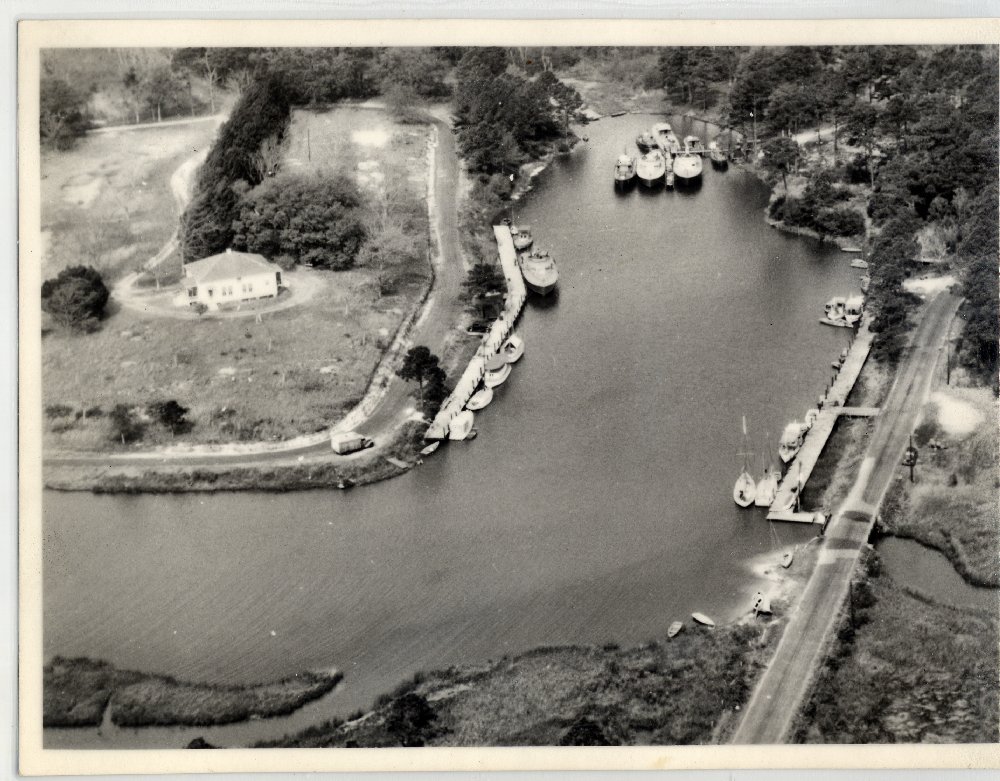
1936 Shearwater Bridge
[circa 1944 aerial view of US Army Crash Boat Base and Shearwater Bridge]
1936 Bridge
In January 1936, the old bridge across the "Mill Dam" was replaced. The refurbished span opened for road traffic on January 30, 1936. Ed Voivedich in his Model T Ford was the first to cross the new span.(The Jackson County Times, January 25, 1936, p. 1 and February 1, 1936, p. 3)
1958 Bridge
Construction of the 1958 Shearwater Bridge was commenced in January 1958 by Newsom Construction Company. The18-foot tall bridge across the Ocean Springs Inner Harbor cost $17,000. The bridge was named "Shearwater" to honor the Shearwater Pottery and the George Walter Anderson family for their contribution to the development of the Ocean Springs Inner Harbor.(The Ocean Springs News, January 16, 1958, p. 1)
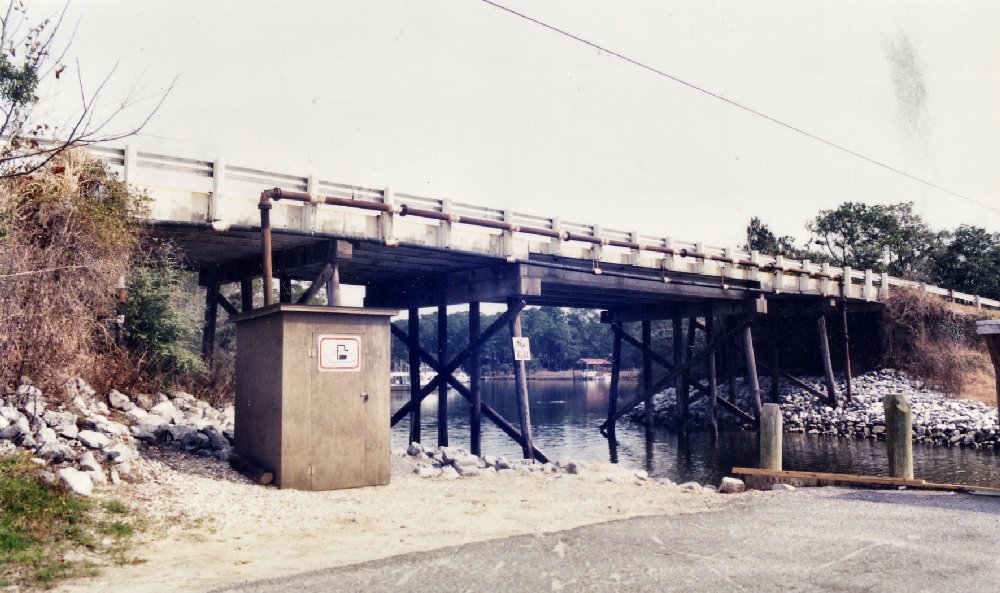
1958 Shearwater Bridge
[image made February 2002]
2003 Bridge
The 1958 Shearwater Bridge ceased operations in October 2003 due to concerns for public safety. It had been closed for repairs in October 2001. In late May 2003, construction began on a new span across the small craft harbor at Ocean Springs. The bridge erection was supervised by Batson & Brown Inc. for $360,000. Subcontractor, the Tony Parnell Construction Company, built the structure.(The Mississippi Press, May 30, 2002, p. A-1, The Sun Herald, September 16, 2003, p. A3)
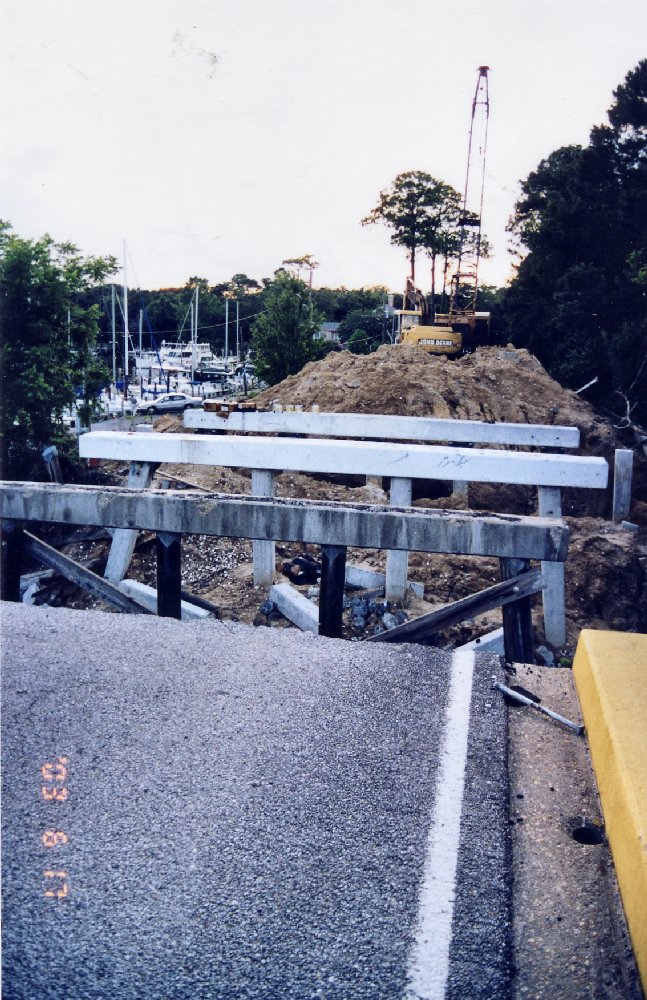
2003 Shearwater Bridge under construction
[image made June 2003]
Aesthetics
Dedication
The new Shearwater Bridge was dedicated on April 20, 2004. A bottle of champagne was broken on structure by Marjorie A. Ashley, the daughter of Peter Anderson (1903-1984), potter James Anderson, the son of Peter Anderson, and his spouse, Margaret Hollingsworth Anderson.(The Ocean Springs Record, April 22, 2004, p. A1)
The plaque placed on the structure reads as follows:
SHEARWATER BRIDGE
OPENED OCTOBER 8, 2003
This bridge was built through the efforts of: The City of Ocean Springs Mayor & Board of Aldermen
The Jackson County Board of Supervisors
The Historic Ocean Springs Association (HOSA)
The Taxpayers of the City of Ocean Springs & Jackson County
Post-Katrina improvements
As part of the US Army Corps of Engineers Mississippi Coastal Improvements Program, work was commenced in March 2009 to protect the elevated road bed on both sides of the span from erosion.(The Ocean Springs Record, March 26, 2009, p. 15)
REFERENCES:
Charles E. Schmidt, Ocean Springs French Beachhead, (Lewis Printing Services: Pascagoula, Mississippi-1972), p.
The Bay Press, “HOSA to sponsor additional costs of Shearwater Bridge”, April 2, 2002, p. 1.
The Jackson County Times, “Rebuild bridge on the ‘Mill Dam’”, January 18, 1936, p. 3.
The Jackson County Times, “Mill Dam Bridge nears completion”, January 25, 1936, p. 1.
The Jackson County Times, “The Column”, February 1, 1936.
The Mississippi Press, “Shearwater bridge design offered”, January 16, 2002.
The Mississippi Press, “New Shearwater Bridge Under Construction”, May 30, 2003.
The Ocean Springs News, “Let Contract on Shearwater Dr. Bridge Work”, January 16, 1958.
The Ocean Springs Record, “Majority wins debate over bridge on Shearwater”, November 1, 2001.
The Ocean Springs Record, “Objections stall harbor bridge”, February 20, 2002.
The Ocean Springs Record, “Bridge replacement hampered by delays", July 11, 2002, p. A1.
The Ocean Springs Record, “Harbor Bridge held up”, January 23, 2003, P.A-1.
The Ocean Springs Record, “Bridge hurdles gone”, May 15, 2003, P.A-1.
The Ocean Springs Record, “Bridges may be open in 90 days”, June 26, 2003.
The Ocean Springs Record, “Bridges may be fixed in 60 days", July 24, 2003, p. A1.
The Ocean Springs Record, “City pays bill despite bridge flaws, July 24, 2003, p. A1.
The Ocean Springs Record, “Shearwater Dedication”, April 22, 2004.
The Ocean Springs Record, “Shearwater Bridge improved as part of Corps' Coastal Improvement Program", March 26, 2009.
The Sun Herald, “Shearwater Bridge plans get new flair”, January 16, 2002.
The Sun Herald, “Bridge redo delayed", March 3, 2003, p. A2.
The Sun Herald, “Ocean Springs gets permit for Shearwater Bridge”, May 3, 2003.
The Sun Herald, “Shearwater Bridge to open in two weeks", September 16, 2003, p. A3.
Weeks Bayou Bridge
Weeks Bayou Bridge ray Wed, 04/21/2010 - 00:27- 338 views
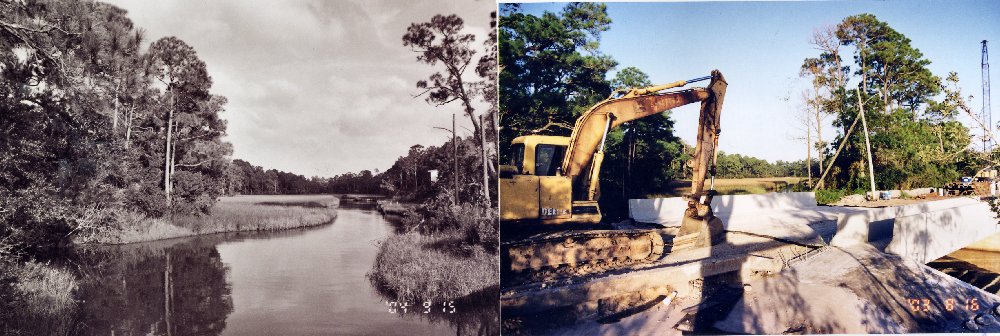
Weeks Bayou and bridge under construction
(images made September 2004 and August 2003)
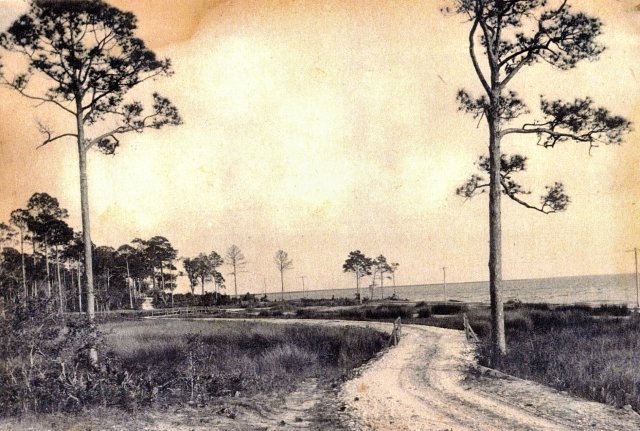
circa 1905
Weeks Bayou
Weeks Bayou is a small perennial, tidal stream situated in Section 29 and Section 32, T7S-R8W, Jackson County, Mississippi. It drains an area of approximately 600 acres and flows into the Bay of Biloxi where it transects Shearwater Drive-East Beach Drive forming the boundary between the two thoroughfares. Weeks Bayou is scenic and is an important food source for marine and terrestrial animals.
The Weeks family
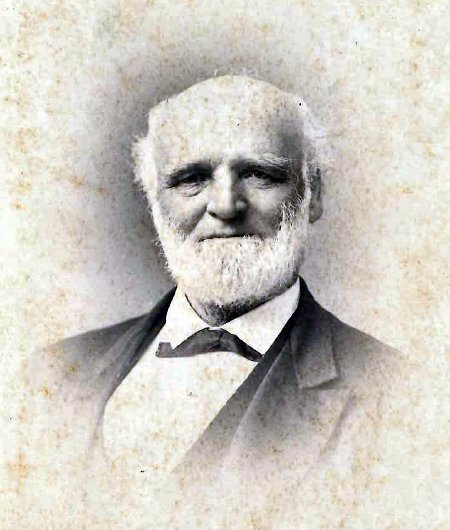
Weeks Bayou was named for the Silas Weeks family. Silas Weeks (1823-1901) was a Maine native possibly from Bath; retired sea captain and New Orleans shipping agent. In July 1879, Matilda Rayne Weeks (1830-1912), the spouse of Captain Weeks, acquired a large parcel of land facing Deer Island between the Mill Dam Bayou (now Ocean Springs Inner Harbor) and a small bayou, which became known as Weeks Bayou from John I. Kendall (1841-1898) and Mary E. Kendall of New Orleans. The Weeks tract was east of the William Gray Kendall (1812-1872) estate, which centered about the present day Hanson-Mitchell Estate, called Shadowlawn, on Shearwater Drive. Here, the Weeks family erected a large summer home, which they appropriately named, "Anchorage". Captain Weeks retired here raising poultry and growing vegetables until his demise in January 1901. "Anchorage" was legated to his daughter, Jessie Weeks Boyd, and later owned by her daughter, Miss Jessie M. Boyd (1881-1963). It is believed to have been demolished in the 1940s.
Matilda Rayne Weeks was born in London, England of Robert W. Rayne and Mary B. Langdon. With Silas Weeks, she reared a family consisting of four daughters: Ada W. Depass (1851-1909), Jessie W. Boyd (1855-1932), Hattie W. Darsey (1858-1939), and Mamie W. Rice (1864-1937).
Ada Weeks Depass married David Depass (1850-1926) of New Orleans. He made his livelihood dealing in stocks and cotton futures. In June 1890, they purchased what we know today as the Shearwater Pottery of the George W. Anderson (1861-1937) family from Albert Baldwin (1843-1912), a dry goods merchant and entrepreneur of New Orleans. They had one daughter, Hattie Virginia Depass (1882-1926+), who married Howard Hall. The Halls resided at Chicago.
Jessie Weeks Boyd married a Texan, William Boyd. Their children were Silas W. Boyd (1876-1950) and Jessie M. Boyd (1881-1963). Silas W. Boyd made a career in the Mississippi lumber business operating out of Jackson, while his sister, Miss Jessie M. Boyd, gave her life helping others primarily with the American Red Cross. She was at the scene of many of the great floods of the 1920s and 1930s, including the infamous August 1936, Johnstown, Pennsylvania disaster.
Hattie Weeks Darsey (1858-1939) was born at sea possibly on her father's ship. She married Lowndes A. Darsey (1849-1929), a Methodist minister, from Georgia. The Reverend Darsey came to the Mississippi Conference circa 1904, and served Methodist Episcopal churches at Ocean Springs and Pascagoula. The Darsey children were: L.A. Darsey Jr., J.W. Darsey, G.U. Darsey, Rison C. Darsey, Mrs. Joe Zink, and Mrs. Lee Hammond.
Mamie Weeks Rice (1864-1937) married George A. Rice (1860-1942) of New Orleans. They had one child, Ethel Weeks Rice (1887-1969).
In May 1883, Captain Silas Weeks acquired sixty acres of land on East Beach. This purchase precipitated a legal action in the Chancery Court of Jackson County, Cause No. 416, "Martha H. Hilzeim v. Mary E. Snipes, Silas Weeks, et al", filed February 1892. The disputed tract of Captain Weeks at East Beach was located in Governmental Lot 4, Section 32, T7S-R8W.
Concrete bridge
Probably the first 'permanent' bridge to be built across Weeks Bayou occurred in the late 1940s, when the seawall on East Beach was built. In early August 1949, machinery and equipment were placed on the East Beach road to commence building a seawall from Weeks Bayou that " will run east until the money run out." (The Gulf Coast Times, August 5, 1949, p. 1)
The Weeks Bayou span was closed in January 2003, when it was declared unsafe. A new bridge was commenced shortly thereafter. The work was slow and onerous due to the large amount of concrete and steel, which had to be by-passed from the construction of the former span.(The Ocean Springs Record, June 26, 2003, p. A1)
REFERENCES:
The Mississippi Press, "Emergency declared to replace OS Bridge", January 14, 2003, p. A-1.
The Gulf Coast Times, "Works Starts On Sea Wall", August 5, 1949.
The Ocean Springs Record, "Bridges may be open in 90 days", June 26, 2003, p. A1.
The Pascagoula Democrat-Star, "Ocean Springs Locals", June 22, 1900.